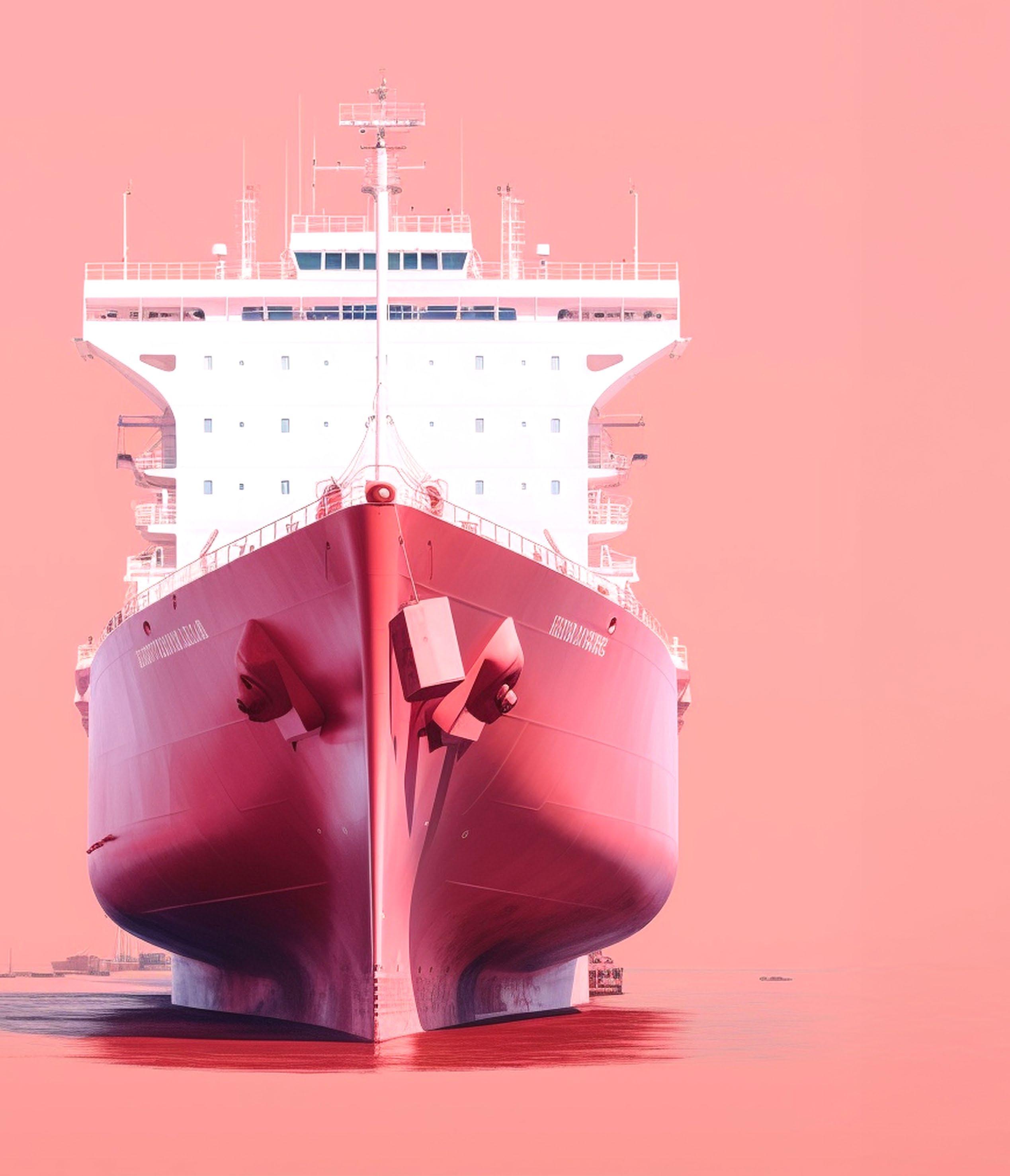
IN THE PINK
How the latest coatings keep ships in full health SMART
FIT
Why artifical intelligence is a trusted option on board CALLS TO ACTION
Stay ahead of the latest environmental regulations


How the latest coatings keep ships in full health SMART
Why artifical intelligence is a trusted option on board CALLS TO ACTION
Stay ahead of the latest environmental regulations
Stay ahead. Stay compliant. Stay efficient.
Compliance should not disrupt your business. Partner with us to navigate regulatory challenges and optimize the performance of your fleet. Whether you are investing in new builds or retrofits, with Ecospray’s EGCS and Carbon Capture solutions, you can reduce pollutants and lower your carbon footprint.
Turn compliance into a long-term advantage with our Service and Training programs that ensure your team operates with confidence and efficiency.
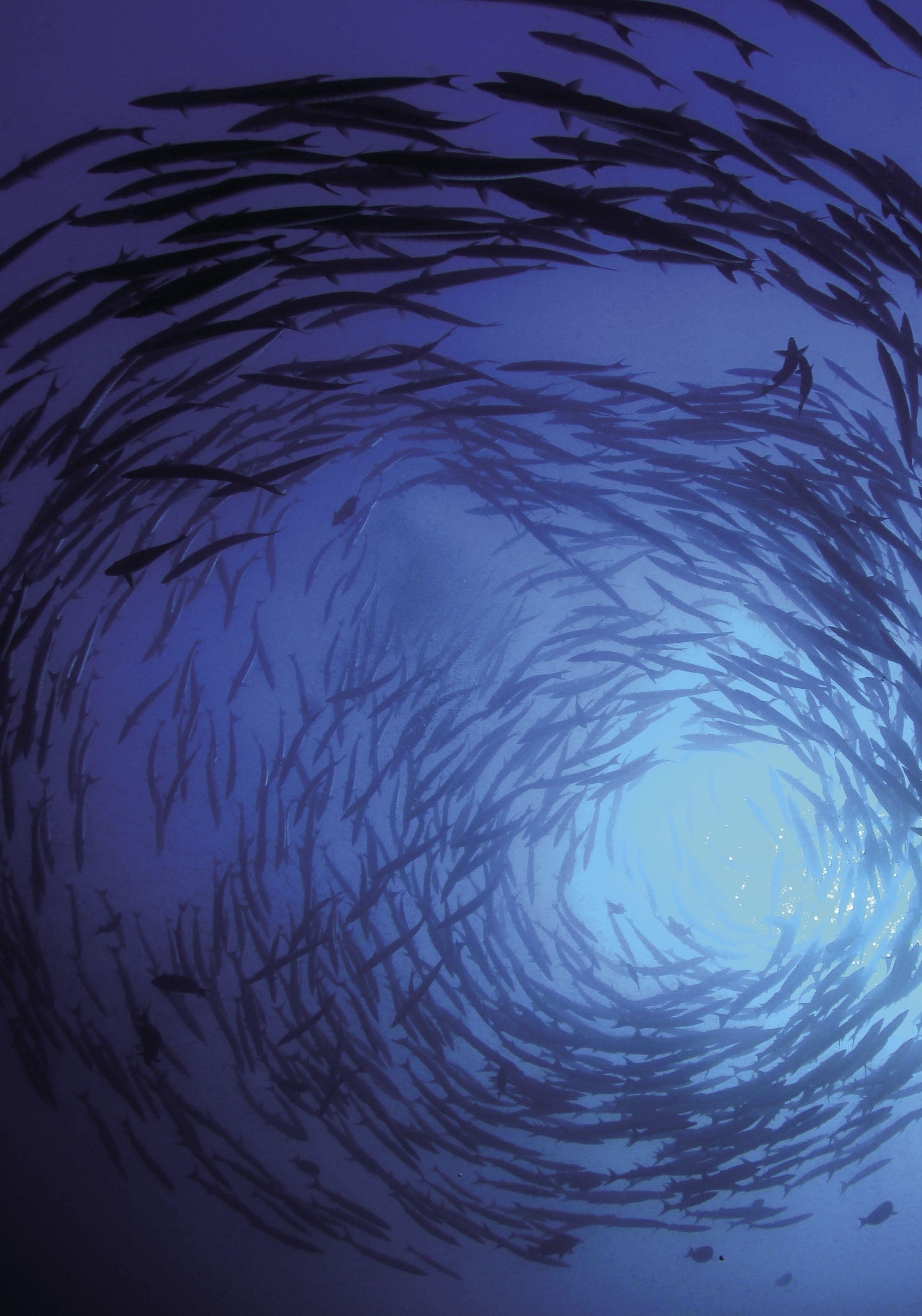
Decarbonization
Carbon Capture with Amine | Carbon Capture with Calcium Hydroxide | MCFC Pollution Containment
EGCS | DeNOx SCR | Methane slip reduction | WESP Discover our Technologies for the Planet

Sandra Speares Editor, Clean Shipping International
Safety continues to be one of the most important elements of the onboard maritime experience. It is essential that those on board do not lose sight of the correct ways of working, ensuring the safety of all crew. Today, artificial intelligence (AI) is being employed to improve onboard safety, as well as the eco-friendly performance of vessels.
In this edition of Clean Shipping International, we speak to Osher Perry, CEO of maritime tech company ShipIn about the role that AI plays in the shipping industry (see page 62). India, for example, is one country that has fully embraced the role AI can play and has put in place systems on board its vessels to improve safety procedures.
There are plenty of well-documented incidents at sea where seafarers find themselves in high-risk situations, in cases where they may be overloaded with work. With that in mind, one of the most important factors is ensuring that any AI systems are serving the crew and not obstructing them when they are trying to do their job.
With safety comes improved environmental performace. In addition to the role of AI in the maritime industry, we take a look in this edition at how environmental efficiency is being enhanced within the various sectors of shipping, including alternative fuels, wind power, paints and coatings, and the handling of ballast water in a safe manner.
We hope that you enjoy reading this edition of Clean Shipping International
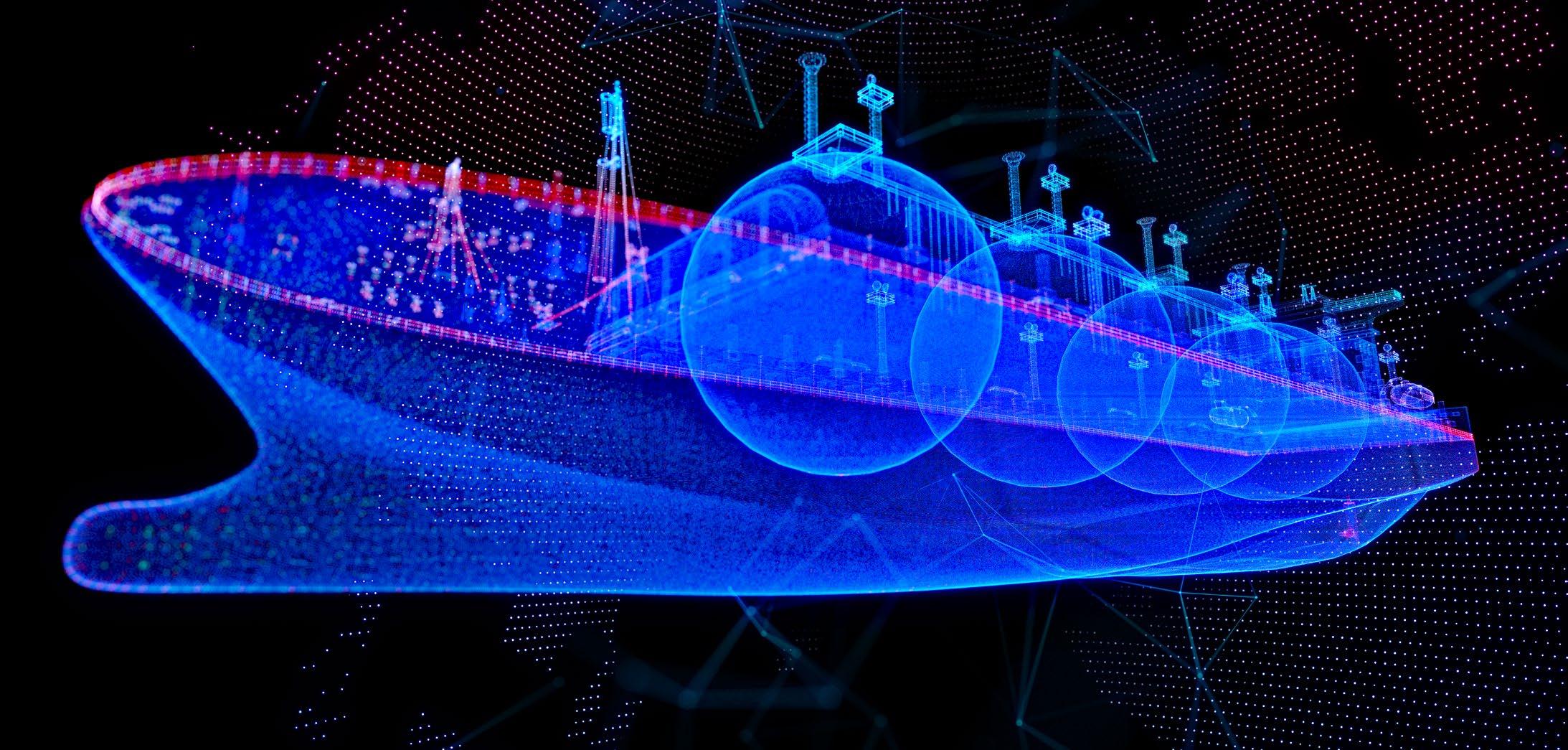
With a mission to create cleaner air by developing innovative green solutions, we aim to set new standards for sustainability towards a cleaner and purer atmosphere.

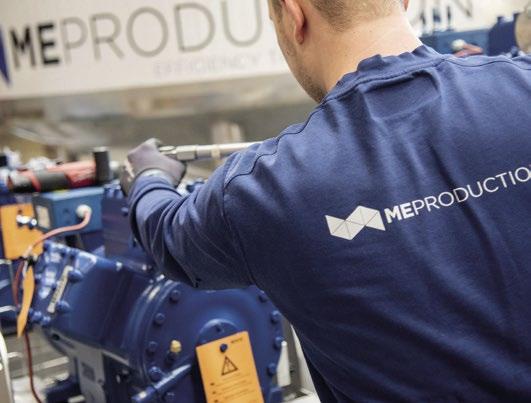
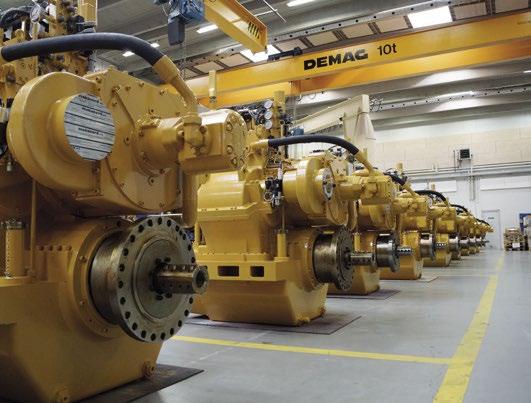
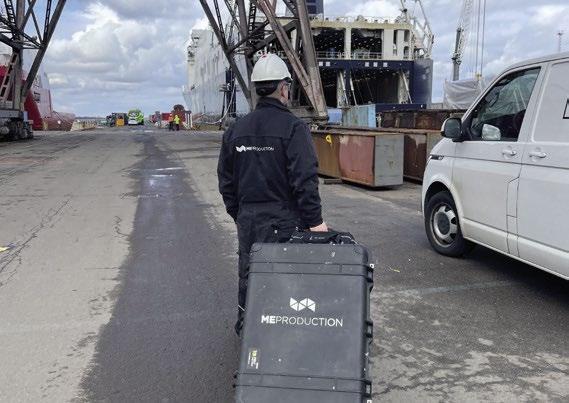
ME Production has for more than 10 years been a pioneering force driving global change towards a cleaner and healthier future. Our solutions cover exhaust gas cleaning, waste heat recovery and green propulsion all supported by our worldwide services operating out of Denmark, Panama, Singapore and Shanghai.
Clear Smart Emission Guard - our next generation carbon-capture ready scrubbers systems available for both retrofit, new building and conversions.
HeatSmart - our waste heat recovery solution is an eco-friendly upgrade to all vessels aiming to eliminate the use of oil-fired boilers in port.
Hybrid Marine Gearbox - our flexible, cost-efficient and safe gearbox solution offering best in class environmental and operational benefits.
Superior Service - Our “Time-2-Service” concept ensures second-to-none service quality offering high quality reporting and reliable delivery times.

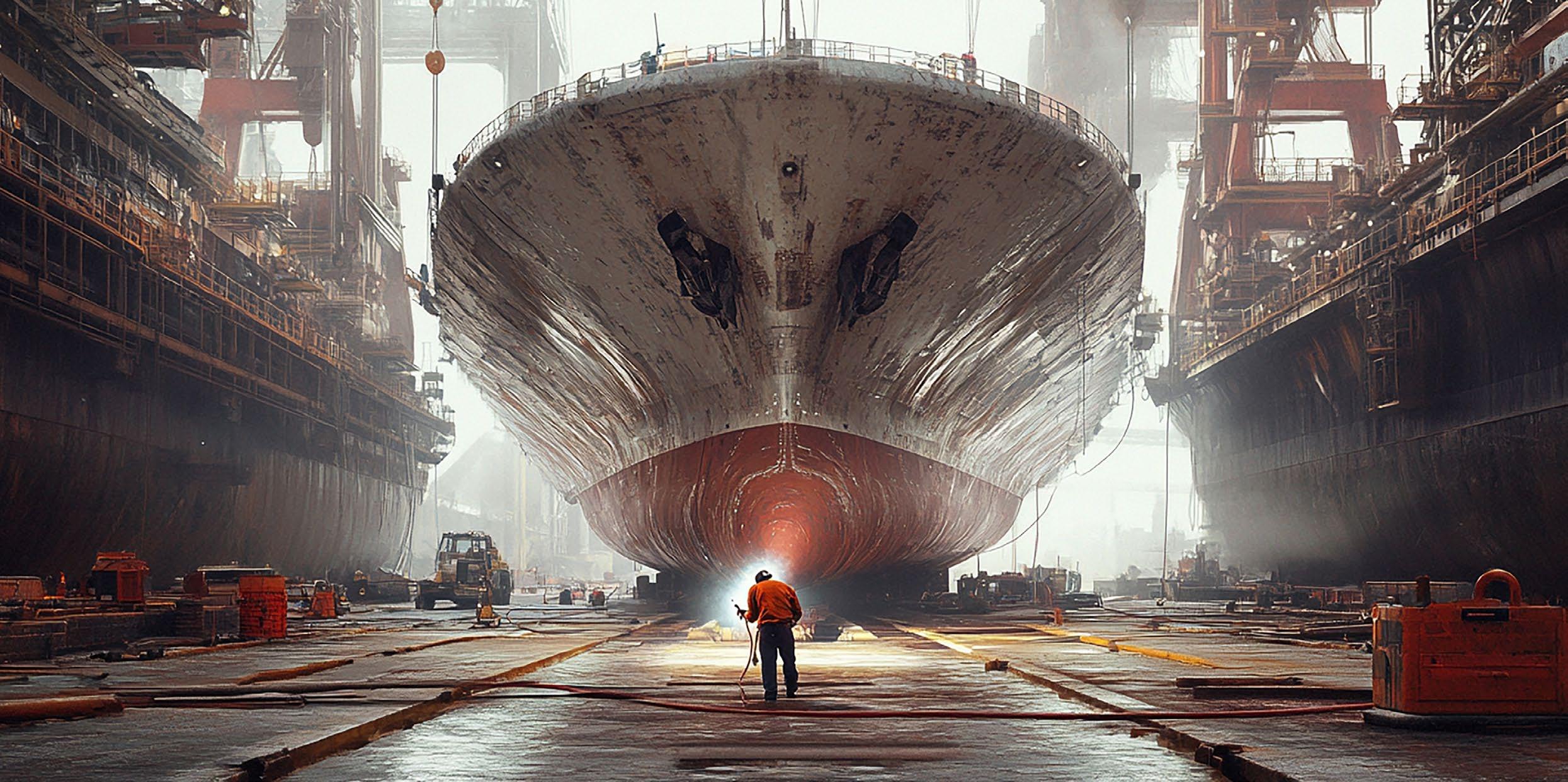
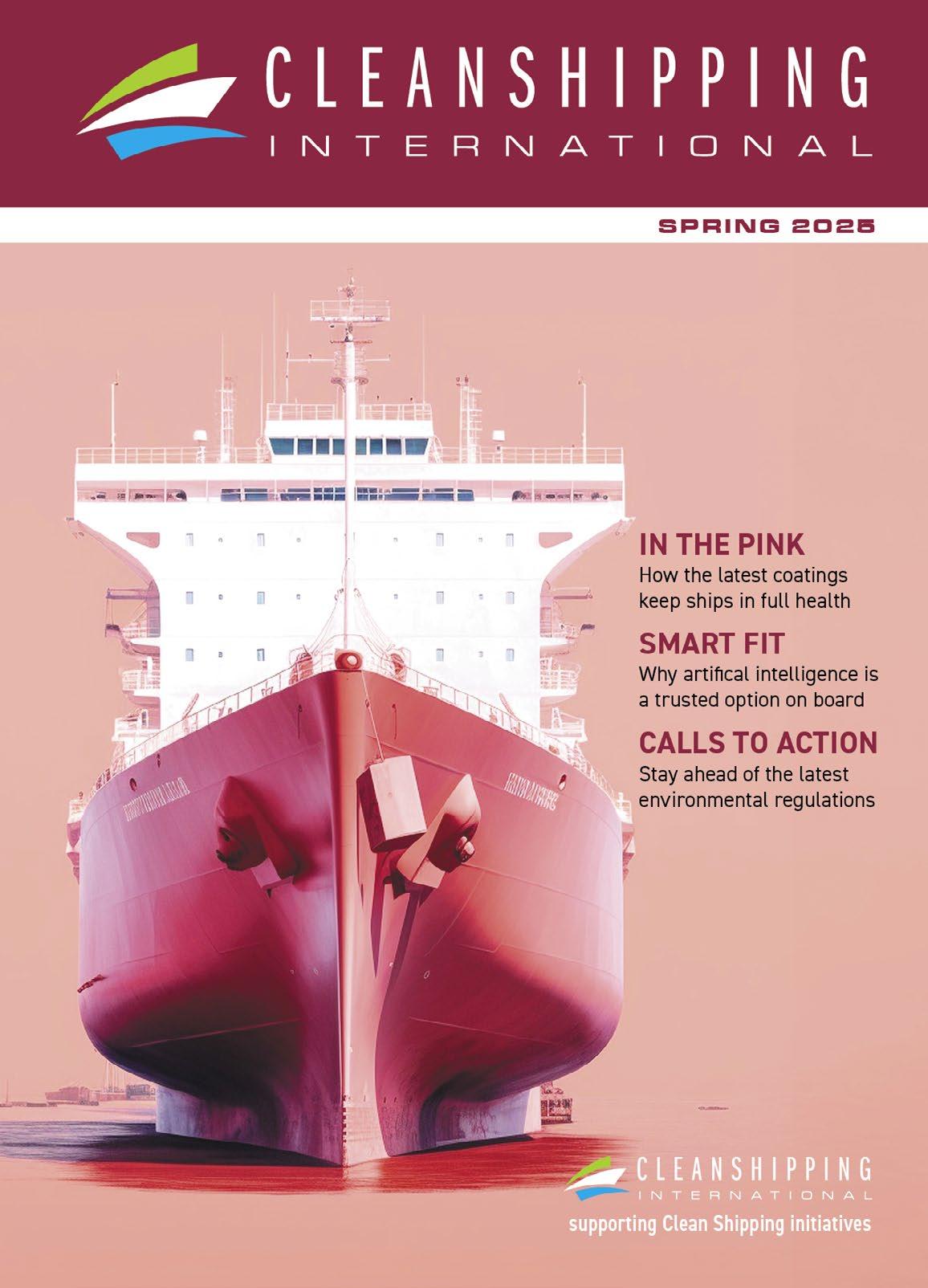
Editor: Sandra Speares speares1@aol.com
Project Director: Jonathon Ferris jonathon.ferris@ cleanshippinginternational.com
Sub-editor: Samantha Robinson sam.robinson.journalist@ gmail.com
Publisher: Bill Robinson production@ cleanshippinginternational.com
Designer: Justin Ives justindesign@live.co.uk
Published by Maritime AMC, Clean Shipping International supports Clean Shipping Initiatives.
The views expressed in Clean Shipping International are not necessarily those of Maritime AMC unless expressly stated as such and disclaim any responsibility for errors or omissions or their consequences or for advertisements contained in this magazine and has no legal responsibility to deal with them.
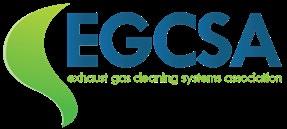

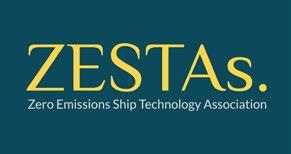
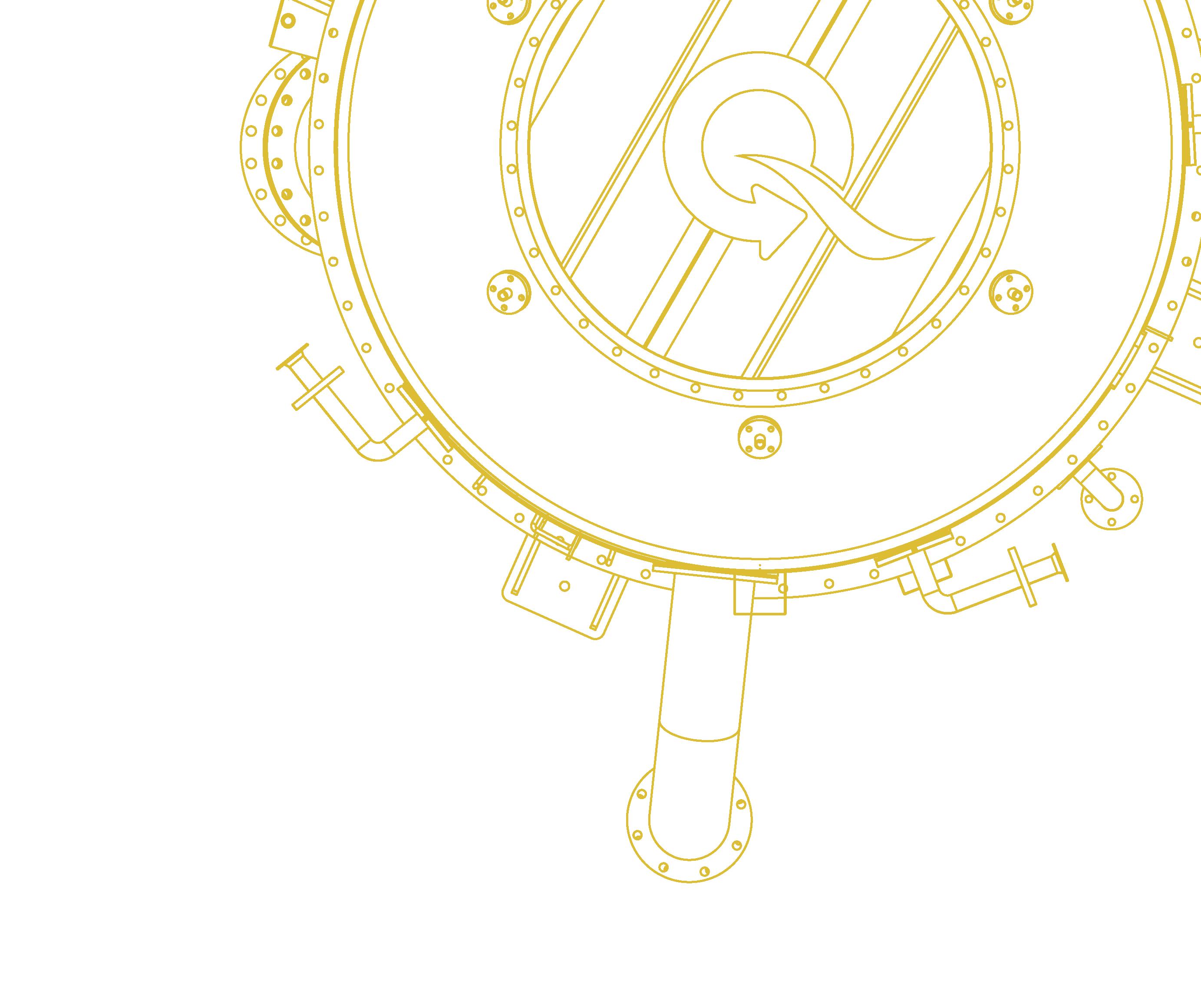
maintaining built-to-fit maritime scrubbers including automated control and monitoring systems with remote accessibility and an energy optimisation programme.
The PureteQ WMS013 Water Monitoring System is designed for simple installation and operation with only one central monitoring cabinet, reducing sensor maintenance costs significantly. The control system and related software ease retrofitting to any existing EGCS/EGR.
ClassNK and BV approved.
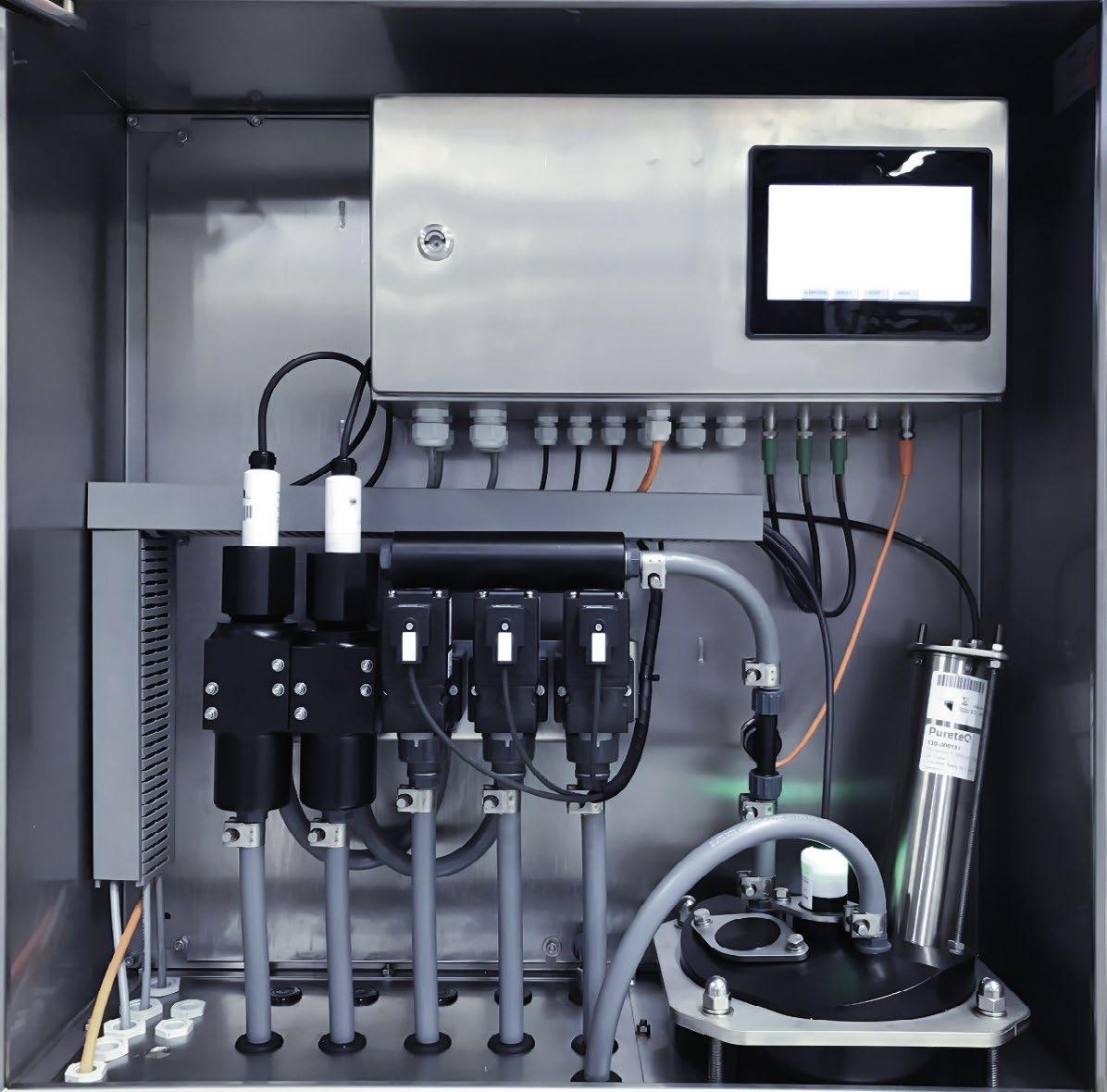

» p12
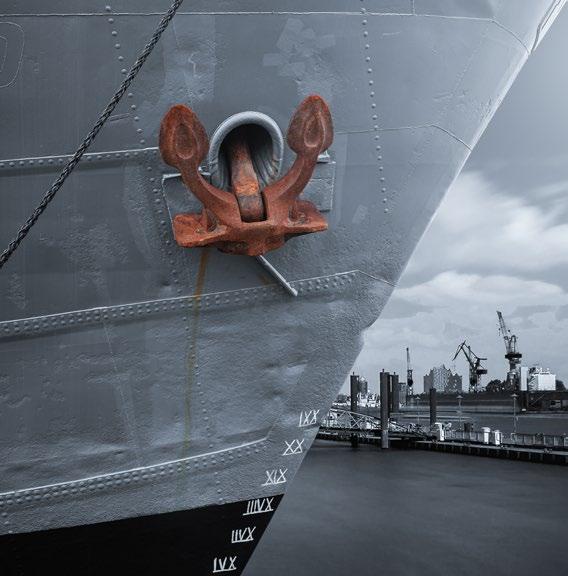
» p37
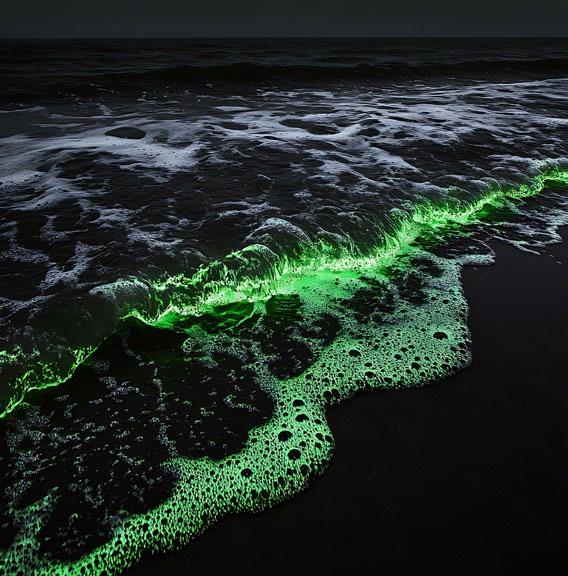
» p49
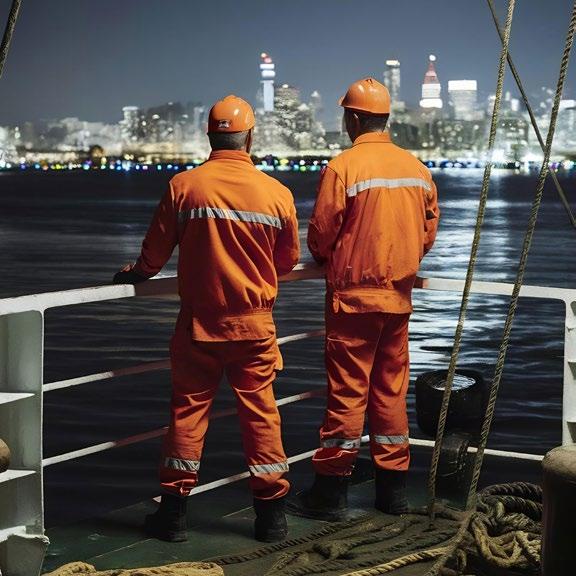
» p53
Sandra Speares on how artificial intelligence is enhancing safety and environmental performance
Don Gregory, Director, Exhaust Gas Cleaning Systems Association
All the latest news and views from across the globe
Further regulation relating to the use of open loop scrubbers has been introduced by various countries, notably in Scandinavia
Paints, coatings and hull cleaning devices have a major role to play in improving the efficiency of shipboard operations
The US Navy is carrying out trials on French company BIOUV Group’s state-of-the-art ballast water treatment system
39 Viewpoint: Gary Rogers, CEO of Magnomatics
If nuclear power was a nonstarter politically in the past, it is now established as an alternative fuel in the shipping sector
The latest high-tech solutions not only limit emissions, but save shipowners and operators time and money
The latest Seafarers Happiness Index has revealed a drop in seafarers’ happiness – a reminder of the persistant challenges that industry workers face
Managing and understanding regulation in the industry is of utmost importance when addressing climate change
60 Viewpoint: Majeure
We talk to Osher Perry, Chief Executive of maritime tech firm ShipIn on the role of AI in the industry
Dates for your calendar

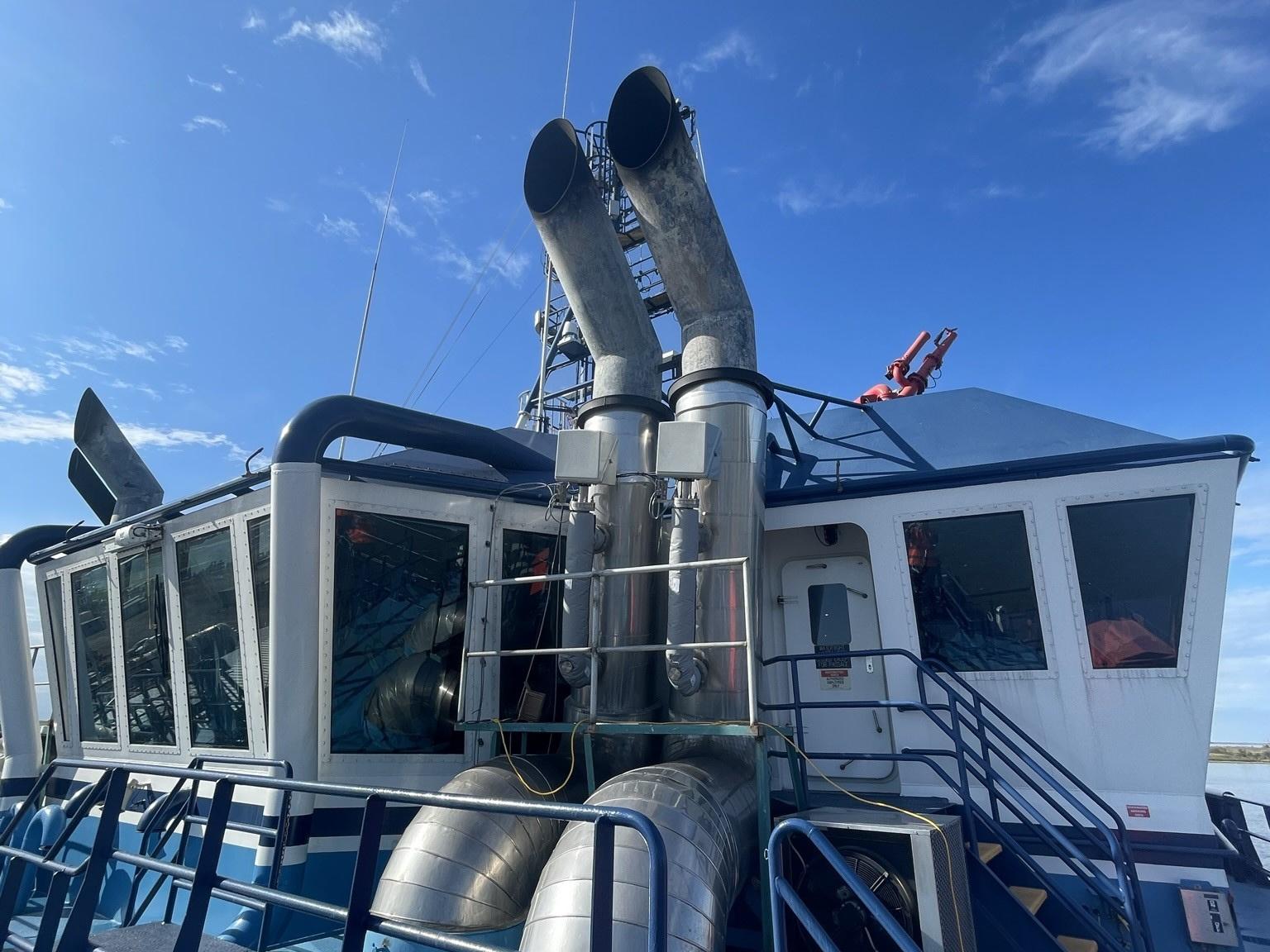
Telephone:
Protea manufactures equipment and provides qualified engineers for onboard testing, ensuring accurate emissions monitoring, system verification, and engine efficiency analysis.
UK Maritime and Coastguard Agency
European Commission Directive 2008/67/EC of 30th June 2008, amending Council Directive 96/98/EC on marine equipment (4th Amendment) Annex 2, A2/2 1On board NOx monitoring and recording devices, MARPOL 73/78 Annex VI regulation 13 and the NOx Technical Code.
ATEX/IEC Protea P2000
Certificate Number:
Baseefa 18 ATEX 0060X / IECEx BAS 18.0040x Markings: II 2 G Exdb IIBT* Gb
Lloyd’s Register - Type
Approval Certificate
Protea P2000
LR Rules & Regulations for the classification of ships (July 2014) LR Test Spec No.1 (2015)
IMO Resolution MEPC 184(59) - 2009 Guidelines for exhaust gas cleaning systems
IMO NOx Technical Code (2008)
ABS- Certificate Of Product Design Assessment
Certificate Number: 24-0170173-PDA
Marine and Offshore Application continuously monitors the concentration of exhaust gas emissions from ships
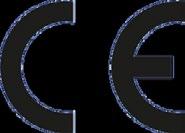
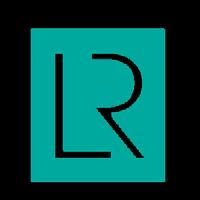
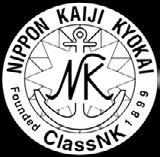

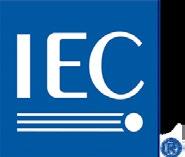
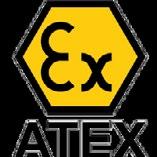
Certificate of Design Assessment
Protea P2000
RINA Rules for the Classification of Ships - Part C “Machinery, Systems and Fire Protection”, Chapter 3, Section 6, Tab 1 and IMO Res. MEPC.259(68) Chapter 6 “Emission Testing” as well as the relevant requirements of Revised MARPOL Annex VI and NOx Technical Code 2008
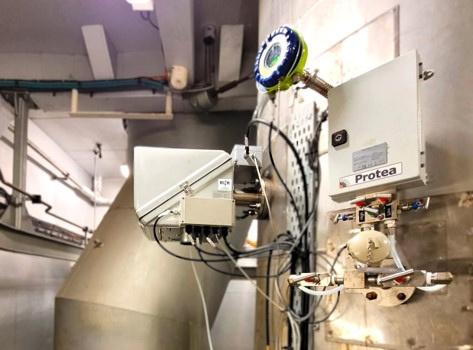


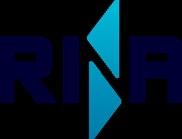
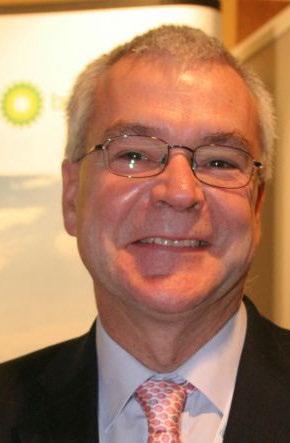
Don Gregory Director,
Systems Association
The United Nations Conference of Parties has been meeting annually since 1995. Despite 30 years of meetings and tens of nations and thousands of people coming together at each COP, little seems to have been achieved.
Back in 2002, a graph was available that projected the total CO2 emissions per year in billions of tonne under several different socio-economic pathways. In two of the scenarios, it showed that if there was no net increase in CO2 from developed countries by 2050 the trajectory for CO2 emissions per year was nevertheless skywards off the graph.
One of the reasons is the clause that described everyone’s responsibilities, but then noted that those who had historically contributed most to CO2 emissions would have to take on the greatest obligation to reduce those emissions. Meanwhile, developing nations had a greater right to increase their net CO2 emissions in order to allow them to catch up with developed nations.
This COP’s clause was something akin to a statement used in apartheid South Africa where the arguments for segregation included the idea that different ethnicities should be allowed to develop separately. The COP version of the apartheid segregation is “Common but differentiated responsibilities” (CBDR). This is the principle of international environmental law establishing that all states are responsible for addressing global environmental destruction, yet not equally responsible.
Has this approach been part of the problem in the lack of progress with the net-zero target? Is targeting CO2 the wrong target? Certainly, there is an increasing voice being given to scientists who do not agree that there is a direct link between CO2 emissions and subsequent concentration in the atmosphere and climate change.
One of the basic arguments put forward by the doubters of the link between CO2 and climate change is that the United Nations Framework Convention on Climate Change’s (UNFCCC’s) data is never properly scrutinised or challenged by any government. It has become a sort of group think, with studies aimed to reinforce the belief rather than scrutinise the models and predictions against real-world effects.
We increasingly observe this behaviour of group-think with many environmental non-governmental organisations (NGOs) that consistently mislead the public with claims that are shallow, sensationalist and often with little or no evidence, in order to reinforce their own beliefs.
In the world of ship diesel engine exhaust emissions, sensation rather than fact has ruled the messaging from International Maritime Organization environment NGOs, as well as the EU Commission. Their actions have contributed to the implementation of regulations often on the back of false or ill-informed information that has resulted in an acceleration of climate change indicators, such as higher sea surface temperatures through the loss of ship emissions ”radiation umbrella’ effect. It has also led to a net increase in shipping CO2 emissions, due to the switch to more intensely processed fuels.
So, there should be a concern that the ambition to simply drive down the emissions of fossil carbon may not result in halting climate change and the actions being taken may also be counterproductive due to unintended consequences.
Another element that the net-zero ambition fails to address is the impact on people. The cost of many of the measures being sought to be introduced are severely impacting people’s standard of living. The argument that doing nothing will be more costly is frankly of little interest to a family who cannot afford to pay their bills and
eat healthy food. Some politicians have at last recognised this and are openly stating in conflict with UNFCCC goals (stabilise greenhouse gas concentrations at a level that would prevent dangerous human-induced interference with the climate system), that the 2050 target is unobtainable and damaging to economies.
In shipping, the EU maritime carbon taxes or penalties are forecast to cripple sea transport. On the other hand, the crippling EU regulations may be a useful driver to questions we should be asking about the current netzero ambitions.
Are carbon emissions the problem that needs solving? Are attempts to limit CO2 emissions as a singularity the wrong target to address climate change?
Back in 2000, the then Chief Executive of BP, Sir John Brown, initiated the reinvention of BP with the slogan ‘Beyond Petroleum’. But key to Sir John’s vision for BP was that he had not lost track of the reason for and the need for the existence of BP. This was explained by its corporate statement that BP is an energy company, providing heat, mobility and light.
Oil companies through the past 50 years have contributed to the
growing wealth and standards of living by ensuring energy (oil) was discovered, harvested and delivered for use/consumption at an increasingly efficient cost.
History shows that development has always succeeded where natural resources have been utilised to increase productivity and standards of living. One could add in the word ‘sustainably’ such that natural resources are used sustainably, meaning they continue to be available or re-utilised.
History also records that prohibition and stifling growth are counterproductive and always eventually fail.
Is there another approach that takes into account that CO2 may or may not contribute to climate change, but would implicitly reduce emissions of CO2 and other greenhouse gases (GHGs) while encouraging the development of lower cost energy and simultaneously ensure that available energy is effectively allocated and not wasted?
Is there an example from the shipping industry? Over many decades shipping has strived to reduce energy costs by a combination of efficiency and use of lowest cost
and practical energy sources. We can observe the latest incarnation of that continuous drive on energy cost with the take-up of exhaust gas cleaning systems and the use of high sulphur fuel oil. It has resulted in a lower cost of transport and a somewhat lower CO2 emission when compared with some of the prescriptive alternatives, such as low sulphur fuel oil or marine gas oil.
Should we look at a model that gradually encourages the continued use of less energy while also gradually billing emissions of GHGs to atmosphere? It sounds complicated. It surely will require much thought and testing to develop the framework for incentivisation.
On the other hand, the principles align with the long-term successful approach of sustainable use of resources and re-use of resources to drive increased productivity and consequent rise in standards of living.
Is it time to re-think the net-zero ambition and transfer to a human behavioural approach? As support for net zero wains, it is probably something that we should all put our minds to, to seek a framework that we can all find acceptable and willing to support.
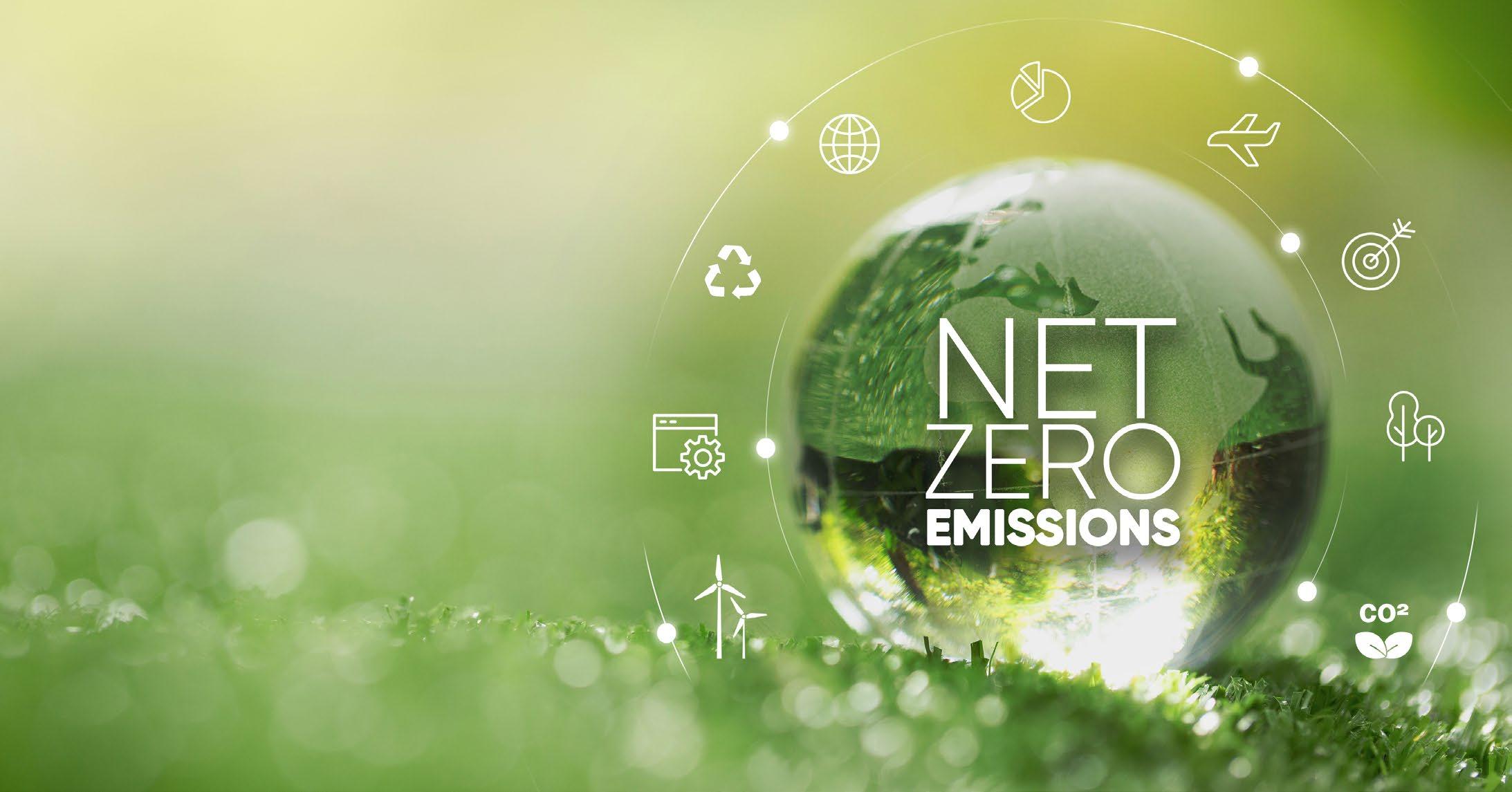
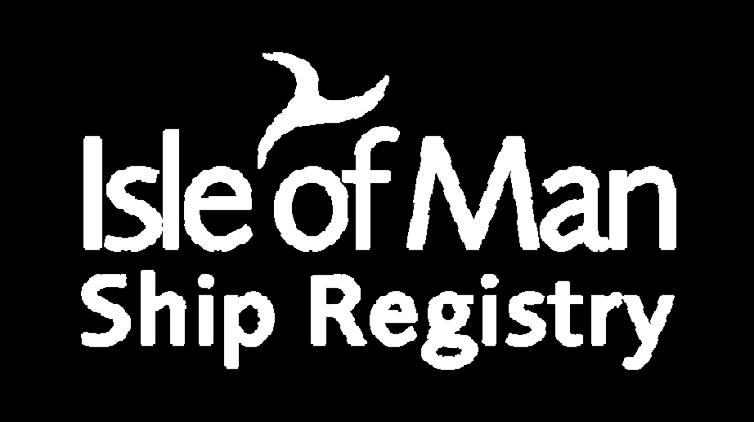

BRITISH RED ENSIGN
SAME DAY & OUT OF HOURS REGISTRATION WORLD CLASS TECHNICAL EXPERTISE REMOTE SURVEYS
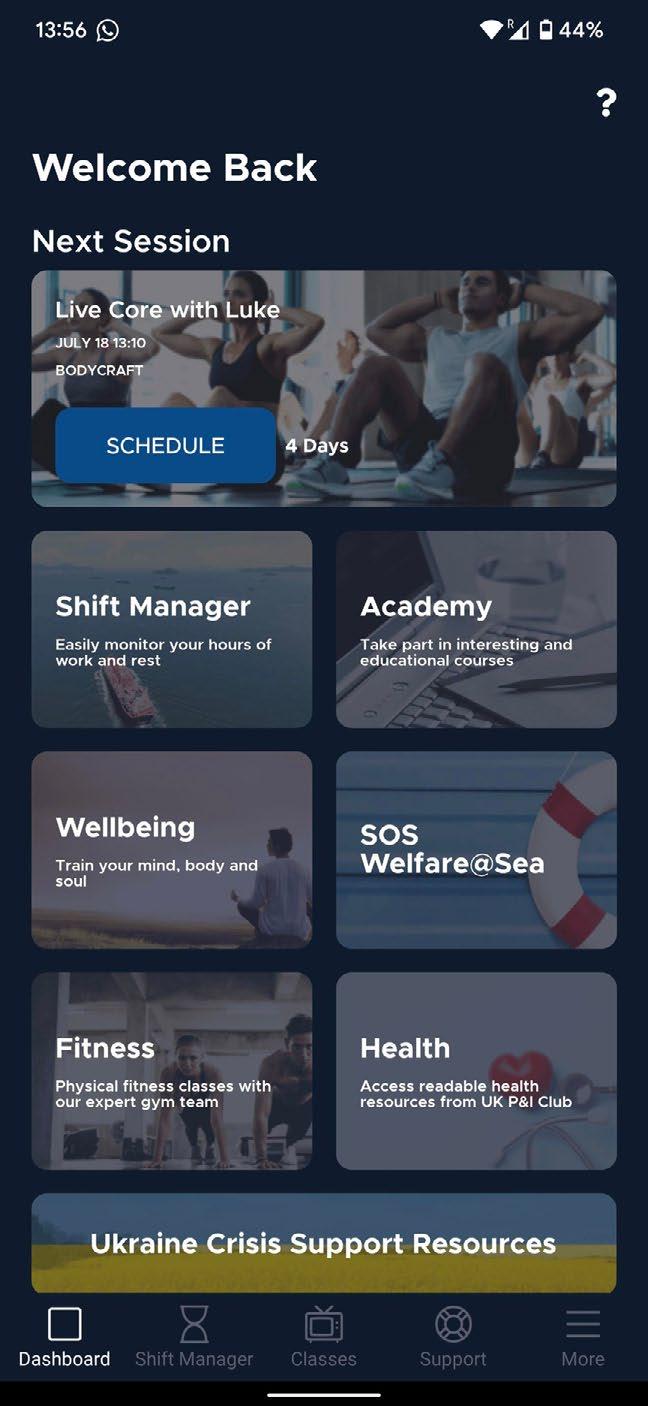


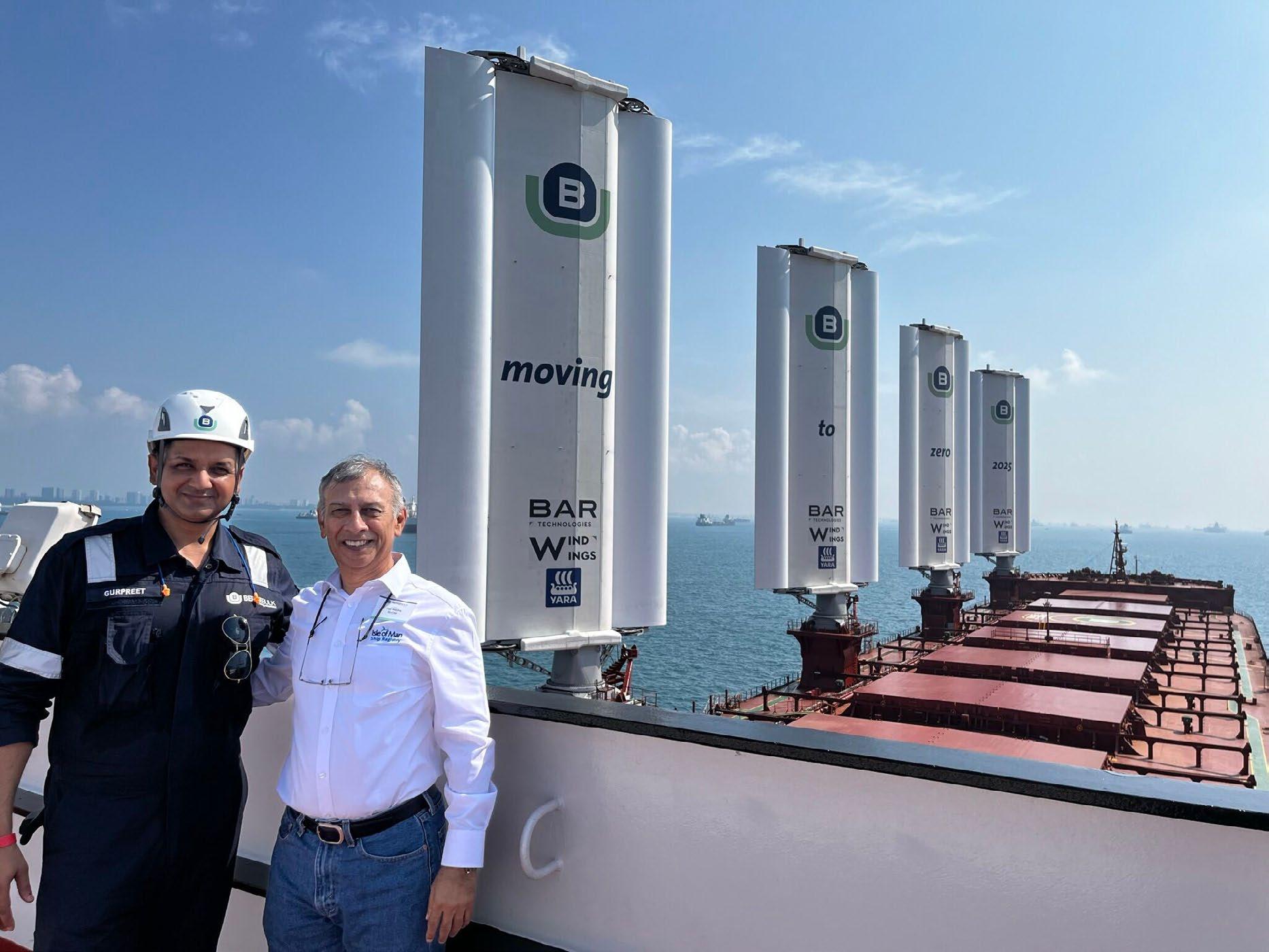

The shipping sector is evolving rapidly, driven by the need to adopt sustainable strategies in line with the 2050 targets. In this context, the leading companies are strengthening their global presence by focusing on innovation and strategic partnership to face the industry’s future challenges.
Ecospray, the specialist in integrated solutions for the sustainable reconversion of marine and land industries, has entered into a partnership with Chinese manufacturer Jiangsu Zhenhua Environmental Protection Technology (Zept), with the aim of improving competitiveness with Eastern manufacturers.
Under the agreement, Ecospray oversees the design, engineering and supply of critical system components, such as spraying nozzles, PLC and software, and water analysers. Meanwhile, Zept produces and purchases locally additional equipment and components, following Ecospray’s specifications and design guidelines.
This partnership enables Ecospray to provide its well-established, highquality exhaust gas cleaning systems (EGCS) – recognised for their top-tier materials, design and performance –at a competitive price for the Far East market.
Thanks to Zept’s robust equipment manufacturing capabilities in China and its ability to provide prompt, local support during installation and commissioning, Ecospray strengthens its foothold in the Asian market while ensuring the highest standards for its EGCSs.
Ecospray’s product portfolio includes a wide range of scrubber
solutions tailored to various needs, from open loop and hybrid systems to inline and u-type configurations. These technologies are available in multiple sizes, ranging from 1,800-5,000mm in diameter, and are designed for engine power ratings between 5 and 80 MW.
The agreement with Zept has enabled Ecospray to continue its longstanding collaboration with one of the leading dry bulk shipping companies: having already equipped the majority of the fleet with its EGCS and undertaken multiple joint R&D initiatives, Ecospray will deliver to the Greek-based shipowner five systems to be installed on new vessels under construction at a Chinese shipyard.
These vessels will be fitted with open loop EGCSs for both main engines and auxiliary systems.
The first part of this order has been completed with the successful conclusion of the Factory Acceptance Test (FAT) for the first two DeSOx towers at Zept. The tests reported results in line with Ecospray’s quality management standards.
The other EGCSs are expected to be ready between September 2025 and January 2026.
Moreover, Ecospray’s business development activities in the region are progressing. In parallel, within the framework of its collaboration with Zept, another project has taken shape and has been completed – with a different Greek shipowner – to equip a liquefied petroleum carrier with an EGCS.
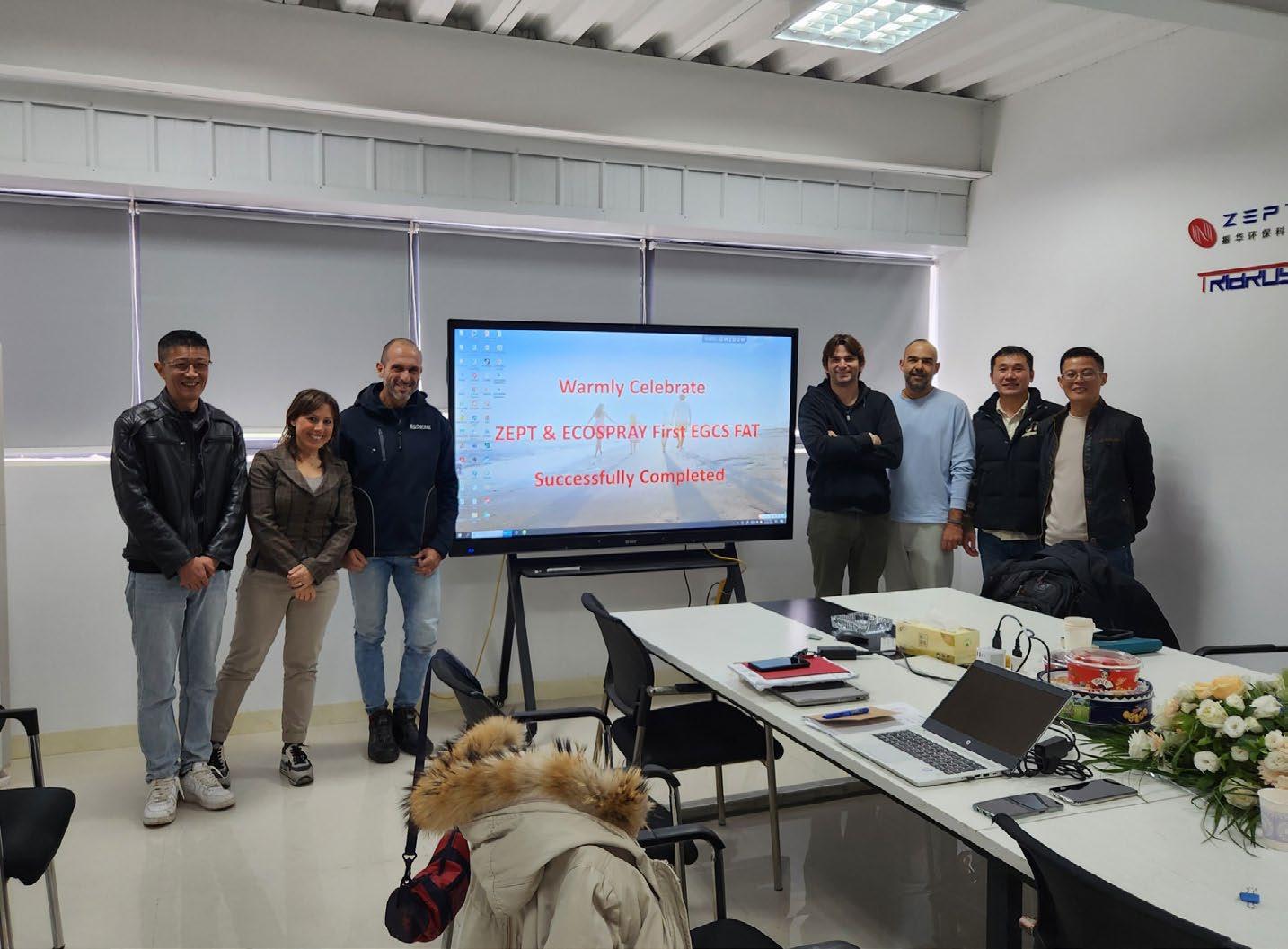

Equipping a vessel with an EGCS is a proactive step toward decarbonization and a strategic move in preparing for the next generation of maritime sustainability solutions. While scrubber technology is currently essential for reducing emissions, it also plays a crucial role in enabling future advancements such as onboard carbon capture.
The presence of the EGCS as pre-treatment of the exhaust gas reduces the pollutants (for example sulphur oxides and particulate matter) and part of the uncombusted and hydrocarbons, so as not to affect the performance and lifetime of the carbon capture technology installed downstream.
Furthermore, a key advantage of scrubbers is their ability to cool exhaust gases – a necessary step for carbon capture, which requires temperatures below 50°C. This integration eliminates the need for additional cooling stages, simplifying the process.
Onboard carbon capture presents the biggest opportunity for reshaping the shipping industry.
To be ready for this sustainable transition, Ecospray has already designed, developed and tested two carbon capture technologies – based on chemical absorption with amines and calcium hydroxide – specifically for the maritime sector.
At the same time, the company is continuing to invest in developing molten carbonate fuel cell technology. This initiative is at the core of CapLab, the joint research laboratory established by Ecospray and the University of Genoa.
Given the paramount importance of decarbonization, the company is developing multiple solutions in order to be able to adapt them to different operational contexts. Factors such as ship size, type, route and onboard space significantly influence the selection of the most suitable technology.
Ecospray is ready to provide technologies to the market, but the widespread adoption of onboard carbon capture solutions depends on the acceleration of regulatory framework. The viability of investments in this technology, essential for the ecological transition, will ultimately be determined by the establishment of clear and consistent international regulations.
To support the sustainable transition, it is essential to develop a diverse range of technologies. For this reason, Ecospray continues to invest in R&D across multiple areas. In particular, there are two technologies that the company already offers and which are crucial for air pollution control: the DeNOx systems use selective catalytic reduction (SCR) technology to remove nitrogen oxides from diesel engine exhaust gases.
Moreover, the methane slip reduction system represents another key area of action for Ecospray. This solution uses catalytic oxidation technology to remove methane slip from dual fuel engines. It is designed to reduce emission levels up to 95%, using oxidation catalyst substrates with platinum group metal to oxidise methane.
From research to development, Ecospray specialises in the creation of integrated solutions for the sustainable conversion of marine and land-based industries, as well as for the reduction of dependence on fossil fuels. Founded in 2005, Ecospray, market leader in EGCS for marine diesel engines, has been part of the Carnival Group since 2013.
The company operates worldwide, providing a wide range of technologies, including gas cleaning and exhaust gas treatment (DeSOx, DeNOx, methane slip reduction), carbon capture technologies, low-carbon fuel production (CH4 liquefaction, eNG liquefaction) and waste-to-energy solutions (CO2 liquefaction, flare gas recovery, liquefied natural gas and natural gas liquid separation).
For more information, contact: Marcello Vercellino, Sales Manager Ecospray Technologies Via Circonvallazione, 14/14A 15050 Alzano Scrivia (AL) Italy Email: marine@ecospray.eu ecospray.eu
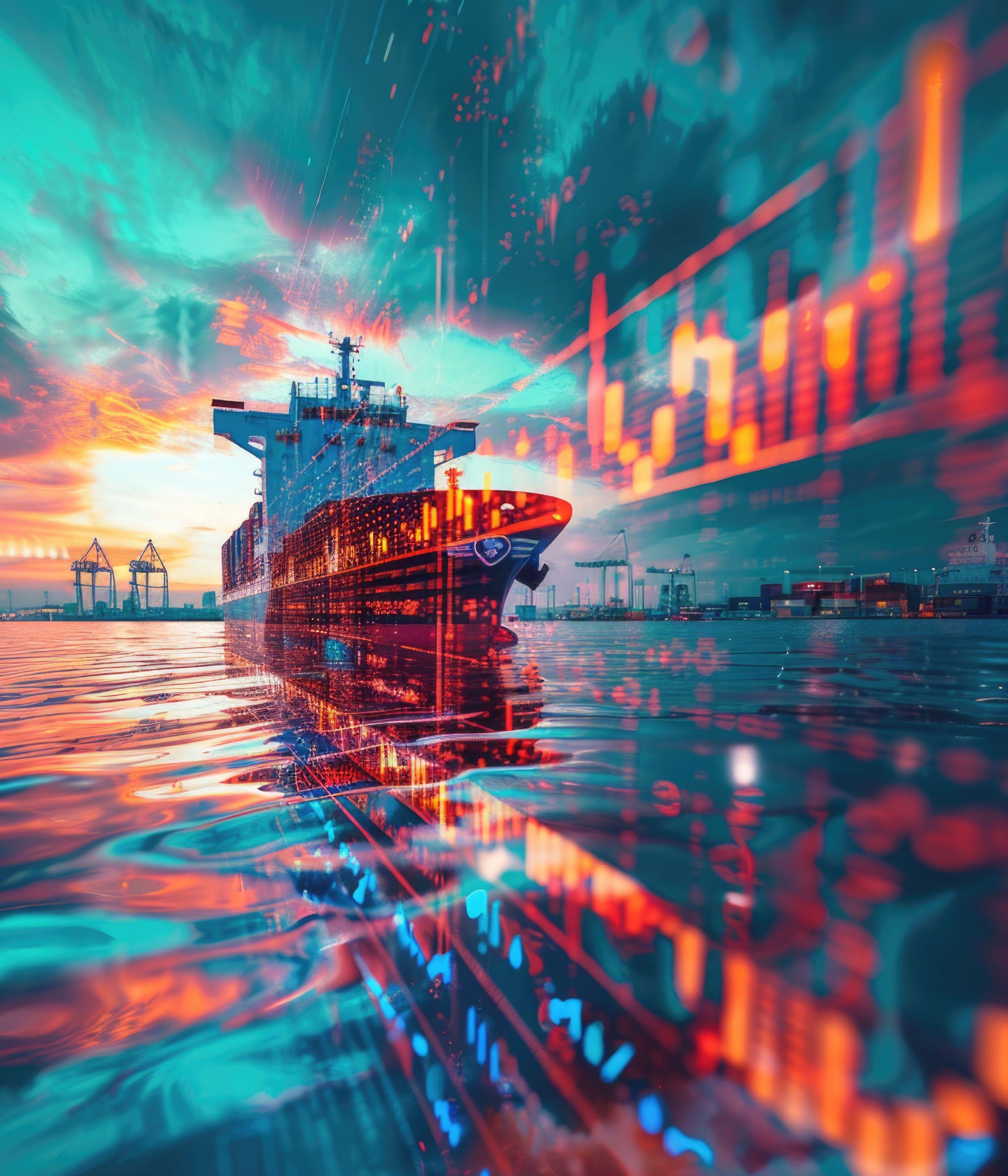
All the latest news, views, partnerships and reports from across the world of shipping
Baltic Exchange, the world’s only independent source of maritime market information for the trading and settlement of physical and derivative contracts, and Veson Nautical, a global leader in maritime data and freight management solutions, have joined forces to launch the latest version of the official Baltic99 questionnaire for the dry bulk sector.
The questionnaire, which remains the industry standard for collecting and collating detailed information about the global dry bulk fleet, is designed to help owners and charterers share common data requirements to speed up the vetting process when a vessel is put up for hire, facilitate faster trades and ensure smarter pre-fixture decisionmaking.
It is also a vital tool to ensure owners and operators supply the data they need as part of their commercial and vetting criteria to ensure they are in line with regional, national and International Maritime Organization (IMO) regulations.
The latest version of the questionnaire, available as of today, has expanded its criteria to cover an increasing cadence of requests for safety and sustainability information about bulk carriers. As a result, the Baltic99 Questionnaire has been designed to help move the global maritime industry move forward on a number of key issues, such as reducing carbon emissions, increasing operational safety standards in the dry bulk trade, and ballast water treatment systems.
In addition, respondents to the Baltic99 Questionnaire are also asked for their vessel’s greenhouse gas (GHG) data, energy and consumption ratings and NoX emissions compliance data.
The enhancements in this latest version of the questionnaire incorporate suggestions from the Baltic Membership Council, industry partners and subscribers to Veson Nautical’s dry bulk information management service, Q88 Dry.
“Using Q88 Dry to complete the Baltic99 Questionnaire with integrated certificate management makes it easy for owners and operators to share vessel particulars and certificates with your charterers and brokers,” Tor-Arne Berger, Senior Product Manager at Veson Nautical says.
“The Baltic99 Questionnaire remains the industry leading questionnaire for commercial fixtures in the dry bulk industry,” notes Janet Sykes, Chief Commercial Officer at Baltic Exchange. “This latest revision includes several key developments linked to important emissions-related data and enhanced safety requirements to ensure charterers are hiring the right vessel for their needs and expedite the vessel acceptance process.”
“We are pleased to once again partner with Veson Nautical on the Baltic99 Questionnaire as we all work together to drive the maritime industry forward to a more sustainable and efficient future,” Skyes adds.
Both companies are now urging owners and operators to verify that their vessel data is accurate, complete and up to date.
The new version of the Baltic99 Questionnaire can be found at: veson.com
Baltic Exchange has also introduced a series of green fuel options to its FuelEU voyage and compliance cost calculator as more shipowners, traders and charterers seek to understand the commercial implications of this regulation on their voyage costs.
Biodiesel, bio-liquefied natural gas, bio-liquefied petroleum gas, green methanol, green hydrogen and green ammonia have all been added to the calculator, either as green fuel or blend options. Baltic Exchange’s FuelEU Maritime calculator provides an overview of the cost implications for the selected option relative to the Baltic standard for that route. This will enable the market to factor any change in fuel selected or contemplated into their voyage cost estimates.
“Green fuels are expected to be very expensive initially, so will likely be blended into fossil-derived fuels initially, to achieve compliance with the new FuelEU Maritime regulation. For this reason and based on industry feedback, we have added a blend capability to Baltic Exchange’s FuelEU compliance and fuel cost calculator,” says Martin CrawfordBrunt, Emissions Lead at Baltic Exchange.
“Baltic Exchange is assisting the market by cutting through the considerable complexity of these regulations by providing a simple decision-making tool that estimates the voyage costs of the many fuel and blend alternatives quickly and simply,” he adds.
These results of the calculations are all presented relative to the Baltic standard ship and route types, which is generally considered to be burning very low sulphur fuel oil (VLSFO) in navigation outside Emission Control Areas and marine gas oil for waiting and port consumption.
The output from these calculations shows the cost differential for the fuel under consideration with the entered speeds and consumptions of the test ship versus the market standard.
For example, a 115,000 dwt LR2 clean tanker operating on the TC20 Baltic route (Al Jubail – Rotterdam), assuming a standard speed of 11 knots with ballast consumption of 21 mt/day and laden consumption of VLSFO of 27 mt/day, stands to save nearly $30,000 in fuel costs if using a 35% B100 blend option.
Despite an increase in overall fuel costs, the amount saved for being in compliance with the FuelEU Maritime regulation will offset those costs and provide additional savings compared to burning purely VLSFO.
According to Baltic Exchange’s FuelEU Maritime Calculator, in this example, the vessel stands to save increasing amounts of costs on fuel as the ratio of biodiesel to VLSFO increases.
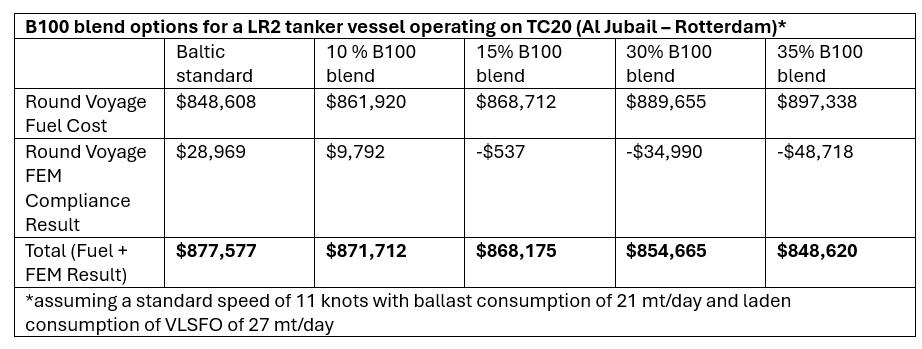
In addition, the table below shows the voyage cost outcomes for the same vessel and route depending on which green fuel is blended into VSLFO at 10%. These calculations are made with the assumption that these green fuels cost twice as much as their fossil-derived versions, which make up the remainder of the fuel burned on the round voyage.
In this example, bioLNG offers the most cost-effective option as a fuel blend. While it has a higher overall cost compared to ePLG or B100, the FuelEU Maritime-related savings of using bioLNG results in more than $400,000 in overall cost savings.

“With the latest update to Baltic Exchange’s FuelEU Maritime Calculator, users now have the ability to experiment with any green fuel blend percentage taking into account the assumed green fuel cost premium and the expected wellto-tank emissions profile for the specific green fuel blend selected,” Crawford-Brunt notes.
“Regulations like FuelEU Maritime and EU Emmisssions Trading System will have an increasing impact on voyage costs to and from the EU. All contracting parties, their brokers and traders need to be able to estimate these additional costs quickly to avoid facing high financial penalties.
“Baltic Exchange is pleased to be able to offer these vital emission resources and tools to its members and the wider market as we all strive for a more sustainable future for shipping,” he adds.
Ocean Network Express (ONE) and Yusen Logistics have announced a new agreement for sustainable shipping solutions through ONE’s green shipping service, ONE LEAF+ (low emission-able freight).
This collaboration demonstrates how the industry can advance sustainable supply chain practices and marine transportation to deliver environmental benefits. Under this agreement, ONE will use sustainable biofuels for propulsion, achieving up to 84% reduction in well-to-wake CO2 emissions compared to VLSFO. As a freight forwarder, Yusen Logistics will offer this green shipping option to customers, enabling them to simultaneously reduce their Scope 3 greenhouse gas (GHG) emissions.
Gilberto Santos, Senior Vice President, Global Commercial and Service Management, ONE, says: “This collaboration with Yusen Logistics represents an important step in expanding the availability of green shipping solutions in Asia. Through ONE LEAF+, we are offering customers the flexibility to
reduce their supply chain emissions while maintaining the reliability they expect from ONE.
“Together, we are advancing our shared commitment to sustainable shipping and supporting the industry’s decarbonisation goals.”
Kohei Omura, Head of Ocean Freight Forwarding Group, Yusen Logistics, says: “We are very pleased to sign an agreement with ONE as the first logistics company in Asia and aim to build a more sustainable future through the provision of eco-friendly shipping solutions together.
“By utilising ONE LEAF+, we are proud to offer our customers more sustainable choices and contribute to the reduction of GHG emissions.”
ONE LEAF+ offers customers the opportunity to proactively manage their own emissions and minimise environmental impact across the value chain. The service currently uses UCOME (used cooking oil methyl ester), a non-toxic and biodegradable biofuel derived from food production. Customers can choose flexible CO2e savings from approximately 10-80% and receive independently verified emissions reduction certificates to track their environmental impact.
Under current and prospective policies from the International Maritime Organization, EU and US, the business case for green shipping corridors could improve markedly – but not sufficiently – according to a new report published by maritime consultancy UMAS, UCL and the Global Maritime Forum (GMF).
Titled Building a Business Case for Green Shipping Corridors, the report looks at the significant commercial challenges associated with green shipping corridors, how these could change under future regulation and what additional support may be needed to ensure the viability of such projects.
Green shipping corridor projects – which focus on initiating the maritime value chain for scalable and sustainable fuels such as hydrogen-derived e-ammonia and e-methanol – have thus far faced an insurmountable cost gap.
Against the backdrop of an evolving global and regional policy landscape, the business case for such first mover initiatives will begin to improve, but targeted support will be needed to ensure uptake of e-fuels.
The report emphasises the important role of regulation in enabling shipping’s energy transition and the wider implications for the industry operating under a future compliance regime where fleet and bunkering strategies will need to become more sophisticated. Policies such as the IMO’s new global fuel standard, the EU’s Emissions Trading System (ETS), and the US Inflation Reduction Act (IRA) will play a critical role in reducing costs for green shipping corridors but fall short of fully bridging the gap between the cost of e-fuels and the cheapest solution to meet compliance.
The report explores the potential opportunities and options that could be available for green shipping corridors
in three different shipping sectors—gas carriers, container ships and bulk carriers—to highlight how public and private efforts could accelerate early adoption of e-fuels.
The scenarios explored reveal that while biofuels and blue ammonia are lowest cost options over the near term, scalable e-fuels such as e-ammonia are expected to become increasingly competitive as production costs fall and compliance requirements tighten, indicating that targeted support would only be required over the short term.
With 62 green shipping corridor initiatives already announced, support for these early mover projects could enable significant strides to be made in the development of sustainable fuel production and in investment in the storage, bunkering, and port infrastructure required to decarbonise the wider shipping industry later in the transition.
Deniz Aymer, Senior Consultant at UMAS, comments: “Upcoming regulation will shift the business case for green shipping corridors – as well as shaping how the wider shipping industry approaches compliance. To fully bridge the cost gap, however, targeted support for e-fuels is needed. But this short-term support will pay future dividends by ensuring that scalable and sustainable fuels are available to the wider industry when needed.”
Dr Nishatabbas Rehmatulla, Principal Research Fellow at the UCL Energy Institute, states: “The findings of this study make it very clear that without clear demand signals and additional public support over the near term, closing the cost gap on e-fuels will be challenging.
“Without this support and guardrails on fuels, some of the announced green shipping corridors are at risk of failing to fulfil their crucial role as first movers, and stalling before implementation or gravitating towards least-cost compliance options.”
Jesse Fahnestock, Director of Decarbonisation at the Global Maritime Forum, comments: “The most important role green corridors can play is to coordinate and kick-start the value chain for tomorrow’s shipping fuels. Participants in corridors will need to be creative in how they leverage a range of regulations, but it’s clear from this work that the scale of their impact will depend on policymakers delivering targeted support for e-fuels.”
To accelerate progress, the report outlines actionable solutions for industry and policymakers. It highlights how business models will need to adapt under incoming regulation and how long-term commitments from cargo owners and ship owners and operators can help de-risk investment and drive e-fuel adoption.
Strategic partnerships across the value chain will be essential for sharing risks and rewards, ensuring a more equitable cost distribution while advancing green shipping corridor projects.
Despite this, the business case for green shipping corridors will remain challenging without targeted measures to support the uptake of e-fuels. Mechanisms such as Contracts for Difference (CFDs), e-fuel auctions, and/or multipliers for overcompliance with e-fuels will be crucial to the short-term viability of these initiatives. Economic support could be underwritten by the IMO through revenues raised
by a levy on shipping industry emissions. In the absence of a global levy, however, national governments may need to step in to directly support corridor projects.
To download a copy of the report, visit: tinyurl.com/CSIGreenCorridors
The Nigerian National Petroleum Corporation (NNPC) Shipping, Stena Bulk and Caverton Marine have recently announced the signing of a new joint venture that will transform Nigerian maritime transportation.
The agreement, signed in London last month, will create a new tanker operation serving Nigeria and West Africa’s regional and global crude oil, refined product and liquefied natural gas shipping requirements.
The joint venture partners will create a new company whose objective is to provide top quality, reliable and efficient maritime transport. The partners will explore options to create a modern and efficient fleet of tankers, comprising both new and existing tonnage depending on market factors and commercial opportunities in the region.
The companies will evaluate opportunities for both vessel acquisitions and long-term charter arrangements, with a focus on maintaining competitive operating costs while meeting the highest standards of safety and sustainability.
This fleet will primarily serve the logistics needs of NNPC, including crude, clean and LNG/LPG transportation.
Additionally, the new company will cater to other oil producers and traders, offering the strategic advantage of a modern fleet, strong financial backing, and maritime pedigree and heritage.
Speaking on the announcement, Panos Gliatis, Managing Director, NNPC Shipping, said: “This strategic partnership marks a significant milestone in NNPC’s commitment to modernising Nigeria’s maritime infrastructure. By combining our expertise with Stena Bulk and Caverton Marine, we’re creating a robust platform that will enhance our domestic refining, import and export capabilities and strengthen Nigeria’s position in global energy logistics.”
Erik Hånell, President and CEO, Stena Bulk, added: “We’re excited to partner with NNPC and Caverton Marine in this groundbreaking venture. This collaboration aligns perfectly with our pragmatic strategy of expanding our presence in key growth markets while maintaining our high standards of operational excellence and sustainability. Nigeria’s energy sector is undergoing remarkable transformation, and we’re proud to be part of this journey.”
Johan Jäwert, Head of Stena Bulk USA and Pool Manager SSSP, said: “We look forward to developing shipping activities locally with Caverton and benefiting from NNPC’s strong position in the oil market. Combined with our know-how across all aspects of commercial and technical shipping, we will create a world-leading shipping company providing firstclass service to the energy market.”
Bode Makanjuola, CEO, Caverton Offshore Support Group, said: “This joint venture – the result of many years of planning – marks a significant stride in enhancing Nigeria’s
maritime capabilities. By combining local knowledge with international best practices, we are establishing a worldclass operation that will benefit not only Nigeria but the entire Sub-Saharan Africa region.”
This joint venture comes at a time when Nigeria is asserting its position as Africa’s largest economy. The country’s strategic location, growing population, and ambitious infrastructure developments are creating new opportunities for shipping companies. By establishing this world-class tanker operation, the partners are not only meeting immediate logistical needs but also contributing to Nigeria’s long-term economic diversification and growth.
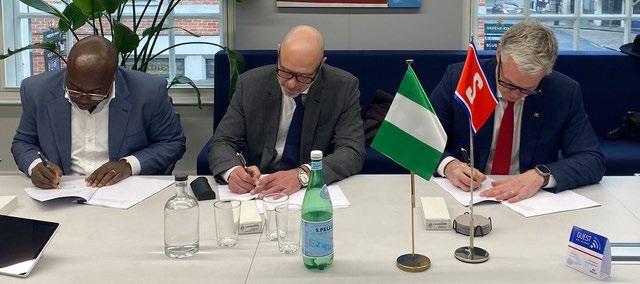
The RMT union has welcomed the Climate Change Committee’s (CCC) latest report on decarbonisation, calling for clear guarantees on jobs, pay, and conditions for workers in offshore energy and transport.
RMT General Secretary Mick Lynch says: “We welcome this independent report as decarbonisation is essential, but workers cannot be left behind especially in offshore oil and gas.
“There must also be a greater emphasis on investment to encourage a transition towards public transport, rail freight, and coastal shipping.
“Workers need a guarantee that in the new decarbonised economy the UK maintains an industrial base that can build that economy supporting jobs and incomes, instead of abandoning working-class communities to the international market.
“Too often, transitions like this are used as an excuse to slash and export jobs, cut pay and replace skilled, unionised workers with casualised labour on worse conditions.
“We will not accept a race to the bottom in the name of climate action.
“A genuine just transition must mean protecting wages, skills, and collective bargaining rights across the supply chain.”
More than 2,000 redundancies have hit offshore oil and gas in the past year, with the livelihoods of 1,800 catering jobs under the North Sea Confederation of Offshore Trade Association (COTA) agreement at particular risk.
Seafarers, divers and remotely operated vehicles (ROV) technicians must be protected through funded skills passporting and stronger employment rights.
RMT has welcomed the Labour government’s offshore skills passport, but the appointment of a GB Energy boss from offshore wind, a sector where collective bargaining is resisted, raises concerns about the application of the Make Work Pay reforms across the offshore energy sector.
Only 11.7% of UK seafarer jobs are held by UK-resident workers, a result of P&O-style employment practices and widespread Flags of Convenience. In offshore wind, low pay and exploitative shift patterns are common, with the minimum wage not applying beyond 12 miles from the shoreline.
RMT is demanding an enforceable transition plan that guarantees secure jobs, fair wages, and full collective bargaining rights across transport and energy sectors.
Meanwhile, the RMT has condemned yet another fall in the total number of UK resident seafarers, despite a big increase in the number of seafarer jobs to more than 160,800.
The number of UK resident Ratings working in the UK shipping industry fell three per cent to below 9,900 while the total number of Ratings increased by 7.2% to 134,250. As a result, only 7% of UK resident Ratings hold these jobs.
RMT general secretary Mick Lynch says that most of the increased demand in 2024 was met by Ratings recruited in non-EEA countries.
“These seafarers will be working on P&O style agency contracts that pay below the National Minimum Wage and on rosters that require months at work at sea, with access to shore leave infrequent and poorly regulated, despite this being a core MLC protection.
“While the number of Ratings apprenticeships started in 2024 increased but, at just 60, it is still far too low to reverse this relentless trend of exploiting foreign seafarers at the expense of coastal communities and UK maritime security,” he says.
Analysts warn proposed fees on China-built container ships importing goods into the US may have unintended consequences, including port congestion, increasing freight rates and shifts in global trade patterns.
The Trump administration has announced plans for a US$1m fee every time a vessel operated by a China carrier enters a US port. The Federal Notice also threatens further substantial fees for China-built vessels operated by a carrier from any nation. A third section in the notice proposes an additional charge levied against carriers based on the percentage of new ships on order being built in China.
Peter Sand, Chief Analyst at ocean and air freight intelligence platform Xeneta, says: “Ocean container carriers will take action to avoid the fees, such as calling at fewer ports, which could cause major congestion and delays in the US.
“We saw a similar situation last year when carriers cut port calls in Asia and handled more containers per call at Singapore in an effort to offset the impact of the Red Sea crisis and diversions around Africa.
“The intentions were good, but the severe congestion caused by handling more containers in Singapore rippled across global supply chains and saw average spot rates from the Far East to US East Coast spike more than 300%.
“Trump is weaponising trade against China, but you have to wonder if they truly understand the consequences of this policy because there is a high risk it will cause major disruption and make container shipping more cumbersome and expensive for US importers.”
Sand states that shippers could also take action to avoid the fees by importing goods into the US via Mexico and Canada.
Full year imports from China to Mexico in 2024 were up 15% compared to 2023 at 1.42m TEU (20ft equivalent container). Into Canada, imports from China are up 16% at 1.8m TEU.
Sand says: “Shippers have been using Mexico and Canada as a back door into the US to avoid tariffs on imports from China. Trump has vowed to stop this trend by imposing tariffs of 25% on imports from Mexico and Canada and make using these nations as a backdoor less attractive.
“If shippers now face new port fees on top of the tariffs when importing directly into the US, it could change the situation again and fuel further growth in imports from China to Mexico and Canada. Ironically, Trump may be indirectly driving one of the very things he’s trying to guard against.
“We could even see it cause an uplift in goods being shipped into the US by air. The potential repercussions and unintended side-effects of these port fees are impossible to predict with any degree of certainty, which makes it such a challenging situation for both US importers and carriers.”
Data analysed of carrier fleets by Xeneta shows Chinese ship operator COSCO will be hit hard due to it not only being the only Chinese carrier in the global top 10, but also having almost two thirds of its fleet built in China and 90% of its orderbook coming from Chinese yards.
No other top 10 carrier has more than 50% of its fleet coming from China, giving them more options to reallocate ships between trades and adjust schedules to minimise port calls for China-built ships. On the orderbook side, the European carriers (MSC, Maersk, CMA CGM and HapagLloyd) will also be hit, with all having more than half of current orderbook in Chinese yards.
With the exception of Ocean Network Express, the other Asian carriers will not be impacted by the orderbook fee.
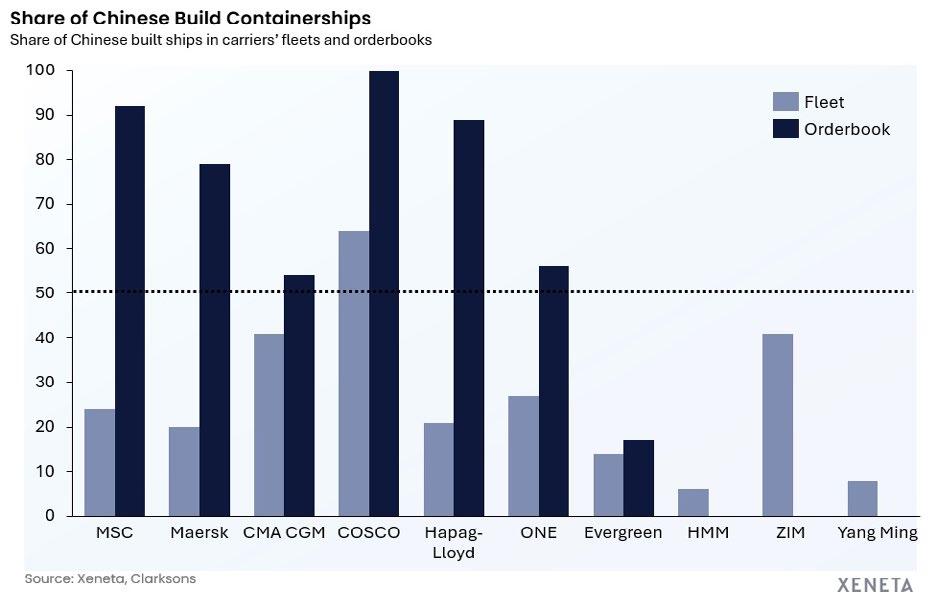
Sand says: “The threat of even higher costs to import goods into the US should be taken very seriously, but it remains to be seen whether it becomes a reality due to the impact it will have for US businesses and, ultimately, consumers.
“We understand from talking to Xeneta customers that they are watching and listening to every word that comes out of the US administration, but there is so much uncertainty that they are keeping their options open and being patient before taking any rash decisions on their supply chains.”
West P&I Club has drawn members’ attention to a concerning trend of pollution incidents involving vessels operating within Turkish waters and calling at Turkish ports.
The club has reminded members of the need to strictly adhere to all relevant national and international requirements relating to pollution and the importance of implementing appropriate operational precautions.
This comes at a time when fines by the Turkish authorities for pollution events have been increasing over the past 12 months.
A member’s vessel recently called into a Turkish port to conduct a transfer of slops from the vessel’s slop tank to an adjacent barge. Due to a lapse from the barge and the vessel, a quantity of slops were discharged into the sea because of a leakage that wasn’t immediately noticed. The de-slopping operation was halted soon after and the local Turkish coast guard was notified. This resulted in a significant fine.
The club highlights some key recommendations for vessels transitting Turkish waters when engaging in any operations where there is a risk of pollution.
While the list of recommendations is not exhaustive, it is imperative to comply with all relevant anti-pollution procedures within Member’s Safety Management Systems and ensure crews are fully familiar with these procedures.
A recent edition of TT Talk considers the issue of slot charterers limiting liability.
A container ship caught fire and sank near Colombo in Sri Lanka resulting in a total loss. The owner and bareboat charterer successfully claimed limitation of liability in the English Admiralty Court. The three slot charterers also argued for limitation on the basis they could be considered as shipowners too.
TT Club says “This judgment provides useful confirmation of the MSC Napoli case and applies the earlier judgment to agreements with different names but with basically the same substance. The result is that parties should not be discouraged from part-chartering a ship by the risk that they might be unable to limit under the Convention.” For more information, visit: ttclub.com
The Isle of Man Ship Registry (IOMSR) is playing a key role in the development of a high-tech sail aimed at reducing shipping emissions.
The AirWing was created by engineers in Hull and sea trials are now underway, following a development project that began three years ago.
Developers say it can significantly reduce fuel consumption and carbon emissions and produces 10 times the thrust of a conventional sail. The wing can operate up to wind speeds of 45 knots (Beaufort Force 9) and is built to withstand wind speeds of 100 knots.
Sea trials began in early March following the completion of work to fit the system to the DWT 11051 general cargo carrier Vectis Progress, an IOMSR-flagged vessel operated by Carisbrooke Shipping. Class society trials and certification took place earlier off Hull.
The technology is being tested on trans-Atlantic routes between northern Europe and Canada.
IOMSR worked closely with the development team to ensure the best method of installation and to ensure that the AirWing system is complaint with maritime legislation.
Its expertise has allowed the complex project to move forward at pace and IOMSR will continue its consultancy work.
The wind propulsion system has been developed by UK-based business GT Wings. It utilises fans to improve air flow across the AirWing. The system can be added to new vessels or retrofitted to improve fuel efficiency, cut emissions and reduce tax burdens under new EU emissions regulations.
The project received £3.7m funding after winning a UK government competition aimed at creating green jobs and boosting skills. The
‘We are proud to be playing our part in this truly groundbreaking project’

IOMSR Director Cameron Mitchell
Department for Transport is funding a number of schemes in a £30m plan to decarbonise the maritime industry.
UK Maritime Minister Mike Kane MP praised the team behind the AirWing on a recent visit to Hull to see the project saying: “I’m proud to see this funding boost growth and create jobs throughout the UK.”
Cameron Mitchell, IOMSR Director, says: “We are also proud to be playing our part in this truly ground-breaking project that is driving fresh innovation into the task of decarbonising the shipping industry.
“The initiative also aligns with the International Maritime Organization’s goals, to reach net-zero greenhouse gas emissions from international shipping by or around 2050, goals that IOMSR is also fully committed to, through our industry leading work.”
Captain Simon Merritt, senior fleet manager at Carisbrooke Shipping, describes the installation of the AirWing on the vessel as a “mammoth task”.
He says: “We have worked extremely hard to complete the project to
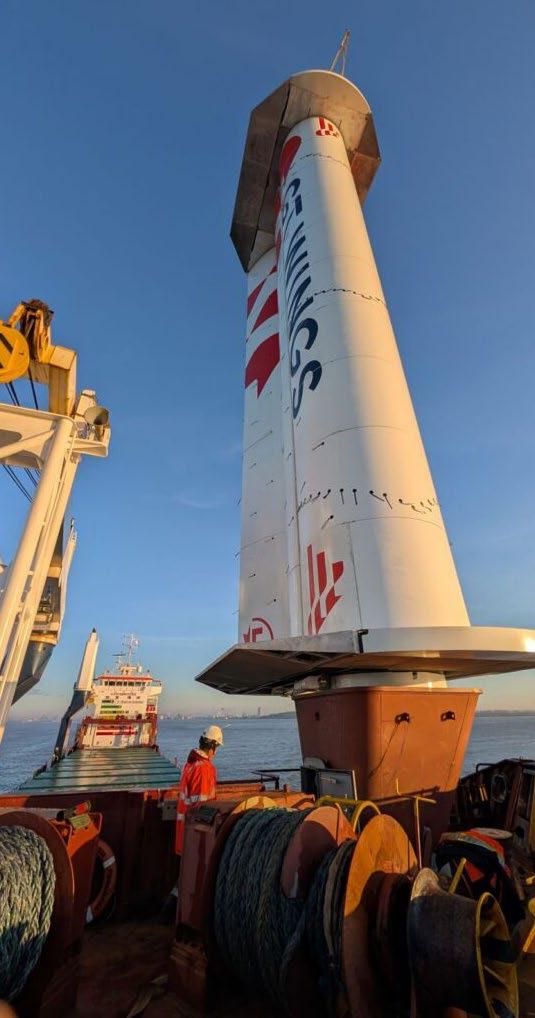
this stage and we have passed all milestones ahead of target. Testing will continue during the coming weeks.
“It demonstrates the power of collaboration between leading British companies, turning innovative ideas into real solutions to decarbonise the maritime industry while creating job opportunities in the UK.”
And George Thompson, chief executive of GT Wings, adds: “We’re extremely excited about the launch of AirWing, our next-generation, compact wind propulsion technology designed to help even the most challenging ocean-going vessels decarbonise by harnessing wind power.”
The IOMSR is building its expertise in maritime wind propulsion. Last year the world’s most powerful sailing cargo ship went into service under the Isle of Man flag.
Four WindWings were installed on the Berge Olympus as part of dry bulk ship owner Berge Bulk’s ambition to become carbon neutral by 2025. The
cutting-edge technology also uses wind power to reduce fuel and emissions.
The WindWings can save up to 20% fuel, reducing CO2 emissions by 19.5 tonnes per day on an average worldwide route. They were fitted on the vessel by Yara Marine Technologies.
IOMSR believes the maritime industry has a collective responsibility to respond to the climate emergency. It became the first flag state to join the Getting to Zero Coalition, an industry-led alliance working towards decarbonising the international maritime shipping sector.
In another industry leading development, IOMSR become the first flag state in the world to reduce registration fees for ships deploying green technology.
The registry is headquartered in Douglas, Isle of Man, a self-governing British Crown dependency and is a Category One member of the Red Ensign group.
For more information, visit:
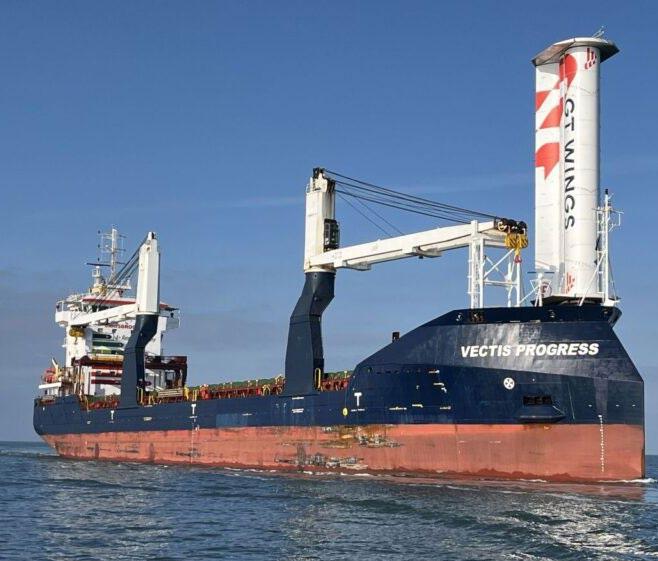
Baltic Exchange has launched a new series of chemical and agricultural oil assessments to meet the evolving needs of the maritime freight market and bring its expertise and benchmarking data to the chemical and agri-oil shipping sectors.
The Baltic Chemical and Agricultural Oil Assessments (BCAA) are being produced on a weekly basis. The assessments are designed to serve a segment of the freight market – across owners, charterers, brokers and trading companies – that is increasingly demanding key freight data and sector benchmarks on a more regular basis to make more informed financial decisions.
Known for its knowledge in dry bulk, tanker and gas freight sectors, alongside providing container and air freight data, Baltic Exchange is now set to engage with a broader spectrum of stakeholders, including shipowners, charterers, and industrial producers across the whole chemical, vegetable/agri-oil, and biofuel supply chains.
These industries provide vital products and uses to everyday life, from cleaning/hygiene products to food and cooking, construction materials, transportation, agriculture, clothing, and electronics.
Filling a gap in existing freight assessments, the BCAA will offer insights into a series of trade routes covering ‘easy-chemicals’ such as benzene, biofuels and caustic soda, as well as vegetable oils. The indices, priced in US$ per metric ton and basis 5,000 mt or 10,000 mt shipments (and 40,000 mt for vegetable oils), reflect the unique nature of chemical tankers, which carry multiple cargo types and require specialised handling beyond a traditional oil products carrier.
The trade routes covered by BCAA include:
» EC11: Northwest Europe to US Gulf
» EC22: Middle East Gulf to West Coast India
» EC23: Middle East Gulf to China
» EC34: US Gulf to Far East
» EC35: US Gulf to Northwest Europe
» EC36: US Gulf to Brazil
» EC43: Singapore to China
» EC52: Korea to West Coast India
» EC57: Korea to Singapore
» PO45: Singapore Straits to Northwest Europe
» VG62: EC South America to West Coast India
“Unlike traditional freight indices, chemical tanker operations are highly complex, involving multiple unrelated cargoes with very specific but diverse stowage and handling requirements. However, the chartering market has now become sufficiently mature for us to develop a reference price for these key trade lanes,” says Mark Jackson, CEO of Baltic Exchange.
“The launch of the BCAA underscores our commitment to broadening our services and providing critical transparency in underrepresented markets. By expanding into the chemical and agri-oil sectors, we are offering the freight market much-needed benchmarks for these specialised industries.
“This latest set of benchmarks reflects our dedication to supporting the diverse needs of the global shipping community, and we look forward to continuing to innovate and collaborate with stakeholders across shipping’s most important sectors.”
The EU plans to boost green aviation and shipping fuels, but sends worrying signal on 2040 climate goals, according to green group Transport and Environment (T&E).
New EU plans to lower energy costs by doubling down on deployment of renewable electricity, and to activate more investment and trade instruments to scale clean-tech, have been welcomed by green group T&E.
However, a decision to delay proposing an EU 2040 climate target sends a very worrying signal, the group says.
Other recent announcements included a Clean Industrial Deal that will prioritise the domestic production of renewable fuels for aviation and shipping. However, the EU Commission also rushed out new proposals to weaken the sustainability reporting rules that hold companies accountable for their environmental and social impacts.
The Action Plan on Affordable Energy aims to enable much higher levels of electrification in the economy, which the EU says should rise from 23% currently to 32% in 2030. However, more than one year after confirming that it will publish a 2040 emissions reduction target for the EU, the European Commission has not yet released a proposal as planned.
T&E said any climb-down from the expected -90% target would deprive European carmakers, airlines and shipping companies of the investment certainty that clean technology is here to stay.
T&E welcomed the prioritisation of green fuels in the Clean Industrial Deal. It said the plans for a Hydrogen Mechanism – which will connect hydrogen suppliers and buyers with financing options – and the prioritisation of the shipping and aviation sectors are crucial. But the Hydrogen Bank needs not only matchmaking tools, but also doublesided auctions, which were omitted. The text announced plans for a Sustainable Transport Investment Plan, which T&E said should focus on e-fuels as a priority investment.
Faig Abbasov, Shipping Director at T&E, says: “The Clean Industrial Deal is a step in the right direction, recognising the essential role that green hydrogen-derived fuels play in decarbonising shipping and aviation. But it lacks essential details on how the EU is going to bridge the price gap between fossil fuels and greener alternatives or address the need for larger and longer term offtake commitments. The Sustainable Transport Investment Plan should fill in those missing details or green fuels risk missing the boat and plane.”
The reform of state aid rules outlined recently will not adequately support EU-made clean tech or local supply chains, T&E says. It called for the Clean Industry State Aid Framework, which will be published in the second quarter of this year, to set out how European manufacturing can be
boosted through targeted and strictly conditional state aid. Without ‘Made-in-EU’ requirements or a performance-based approach to aid, Europe will struggle to get its local clean tech industry off the ground.
The Commission also said it would resort to using more trade defence instruments and activating greater EU investment for clean tech. T&E says adding conditions to foreign direct investment is the right step, but financial instruments to support clean tech must be better designed, as the struggling Hydrogen Bank shows. Investment support should be focused on production ramp-up, not pilots, and have local content rules for materials. These proposals need to be put into action quickly given the crisis happening in the local battery sector.
T&E welcomes plans for a labelling system for industrial products that will track their carbon intensity, starting with steel in 2025. The automotive sector consumes 17% of steel in the EU. Other provisions in the Clean Industrial Deal to support cleaner, locally-made products – such as EU content requirements and social leasing – are vague and need to be fleshed out in the forthcoming EU Automotive Plan next week and in an Industrial Decarbonisation Accelerator Act later this year.
Julia Poliscanova, Senior Director for Vehicles and eMobility Supply Chains at T&E, says: “The faltering European battery companies need urgent action to put the trade and investment pledges in the Clean Industrial Deal into action. A green labelling system can play to Europe’s strengths as a more sustainable manufacturer of steel and batteries. But we need to see much more detail about how labelling, as well as local content requirements, will actually work. The plans to overhaul state aid rules also do not go far enough for the EU to build up clean tech manufacturing.”
While there is space for simplification, T&E condemned the so-called Omnibus proposal that actually weakens rules that hold companies accountable for their environmental and social impacts. Companies would only need to look at direct suppliers when doing due diligence checks on their supply chains, under the proposed changes to the Corporate Sustainability Due Diligence Directive. Environmental damages or human rights abuses in raw materials extraction, for example, would therefore not be adequately scrutinised.
The Omnibus also proposes to delay by two years the requirements on companies to report their risks and impacts, under changes to the Corporate Sustainability Reporting Directive. It would also limit the obligations to businesses with more than 1,000 employees and a turnover of €450m. A lack of environmental, social and governance (ESG) information due to a reduced scope of the law would make it very difficult for companies to assess their lifetime emissions across the entire value chain.
Giorgia Ranzato, Sustainable Finance Manager at T&E, says: “The infamous Omnibus package is out. While there is space for simplification, the latest proposal throws Europe into reverse, erasing a decade of gains in
sustainability and global competitiveness. If approved, the new sustainability reporting obligations will only apply to 0.02% of European companies. This risks a disastrous lack of ESG data across the region, creating a nightmare for responsible investors and consumers. This new package guts corporate accountability.”
Baseblue, a provider of marine energy solutions, has launched a new bunker fuel supply service at Point Lisas Port, Trinidad. The service will provide vessels with reliable and efficient fuel options, eliminating logistical challenges and enhancing operational efficiency.
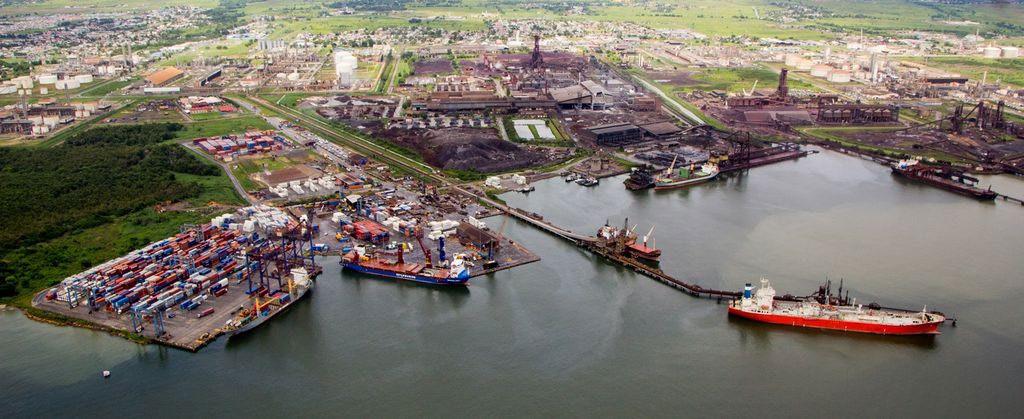
Point Lisas Port, one of the major maritime hubs in Trinidad, comprises four key terminals: Point Lisas Industrial Port Development Corporation (PLIPDECO), Savonetta, Yara Trinidad, and Phoenix Gas. Baseblue’s new supply service will primarily focus on PLIPDECO and Savonetta terminals, where the local supplier’s storage tanks (VLSFO 20,000bbls & LSMGO 10,000bbls) are based. This strategic location ensures seamless fuel delivery through truck-to-ship and pipe-to-ship methods, enhancing convenience and reliability.
The bunker fuel supplied by Baseblue is sourced from leading refineries in the US Gulf, ensuring high-quality and reliable fuel that meets industry standards. Vessels can now access fuel and low-sulphur marine gas oil (MGO) directly at the terminal, mitigating delays caused by weather conditions and logistical bottlenecks commonly experienced in anchorage areas.
Ignacio Gaviña Alvarado, Marine Fuel Supply, Baseblue, says: “This new service represents a significant step forward in providing vessels calling at Point Lisas Port with a dependable fuel supply. By delivering fuel directly at the terminal, we are improving operational efficiency, reducing waiting times, and minimising environmental impact.”
The introduction of this service marks a departure from the traditional reliance on barge deliveries, offering a more efficient and environmentally friendly solution. By minimising delays and optimising fuel supply logistics, Baseblue’s service contributes to reducing greenhouse gas emissions and supporting the maritime industry’s sustainability goals, an even more significant advantage with the recent activation of FuelEU Maritime in January, where vessels are mandated to reduce fuel emissions.
Industry coalition SEA-LNG has confirmed its latest board of directors with new representatives from Bernhard Schulte Shipmanagement (BSM), Galveston LNG Bunker Port, MAN Energy Solution, MSC Mediterranean Shipping Company SA, Sohar Port and Freezone and Titan Clean Fuels.
The board of directors includes representatives from each stakeholder sector across the liquefied natural gas (LNG) value chain. Each sector-specific board representative is accountable to the members in their sector. SEA-LNG also had six board seats for voted on by the general membership, Chairperson and five at large board seats. In addition to defining SEA-LNG’s strategy, they ensure members can effectively contribute their expertise to the coalition. All directors will serve a two-year term of office until December 2026.
Peter Keller, Chairman, comments: “As we see record ordering of LNG-powered vessels with over 6% of the global fleet due to utilise LNG, liquified biomethane and ultimately liquefied e-methane, I am pleased that we have been able to broaden the leadership of SEA-LNG. Expanding the number of directors, through two new at large seats, has enabled us to bring onboard industry leaders from around the world.”
The board oversees all SEA-LNG working groups, including investment, regulatory, stakeholder engagement, and emissions working groups. It ensures that these groups consider the perspectives of all stakeholders and identify knowledge gaps that further analysis. This industry grounding leads to research that is practical, credible, and valuable to the shipping industry’s decision-makers.
In addition, the SEA-LNG Board has invited Panos Mitrou, (Lloyd’s Register) to remain as a Board Observer/Advisor given his vital role as Chair of the Methane Abatement in Maritime Innovation Initiative (MAMII)
Keller added: “2025 looks set to be a significant year for shipping decarbonisation, with critical decisions looming at the International Maritime Organization. We are seeking to build on the successes of 2024, and the work of all previous Board members since SEA-LNG’s establishment in 2016. As we look forward, the LNG pathway will only cement itself further, and efforts from SEA-LNG will be critical. Our new board of directors represent key links in the LNG value chain and together we will ensure that we deliver a pragmatic and realistic pathway for shipping to decarbonise and tackle harmful local emissions today.”
A new initiative led by the International Maritime Organization (IMO) and the Kingdom of Saudi Arabia (KSA) aims to address the global seafarer shortage while creating career opportunities for aspiring seafarers from developing nations.
The NextWave Seafarers Project was formally launched with the signing of a Letter of Agreement between Kamal M. Al Junaidi, Permanent Representative of Saudi Arabia to the International Maritime Organization and Jose Matheickal,
Director of the Technical Cooperation and Implementation Division (TCID) of IMO.
The signing was witnessed by IMO Secretary-General Arsenio Dominguez, with senior representatives from the Transport General Authority (TGA) of KSA and Bahri Shipping Line in attendance.
Running from 2025 to 2026, the NextWave Seafarers Project will provide 20 cadets from Least Developed Countries (LDCs) and Small Island Developing States (SIDS) with one year of onboard training through Bahri Shipping Line, one of Saudi Arabia’s leading maritime companies.
The goal is to develop a scalable training model that can be adopted globally, encouraging more countries and shipping lines to participate.
The project aims to:
» Establish a sustainable, onboard cadet-training framework to develop, upskill, and retain future seafarers;
» Address key barriers preventing LDCs and SIDS cadets from entering the industry, including access to training placements and financial support;
» Promote gender diversity by actively encouraging women cadets to join the programme; and
» Showcase the initiative as a pilot model that can be expanded and replicated worldwide.
With 1.9m seafarers ensuring the movement of more than 80% of global trade, the maritime industry faces an urgent workforce challenge, particularly a shortage of officers, as demands on maritime transport grow.
Through its cooperative framework between IMO, member states and shipping companies, the NextWave Seafarers initiative provides a proactive solution by creating a structured talent pipeline and a steady influx of skilled professionals into the sector.
IMO Secretary-General Arsenio Dominguez stressed the importance of strengthening the maritime workforce: “The future of the global shipping industry depends on its people, and this initiative has the potential to transform maritime careers for young seafarers worldwide.”
Kamal M Al Junaidi, Permanent Representative of Saudi Arabia to the IMO, highlighted the Project’s broader vision: “Through this initiative, we aim not only to train the next generation of seafarers but also to lead and inspire other nations and shipping companies to adopt similar programmes.”
The NextWave Seafarers Project invites IMO member states, training institutions, and shipping companies to collaborate in expanding this initiative and building a skilled, diverse, and resilient maritime workforce.
Designed as a proof of concept, the project’s outcomes will be shared with IMO Member States to shape future policy recommendations, enhance global seafarer training frameworks, and contribute to long-term maritime workforce planning.
IMO will issue a circular letter in due course requesting nominations of cadets from LDCs and SIDS through their respective maritime administrations. The circular letter will explain the criteria for selection and mode of participation in the training programme.

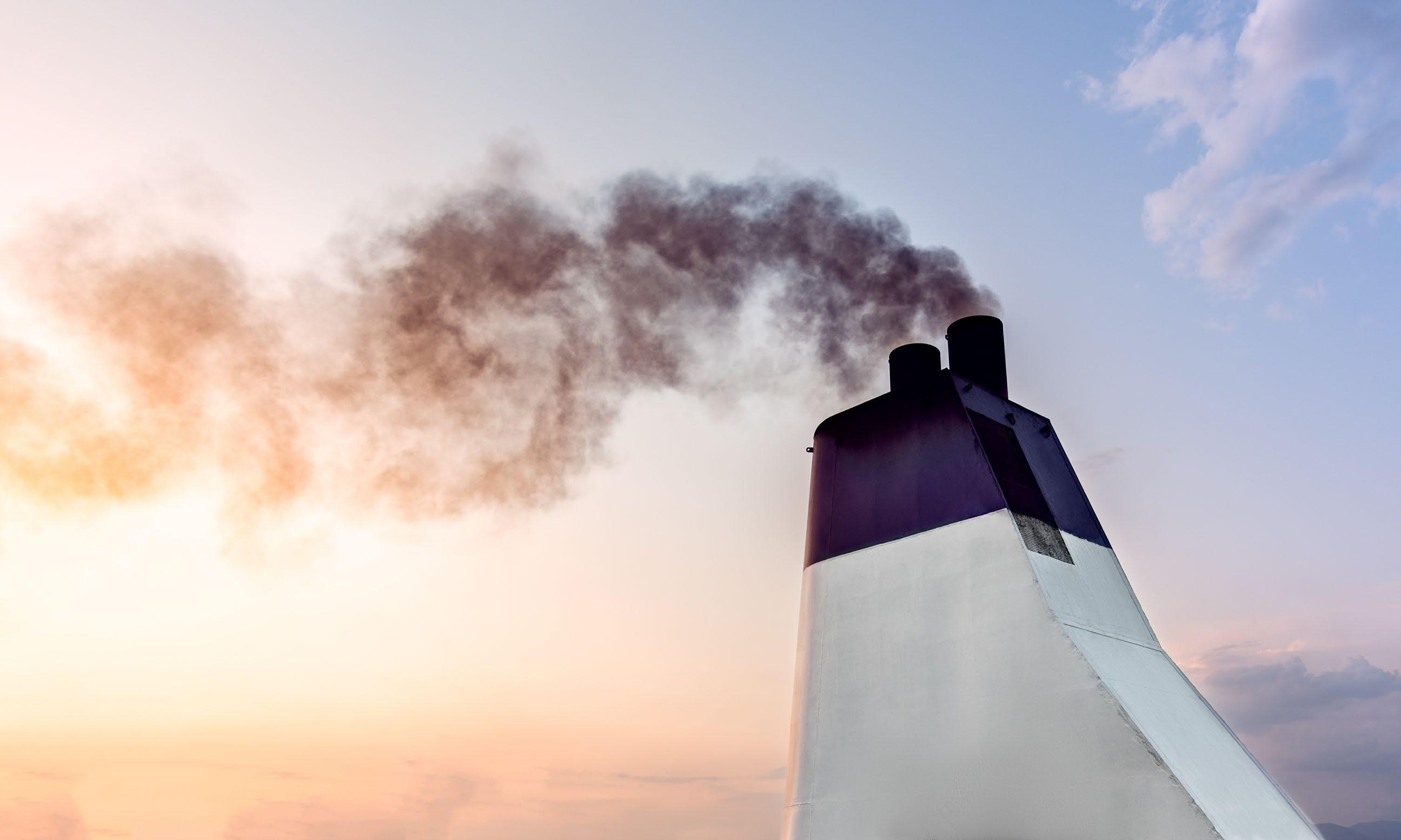
C o m p a r i s o n o f T h r e e M e t h o d s f o r M o n i t o r i n g C O ₂
a n d O t h e r G a s e s f r o m V e s s e l s
A b s t r a c t
T h i s s t u d y c o m p a r e s t h r e e m e t h o d s f o r m o n i t o r i n g C O 2
e m i s s i o n s f r o m v e s s e l s : d i r e c t e x h a u s t m e a s u r e m e n t , f u e l -
b a s e d c a l c u l a t i o n s , a n d e n g i n e l o a d - b a s e d c a l c u l a t i o n s D a t a
f r o m f i v e e n g i n e s o n a c r u i s e s h i p w e r e c o l l e c t e d o v e r s e v e r a l
w e e k s T h e C o n t i n u o u s E m i s s i o n M o n i t o r i n g S y s t e m ( C E M S )
w a s u s e d f o r d i r e c t m e a s u r e m e n t , w h i l e f u e l c o n s u m p t i o n a n d
e n g i n e l o a d p r o v i d e d c a l c u l a t e d e s t i m a t e s R e s u l t s s h o w e d
s t r o n g c o r r e l a t i o n s b e t w e e n m e t h o d s , w i t h d i r e c t m e a s u r e m e n t
o f f e r i n g h i g h e r a c c u r a c y
I n t r o d u c t i o n
M A R P O L A n n e x V I , a d o p t e d i n 1 9 9 7 , a i m s t o r e d u c e v e s s e l
e m i s s i o n s , i n c l u d i n g C O 2 , N O x , a n d S O x M a r i t i m e t r a n s p o r t
c o n t r i b u t e s 2 - 3 % o f g l o b a l C O 2 e m i s s i o n s T h e E U i n t r o d u c e d
R e g u l a t i o n ( E U ) 2 0 1 5 / 7 5 7 t o m o n i t o r a n d v e r i f y C O 2 e m i s s i o n s
S i n c e 2 0 2 4 , t h e E U E m i s s i o n s T r a d i n g S y s t e m ( E T S ) r e q u i r e s
s h i p s t o p u r c h a s e a l l o w a n c e s f o r C O 2 e m i s s i o n s , i n c e n t i v i z i n g
c l e a n e r t e c h n o l o g y D i r e c t m e a s u r e m e n t ( M e t h o d D ) e n s u r e s
a c c u r a c y b u t p o s e s c o s t a n d i m p l e m e n t a t i o n c h a l l e n g e s .
M o n i t o r i n g S y s t e m M e t h o d o l o g y
I n - S i t u G a s A n a l y s e r
T h e P 2 0 0 0 a n a l y s e r m e a s u r e s p o l l u t a n t c o n c e n t r a t i o n s i n
e x h a u s t g a s I t u s e s i n f r a r e d ( I R ) a b s o r p t i o n t o d e t e r m i n e C O 2 ,
C H 4 , S O 2 , N O x , a n d H 2 O l e v e l s
a t m o s F l o F l o w m e t e r
M e a s u r e s e x h a u s t g a s f l o w r a t e t o d e t e r m i n e v o l u m e t r i c
e m i s s i o n s
M a s s E m i s s i o n C a l c u l a t i o n
M a s s e m i s s i o n s a r e c a l c u l a t e d a s :
C O 2 M a s s E m i s s i o n R a t e = F l o w R a t e ( m ³ / h r ) × C O 2
C o n c e n t r a t i o n ( k g / m ³ )
T e m p e r a t u r e a n d p r e s s u r e c o m p e n s a t i o n e n s u r e a c c u r a c y b y
n o r m a l i s i n g d a t a t o s t a n d a r d c o n d i t i o n s
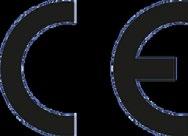

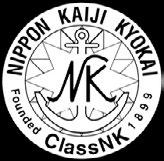

C o m p a r i s o n w i t h S e c o n d a r y M o n i t o r i n g M e t h o d s
M e t h o d C : F u e l - B a s e d C a l c u l a t i o n
C O 2 e m i s s i o n s a r e e s t i m a t e d f r o m r e c o r d e d f u e l c o n s u m p t i o n
u s i n g t h e e m i s s i o n s f a c t o r ( 3 2 0 6 k g C O 2 / k g f u e l ) A
c o m p a r i s o n o f d i r e c t v s f u e l - b a s e d m e a s u r e m e n t s o v e r 1 6
d a y s s h o w e d a s t r o n g c o r r e l a t i o n ( R 2 = 0 9 9 3 )
M e t h o d B : L o a d - B a s e d C a l c u l a t i o n
C O 2 e m i s s i o n s a r e e s t i m a t e d u s i n g e n g i n e p o w e r ( k W ) a n d
e m i s s i o n s f a c t o r s d e r i v e d f r o m I S O 8 1 7 8 - 4 t e s t r e p o r t s L o a d -
b a s e d e s t i m a t e s a l s o c o r r e l a t e d s t r o n g l y w i t h d i r e c t
m e a s u r e m e n t ( R 2 = 0 9 9 8 4 )
R e s u l t s a n d E v a l u a t i o n
O v e r 1 6 d a y s , a l l t h r e e m e t h o d s c o r r e l a t e d s t r o n g l y , w i t h d i r e c t
m e a s u r e m e n t r e c o r d i n g a 3 5 % l o w e r C O 2 o u t p u t t h a n f u e l -
b a s e d c a l c u l a t i o n s T h i s d i s c r e p a n c y s u g g e s t s f u e l - b a s e d
e s t i m a t e s m a y o v e r e s t i m a t e e m i s s i o n s d u e t
c o m p l e t e c o m b u s t i o n
C o n c l u s i o n
D i r e c t m e a s u r e m e n t ( M e t h o d D ) c l o s e l y
c o m p l i a n c e a n d o p e r a t i o n a l d e c i s i o n s I t a l s o a c c o u n t s f o r
v a r i a t i o n s d u e t o a b a t e m e n t t e c h n o

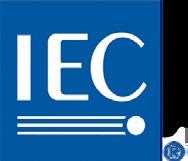
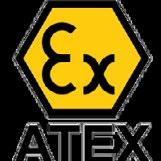

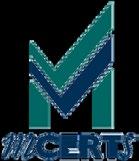
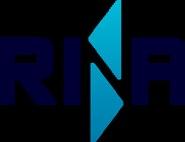
Scrubbers, a proven and longstanding technology, are essential for reducing air emissions. They not only remove sulphur oxides (SOx) from exhaust gases but also tackle other pollutants such as nitrogen oxides (NOx) and particulate matter. Their role extends further as they can mitigate emissions from emerging e-fuels, underscoring their importance in environmental sustainability. Moreover, scrubbers have evolved into efficient carbon capture solutions, crucial in the transition toward lower CO2 and greenhouse gas emissions.
PureteQ is currently installing new scrubber systems on vessels in China and in Europe for European and Asian owners. Nearly all dualfuel new builds now incorporate scrubbers. These systems are driving advancements in carbon capture technology, serving as pretreatment for CO2 capture onboard ships – an important step in reducing global emissions.
Given the projected scarcity and high production costs of green fuels, scrubbers and CO2 capture systems are emerging as vital, long-term and cost-efficient solutions rather than merely interim measures.
Container shipping companies have saved US$13bn since 2020, according to a report by Sea-Intelligence. The report highlights the economic advantages of effective environmental measures, such as scrubbers, which ensure full compliance with stringent environmental regulations.
Sea-Intelligence emphasises the vital role of innovation and technological investment in fostering economic growth and sustainability within the shipping sector.
The most common scrubber systems are open-loop scrubbers, primarily due to their lower cost and complexity compared with closed-loop or hybrid alternatives. While cost-effective, open-
loop scubbers face increasing scrutiny due to environmental concerns, particularly regarding their potential impact on marine biodiversity. However, open-loop scrubbers emit only a small fraction of the limits set by
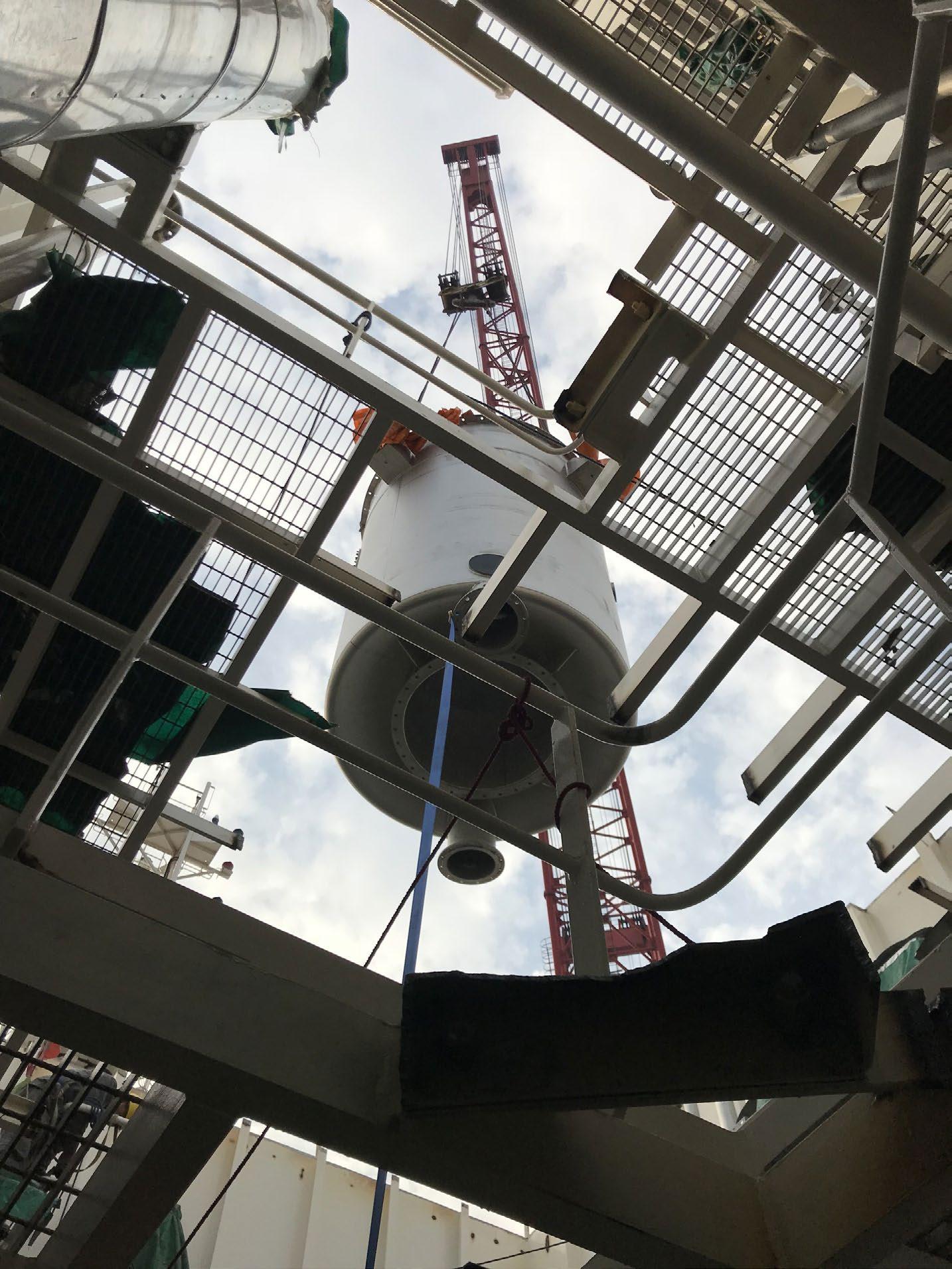
the International Marine Organization (IMO) for washwater discharge.
Recent discussions about the potential negative impacts of openloop exhaust gas cleaning systems in environmentally sensitive areas – such as ports or regions with strict discharge regulations – have prompted the IMO to call for validated sampling data.
In response, Norwegian shipowner Solvang has publicly submitted five years of sampling data from its exhaust gas cleaning systems aboard 13 vessels. Verified by SINTEF, an independent research institute, this data effectively refutes a recent German report that presented inflated figures based on inaccurate emission factors and methodological errors.
Solvang’s validated data, now under review by Norwegian Maritime Authorities and submitted to the IMO for high-level environmental risk assessment, demonstrates that the contamination from exhaust gas cleaning systems is a fraction of the levels reported in the German study.
Globally, the use of closed-loop scrubbers is on the rise. These systems release little to no washwater into the sea when operating in closed-loop mode, making them
ideal for environmentally sensitive regions. Despite being considered future-proof and offering enhanced adaptability, closed-loop scrubbers come with higher costs and greater operational complexity.
To balance cost, compliance, and operational needs, many operators are adopting hybrid scrubbers, which combine both open-loop and closedloop functionalities.
The efficiency of scrubbers depends on their ability to effectively treat exhaust gases under varying loads. This effectiveness is determined by the fundamental design of the scrubber tower and the control mechanisms that govern its operation. Maintaining optimal scrubber efficiency requires continuous monitoring and regulation of the washwater system. Any drop in efficiency results in increased electricity consumption and higher operational costs.
PureteQ scrubber systems are renowned for their high energy efficiency and advanced automation, enabling lower operational costs compared to other brands. PureteQ service engineers can fine-tune even

less efficient scrubber systems from other manufacturers to minimise energy consumption caused by over-scrubbing.
To further enhance energy efficiency, PureteQ offers shipowners access to Pure-SPOT, a web-based scrubber performance optimisation tool.
Available through a service agreement, this tool reduces energy usage across all scrubber brands, lowering operational costs and improving a ship’s carbon intensity indicator (CII) rating.
Maximizing energy efficiency is critical as the shipping industry navigates the challenges of low-carbon fuels and onboard carbon capture technologies, which are still on the horizon. By investing in advanced scrubber systems and optimisation tools such as Pure-SPOT, the shipping sector can simultaneously achieve economic and environmental goals, paving the way for a more sustainable future.
For more information, contact: Anders Skibdal, CEO PureteQ A/S, Sverigesvej 13, 5700 Svendborg, DenmarkEmail: anders@pureteq.com Tel: (+45) 40 17 14 00 pureteq.com

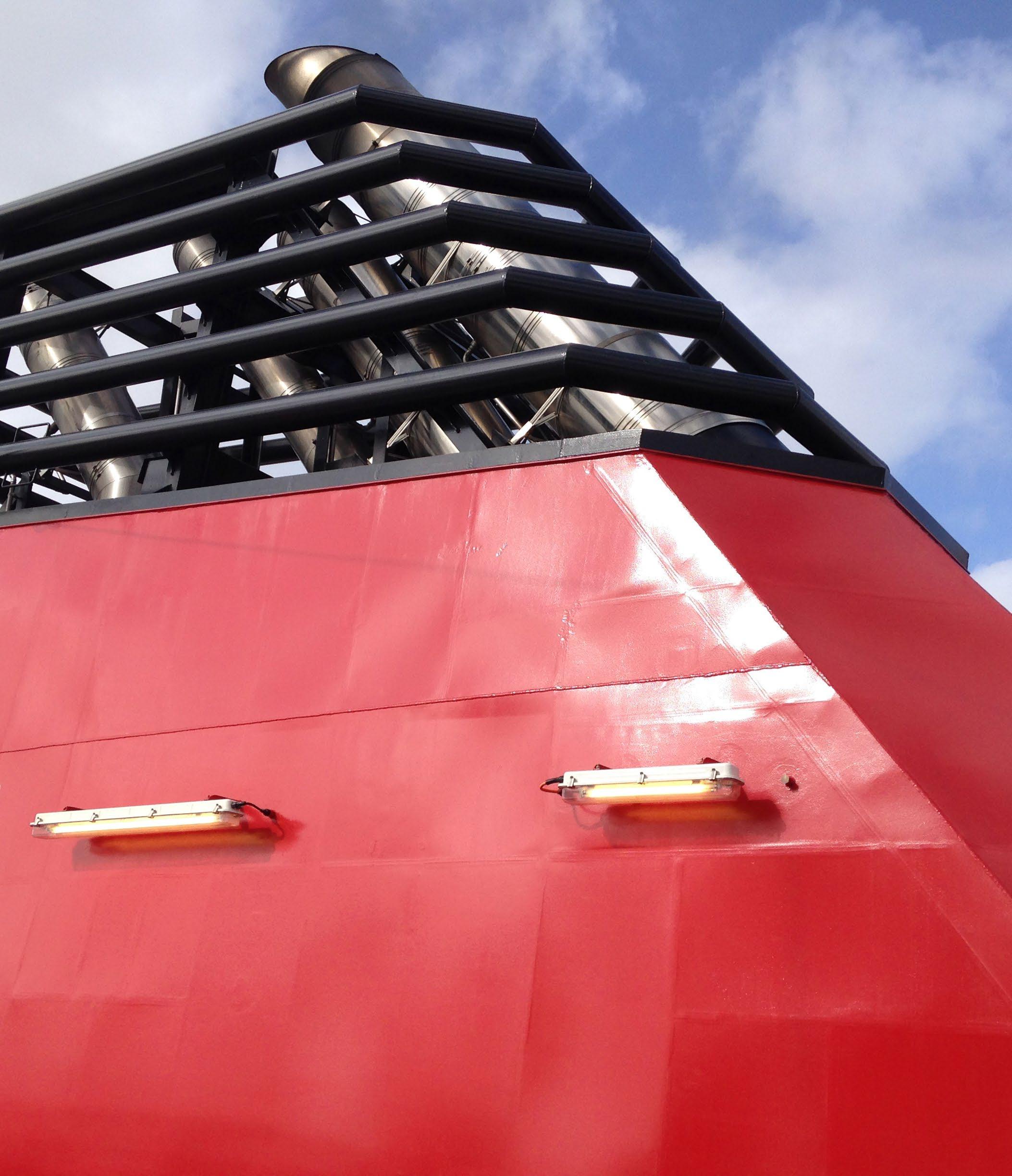
Further regulation relating to the use of open loop scrubbers has been introduced by various countries, notably in Scandinavia and is due to come into force in the next few months.
In alignment with Denmark’s forthcoming ban on discharging wash water from open-loop exhaust gas scrubber systems within 12 nautical miles of its coast, starting 1 July 2025, Sweden has decided to introduce the same restrictions within its territorial waters.
The Swedish government proposed in June 2024 that discharge from open-loop scrubbers would be banned starting 1 July 2025. This will be followed by a comprehensive ban on discharges from all scrubber types, including closed-loop bleed-off wash water, effective 1 January 2029.
Before the proposal, some Swedish ports had banned open-loop scrubber discharge within their port limits; however, there was no nationwide ban on wastewater discharge from openloop ship scrubbers.
As West P&I Club recently mentioned in a commentary on the issue: “While there is no universal legislation within the European Union regarding the prohibition of discharges from scrubbers, a significant global trend is emerging. Several countries and ports independently implement such regulations, indicating a larger movement towards environmental protection.
“When the International Maritime Organization (IMO) placed stricter regulations regarding controlling sulphur oxide (SOx) and nitrogen oxide (NOx) emissions from vessels in 2020, the decision led to some vessels installing exhaust gas cleaning systems.
“While effectively reducing air pollution, exhaust gas scrubbers have faced criticism for transferring the pollutants they remove from the air to water, which is considered a nonsustainable solution. This criticism has led to some countries prohibiting scrubbers and pushing shipowners to use other viable pollution control measures, such as low-sulphur fuel oil and alternative fuels.”
Exhaust gas cleaning systems (EGCS) – more commonly referred to as scrubbers – are an accepted equivalent measure in complying with the IMO 2020 global sulphur cap. The use of scrubbers has split the
shipping industry. Ports around the world continue to look at the impact of scrubber use in their waters says NorthStandard P&I Club.
Many ports and regions have already stated that they will not allow the discharge of washwater from openloop scrubbers.
The club has produced a table to be found on the club website, which summarises its understanding of the positions taken by ports that have or will prohibit the use of scrubbers or have placed conditions on their use.
This information was researched and gathered in collaboration with the Clean Shipping Alliance.
For more information, visit: westpandi.
com
The Clean Shipping Alliance (CSA) represents a group of leading shipping companies in emission control efforts through their investments in research, analysis and funding on the development and use of Exhaust Gas Cleaning Systems (EGCS) for the ongoing compliance with the IMO 2020 fuel requirements.
Comprising 25 members, the CSA represents more than 3,000 ships from the commercial shipping and cruise industries, so as a diverse group of major shipping companies
from across the maritime industry, there are different perspectives on future priorities.
However as an alliance the organisation says members are aligned on the major role that energy savings/fuel efficiency must play in the general decarbonisation effort, and the importance of biofuels and liquefied natural gas (LNG), including bioLNG, in starting to replace current marine fuels in the near and mid-term.
The organisation estimates that approximately 4,000 ships globally are fitted with EGCS/scrubbers, about 8% of the global trading fleet, are providing a practical, transitional bridge to alternative fuel solutions which are not yet ready.
“As EGCS used with heavy fuel oil (HFO) have inherently higher quality air emissions than very low sulphur fuel oil (VLSFO) – which is 60% of the marine fuel in use today – and have a smaller lifecycle carbon footprint than marine gasoil (MGO), they fit comfortably into the mix as a transition technology and support the IMO ambitions for lowering CO2 emissions by 2030,” the organisation says.
The combination of EGCS plus HFO also provides a significant local air emissions benefit, including lower SOx, NOx and polycyclic aromatic hydrocarbons than when using VLSFO or MGO, it says in a recent commentary.
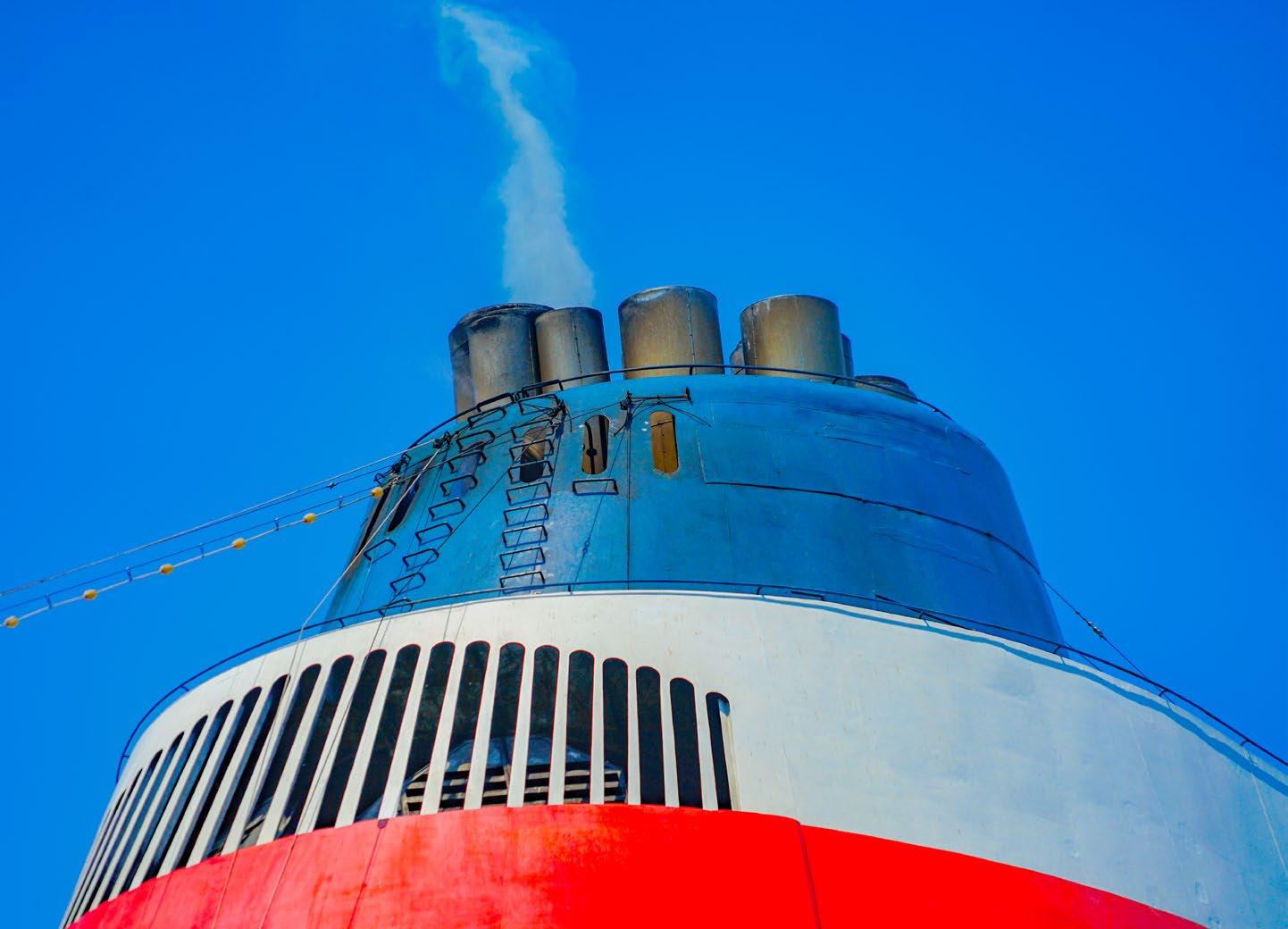
As one of the world’s leading tanker companies, TORM employs a variety of methods to reach ambitious decarbonization targets. One method utilizes an often-overlooked energy source: waste heat.
TORM began by acquiring a typical land-based water-to-water heat pump with the aim of reducing oil-fired boiler
fuel consumption and CO2 emissions. This proved to be a successful investment, however, there was still room for improvement.
Recognizing the need for a specialized system and helpful service provider, TORM reached out to ME Production, already a trusted partner in environmental solutions. Together, they embarked on developing a heat pump specifically designed for the demanding maritime environment. The result? A groundbreaking marine heat
pump system. This marine heat pump is a well-known technology modified and tuned to reuse waste heat instead of throwing it away. Not only does the heat pump reduce fuel consumption and CO2 emissions for TORM but also lays the groundwork for other ship owners seeking innovation.
Ships discard waste heat when low-temperature cooling water (LTCW) from running machinery is cooled by sea water and returned to the environment. When vessels are
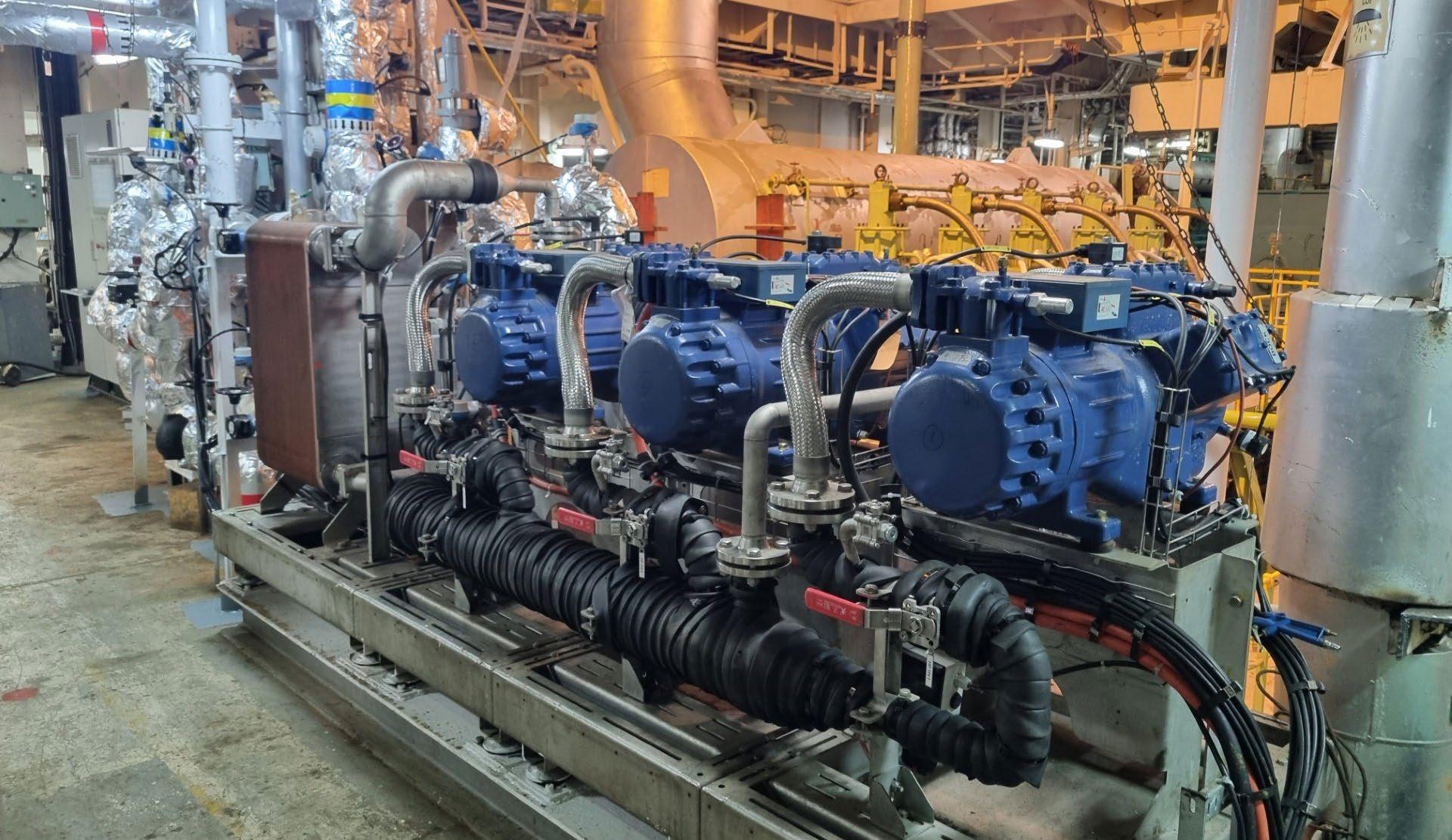
idle, their heating needs are usually provided by oil-fired boilers. TORM saw a clear opportunity to recover the energy in waste heat and eliminate fuel consumption on oil-fired boilers, effectively saving fuel and reducing CO2 emissions. By capturing LTCW energy at around 30–40°C and using the heat pump to elevate that temperature to 85–90°C in the hot water system, we can eliminate the fuel consumption of oil-fired boilers. The heat pump provides heating of everything from the main engine jackets to the accommodation as well as domestic water. This is particularly useful when the main engine economizer is not providing heating, such as during port stays and anchorage.
The collaborative effort led to the marine heat pump with a 300 kW heating output and a Coefficient of Performance (COP) of 2.5-3. This system effectively amplifies the heat recovered, compared to the electrical energy it consumes. This design can replace the traditional steam-based loops with a more efficient water-based heating system. The benefits are clear even in spite of new piping needs and heat transfer interfaces on the vessel.
Before installing the HeatSmart prototype on a TORM vessel, ME Production conducted extensive
performance mapping and long-run tests at the company’s own facility. This ensured that the system would meet TORM’s operational requirements and withstand the rigors of maritime conditions and regulations. Close collaboration and shipboard feedback allowed both partners to tweak controls and components for the best possible performance.
A key feature of the marine heat pump system is its modular design, which minimizes retrofit challenges and costs, as the heat pump is engineered in sections sized to fit through existing hatches and corridors. Each heat consumer (for example the main engine) has its own dedicated kit that includes controllable valves and sensors for optimal heat distribution.
After success and learnings from the first prototype installation, TORM has now installed prototypes on five vessels. Each heat pump is expected to eliminate a net 400-500 MT CO2 per year on TORM’s already fuel-efficient operations, making this an attractive proposition for shipping companies looking to gear their operations towards tightening climate regulations.
For more information, visit: meproduction.com
The installed heat pumps are already yielding net savings of around 800 kg of fuel per idle day—about 2,500 kg reduction in CO₂ emissions per vessel. These numbers not only validate the system’s efficiency but also highlight its potential for broader application in maritime decarbonization initiatives.
» Fuel Savings – Reclaiming LTCW heat substantially reduces fuel consumption on oil-fired boilers.
» Environmental Benefits –Lower emissions are especially valuable in ports, aiding compliance with ever-stricter environmental regulations.
» Operational Advantages.
» During idle periods, TORM can reduce the use of extra fuel on oil-fired boilers.
» During slow steaming, the heat pump can maintain heating which eliminates additional fuel consumption on the oilfired boiler.

Per Skaaning Moelris, Vice President, Head of
We are excited to see the heat pump in service and helping us save on fuel and emissions. We look forward to optimizing the system further alongside ME Production
Purchase & Technical Decarbonization

























































The need to improve sustainability in the shipping industry is accelerating. The global industry must cut carbon emissions, protect marine biodiversity and leverage the use of data for smarter decision making.















With nearly 100 years of experience of charting through unknown waters, Jotun is committed to continuously innovate and develop advanced products and solutions designed to protect biodiversity and cut carbon emissions to support global sustainability ambitions and achieve cleaner operations for all industry players.












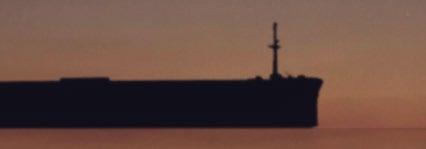









































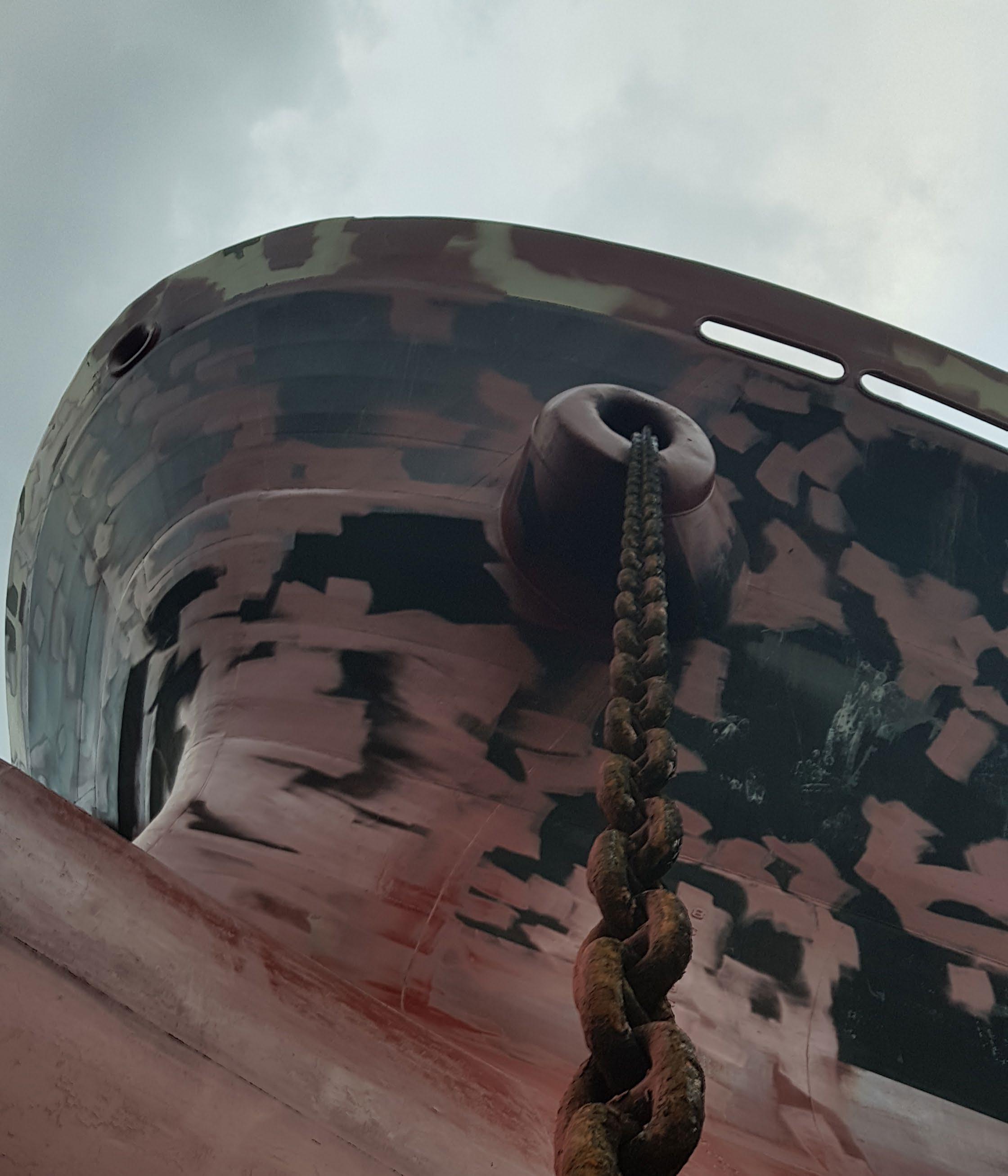
Paints and coatings, as well as hull cleaning devices, have a major role to play in improving the efficiency of shipboard operations and reducing vulnerability relating to material and organisms that attach themselves to vessels, whether in transit or in moorings
Castrol has launched a new stern tube oil range, Castrol BioStat ST. The stern tube oil range is for use in stern tubes, CPP systems and stabilisers. It is based on selected synthetic esters and an optimised performance additive system. The lubricant has been specifically designed to provide a very good level of lubrication and corrosion protection, good oxidation performance and hydrolytic stability.
Castrol BioStat ST is an environmentally acceptable lubricant (EAL) that has been developed and tested to comply with the US Environmental Protection Agency Vessel Incidental Discharges Act (VIDA) 20182, with the lubricant being biodegradable, minimally toxic and not bio accumulative, as currently defined by the 2013 US VGP criteria.
Offering improved oxidation, hydrolytic and thermal stability, Castrol BioStat ST also offers higher resistance to corrosion in the EMCOR test with synthetic seawater based on competitor analysis. Castrol BioStat ST emulsifies readily with sea water entering the stern tube to form a stable emulsion. This reduces the risk of free water, which, according to Castrol analysis, can severely impact stern tube components’ health and performance.
Castrol’s BioStat ST is compatible and miscible in all proportions with Castrol BioStat and has also been tested and approved by key leading stern tube and sealing manufacturers. Castrol’s bio range of lubricants is carbon neutral in accordance with BSI PAS 2060 since 2021.
Eda Gökay, Global Marine and Energy Marketing Manager, Castrol, says: “Castrol BioStat ST demonstrates our commitment as an end-to-end lubrication service provider. It is a clear example of our mission to deliver high-performing EALs, which are biodegradable, minimally toxic, and non-bio accumulative lubricants that provide the equipment protection the maritime sector depends on while meeting complex regulatory targets.”
Gökay adds: “For 125 years, Castrol has been at the forefront of marketleading lubricant solutions, and the latest Castrol BioStat ST product is
another example of our proactive approach to meeting our customers’ needs. It provides operators and crew with a reliable lubricant proven to deliver improved performance and stern tube health.”
Government agency Innovation Norway has provided ECOsubsea with a NOK 69m (US$6.2m) Green Growth Loan that will part-fund the construction of more of the company’s next-generation hull-cleaning robots, as it gears up to significantly expand its operations in the world’s second-busiest port.
The Austevoll-based company undertook its first commercial clean in Singapore in the autumn, using its first next-generation cleaning robot dubbed the ‘Pink Panther’. Cleanings are performed while vessels are bunkering at anchor, with the robot deployed from a specially adapted tug vessel.
The Green Growth Loan will support the construction of further robots in a project worth NOK 150m in total. The robots will be built in Norway and deployed in Singapore, while the total project cost includes the cost of retrofitting port service vessels to carry them. Increasing ECOsubsea’s capacity in Singapore comes as ship operators increasingly realise the bottom-line value of keeping hulls clean, reducing fuel consumption and CO2 emissions.
“The purpose of Green Growth
Loans is to incentivise private capital while providing attractive terms for companies investing in climate-friendly solutions,” says Innovation Norway CEO Håkon Haugli. “ECOsubsea’s results have surpassed all expectations, and this year will be the first full year of operation for the Pink Panther.
“We are proud this unique solution has been developed by a Norwegian company. ECOsubsea has secured a strong head start in a huge market and has big ambitions to scale up the business. With this loan we are actively contributing to that effort.”
The loan will be matched with equity from private investors over the next six months and the plan is to have the new robots target delivered within 2025.
ECOsubsea Managing Director Tor Mikal Østervold adds: “It’s a question of keeping the status quo or taking concrete action to minimise marine fouling. The only way to do this is scaling safe, effective and eco-friendly solutions. As market leader we have a clear advantage and strong technology competence. The loan provides a catalyst for us to scale faster and make an even bigger contribution to preserving the environment.”
ECOsubsea performed its first commercial cleaning in 2012 and has developed its hull cleaning technology iteratively since then. The new Pink Panther cleans hulls in 7.66-metre swathes, enabling a large tanker to be cleaned in just
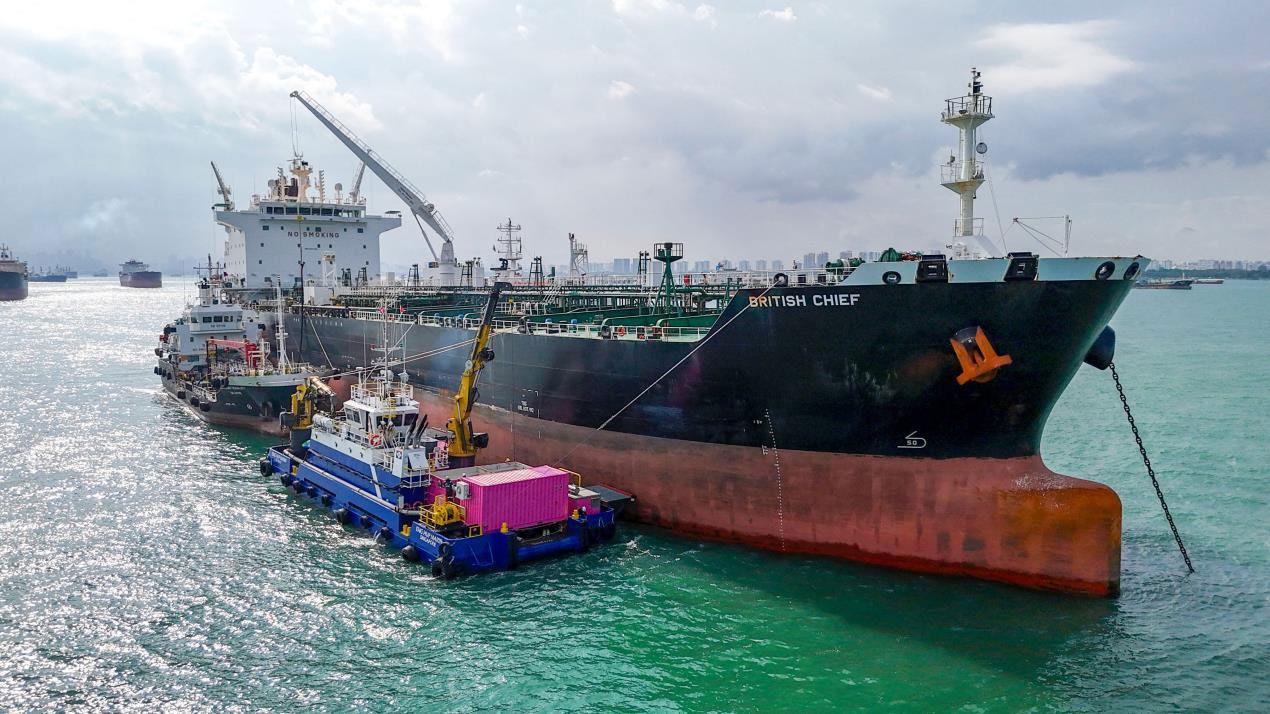
four hours. This compares with up to 40 hours for traditional cleaning methods using divers with the ship at berth. The ability to clean hulls while bunkering at anchor is a major timesaver, contributing to safer and more efficient turnarounds.
The patented Pink Panther technology also offers strong benefits for the local marine environment and climate generally. The robot collects all fouling debris from hulls, minimising the spread of invasive species and stopping hull-coating toxins from polluting the seabed.
ECOsubsea estimates that effective, industry-wise hull cleaning has the potential to reduce emissions from shipping by 100 million tons of CO2 globally every year. The company aims to cut two million tons in 2025 alone.
Going forward, its long-term ambition is to capture 50% of the hull cleaning market through a global network of 250 cleaning robots in locations including Singapore, Panama, Suez and Gibraltar where ships concentrate.
Germany-based protective coatings innovator Steelpaint is encouraging shipyards and port authorities with steel assets to prioritise surface preparation, advising that skimping on this critical step in the application process is leading to premature coating failures, costly repairs, and increased safety risks.
The advisory follows a recent request to apply its single-component, moisture-cure Stelcatec to a steel structure that had not been properly prepared, with high levels of rust and contamination still present.
“We made it clear that without proper surface preparation tools to remove rust and corrosion, and subsequent freshwater washing to disperse salts and other contaminants, there was no point in applying the paint,” says Dmitry Gromilin, Steelpaint’s Chief Technical Supervisor.
“We have seen too many cases where companies have invested in advanced coating systems, only to
have them fail prematurely due to inadequate surface preparation. Not only does this lead to accelerated corrosion, and the need for costly reapplication, but any investment in advanced corrosion protection is wasted.”
He continues: “One of the most common misconceptions is that a quick wipe-down or solvent wash is sufficient. In reality, contaminants such as rust, grease, salt, and moisture create an invisible barrier between the steel and the coating.
“Without thorough surface preparation, adhesion is compromised, and the coating will inevitably fail. When this happens, it is not just the paint that deteriorates – steel structures will suffer rapid corrosion, leading to structural weaknesses, safety risks, and costs.”
Steelpaint also reports incidents where asset owners have used low pressure water jet washing to prepare areas prior to coating applications.
“We have seen operators using 300-400bar low-pressure water jets to prepare larger, heavily corroded areas, such as tank tops. At the very minimum, 2,000bar ultra highpressure water blasting should be carried out. Anything less means any corrosion protection will be ineffective. Surfaces must be properly prepared,” Gromilin says.
He adds that preparation challenges are compounded by environmental conditions, such as saltwater environments, high humidity, fluctuating temperatures, and condensation, which can impact application.
This is especially the case when traditional two-component systems are used, which require precise application windows. In tropical climates, for example, dew point restrictions often mean that conventional coatings can only be applied during specific hours of the day.
Steelpaint Director Frank Mueller says by highlighting the importance of this critical preparatory step, “steel asset owners can get the most out of their corrosion protection spend”.
He says: “The best coating system in the world will not perform if
applied to contaminated, rusty or inadequately prepared steel surfaces. Cutting corners in preparation only leads to greater costs down the line. By adopting best practice in steel preparation and selecting coatings that offer greater flexibility in realworld conditions, steel assets can remain protected for longer, reducing operational and maintenance costs.”
While acknowledging that the perfect surface preparation is seldom achieved, Steelpaint’s Stelcatec system has been developed to be applied to the minimum SSPC SP2 standard using non-powered hand tools such as wire brushes, scrapers and sandpaper.
The one-component Stelcatec coating can also tolerate light flash rust and can be applied on damp surfaces, significantly reducing downtime for critical infrastructure such as cargo tanks, ship-to-shore cranes, and other steel assets operating where extended maintenance shutdowns are not an option. It also provides longer corrosion protection at a lower film thickness and can be applied at 98% relative humidity at temperatures ranging -5°C to 50°C.
Meanwhile, Emden’s Great Sea Lock (Große Seeschleuse) is to be protected from corrosion with a Steelpaint coating system following a substantial contract award by the Lower Saxony Port Authority (Niedersachsen Ports) as part of major refurbish and renewal project.
Opened in 1913 to provide a maritime gateway from the North Sea to the River Ems, the Great Sea Lock – one of the world’s largest – is being renovated and adapted to provide greater flood protection. As the lock will remain operational throughout the upgrade, the €100m project will take about ten years to complete.
The milestone project, implemented to facilitate the smooth operation of the sea lock for the next 35 years, will involve constructing new reinforcements to optimise flood defence, the construction of new transformer stations, a reserve gate and a cable pull system.
“We are privileged to have been selected by Niedersachsen Ports to play a key role in this landmark infrastructure project,” says Frank Muller, Steelpaint’s Sales Director. “Our proven track record in delivering high-quality, durable protective coating solutions for maritime applications made us the ideal partner for this critical undertaking.”
Steelpaint will supply a comprehensive coating system for approximately 50,000m2 surface area across the Emden lock’s gates and associated structures. This includes a 75µm zinc-rich primer coat, forming a sacrificial barrier to shield the underlying steel from the harsh saltwater conditions.
On top of this, two to three coats of Steelpaint’s proprietary Stelpant-PUCombination 300 polyurethane coating will be applied with a 150 µm to 225µm dry film thickness. Some areas will also be coated with an additional UV-resistant semi-gloss topcoat of 80µm.
Steelpaint has a successful track record with several ports operated by NPorts, explains Fynn Baumfalk, Steelpaint’s Key Account Manager Protective Coatings. “Our coating systems have been trusted to protect hydraulic engineering buildings for decades, delivering exceptional results in a hugely challenging marine environment. Stelpant´s specialised formulation means this coating can withstand constant exposure to saltwater, UV radiation, and other weathering factors, providing longterm protection to Emden’s new lock gates.”
Wilfried Schleusener, responsible for operating systems at Niedersachsen Ports Emden, says: “The Emden lock project is one of the largest hydraulic engineering initiatives currently underway in Germany. By elevating the lock gates and reinforcing the surrounding infrastructure, we can future-proof this vital infrastructure against the effects of climate change and rising sea levels. We are confident that Steelpaint’s innovative coatings will help keep the Emden lock operational for generations to come.”
The lock gates themselves are massive structures: 42m wide, 20m high, with a 7m draught. Raising each 860t gate by 2m is a significant engineering challenge, but one that the Port Authority is committed to undertaking to enhance the historic lock’s resilience and longevity.
The renovation work will be carried out in phases to minimise disruption to port and shipping operations. Steelpaint’s coatings will be applied as the new gate structures are fabricated, with the first two lots already in the tender process.
“This contract is a significant milestone for Steelpaint, solidifying our position as a leading supplier of
protective coatings for major port infrastructure,” says Baumfalk. “Our expertise in meeting the unique challenges of the marine environment was a key factors in securing this prestigious project.”
Beyond the Emden lock, Steelpaint is also in discussions with the Port Authority to provide protective coatings to the Cuxhaven container terminal, which is undergoing expansion to meet the requirements of the offshore wind energy industry. The Kitzingenbased coatings specialist is also involved in the refurbishment of the Hooksiel sluice gate in Wilhelmshaven.
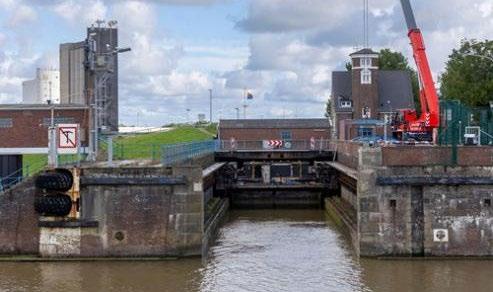
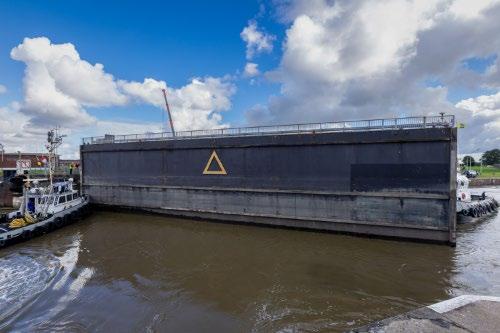
As the demands on environmental compliance, transparency and efficiency are escalating around the globe, the role of research and development (R&D) is a key for driving the industry forward. Its importance as being the first step in solving complex challenges cannot be over emphasised, but it is only of value if the industry is able to make use of the knowledge obtained.
As an industry, shipping is obliged to adapt to rapidly changing regulatory and environmental, social and governance demands while remaining competitive and efficient. To be able to deliver both ‘must haves’ and ‘nice to haves’ to the industry, product and solution providers are increasingly investing in R&D, with significant efforts targeted at clean innovation that may be in production processes or in developing products that improve efficiency and sustainability.
Jotun is recognised as one of the leading players in the marine coating industry and has for almost a century invested significant resources in its in-house R&D. Its research activities actually started with the marine industry delivering coatings for whaling ships, and today the aim of helping the shipping industry keep clean hulls is at the core of Jotun’s Clean shipping commitment.
Although not all coatings companies have close to 100 years of R&D, research still serves as the backbone for the whole industry with transparency and joint industry projects helping lift the knowledge and science behind what eventually end up as products and solutions for the shipping industry.
“In all of its R&D, Jotun has three primary elements that it works across. These are technology and platform development, direct innovation where there is a defined product to innovate
and create, and finally existing products that are in the market and their management and maintenance to keep them relevant and performing,” says Christer Lorentz Øpstad, Global R&D Director at Jotun.
“As well as addressing known challenges, in essence R&D should be proactive and not reactive and look forwards to possible new challenges that may arise in the future.”
Øpstad points out most processes for developing new products and solutions at Jotun are driven from a customercentric perspective. When a specific challenge arises in one of its markets, it looks for solutions. That could be an
improvement to an existing product or may involve completely new products and approaches.
“I believe we are at the forefront of driving the development of innovative solutions that aim to contribute to safe and sustainable operations in the industries Jotun serves. This does not only include the shipping industry, but also for several industries such as the energy sector both offshore and onshore, as well as infrastructure, just to mention a few,” Øpstad says.
“Because of the impact of new regulation and the drive to develop innovative solutions, Jotun has expanded its scientific footprint,” he continues. “For example, the expertise in our company centred on antifoulings is no longer solely in chemistry, but
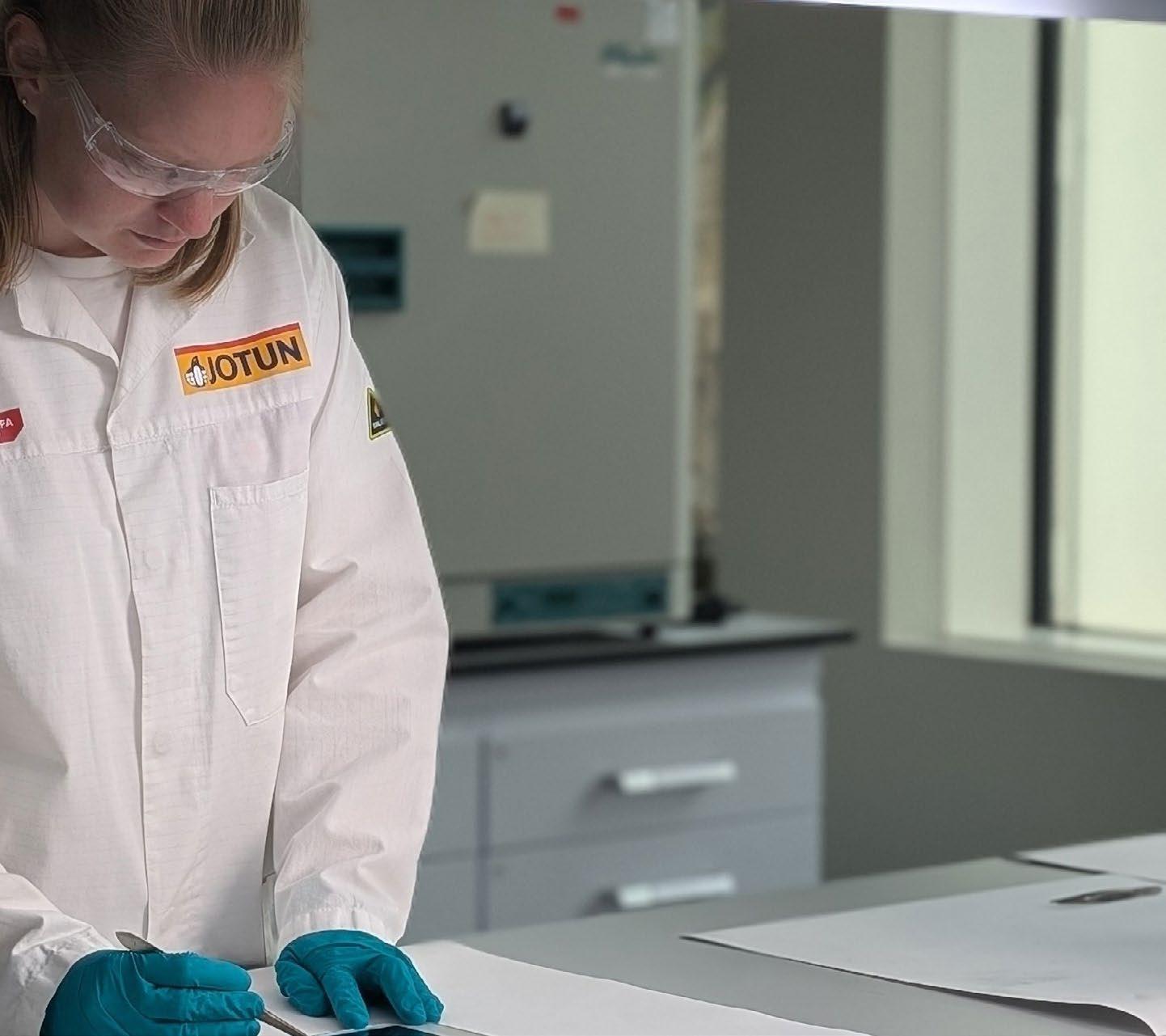
represents a wide range of disciplines, everything from data science and mechanics to polymer science and marine biology - a vast difference compared with how it used to be.”
Øpstad explains that new ideas will be developed and refined through a structured innovation process that involves testing the new concept before an innovation board to determine its potential. This approach has resulted in several technologies, products and solutions that may not previously have been thought possible.
In the past, the driving factor in this market was the need for owners to reduce biofouling to preserve fuel to save money and to meet time charter commitments around speed and consumption. In recent times that has changed with international regulations developed at the International Maritime Organization putting a mandatory requirement upon ships to operate within strict efficiency limits to reduce emissions from the fuel used on board. In addition, emission charging such as
the EU Emissions Trading System has resulted in a new type of expense that shipowners need to meet.
Furthermore, a new form of regulation is slowly coming into being, with ships obliged to protect biodiversity by reducing or eliminating the transfer of invasive species.
Øpstad firmly believes R&D is not just a matter of working with customers to overcome challenges and points out there are many benefits to also working with other stakeholders, including academic researchers and even different players in the industry.
As an example, Jotun experts continue to present papers and shared unique insight on developments in antifoulings and related issues at forums such as the International Congress on Marine Corrosion and Fouling (ICMCF), Marintec innovation, PortPIC and HullPIC.
Commenting on the importance of research work and Jotun’s participation at these arenas, the Congress Chair of ICMCF, Professor
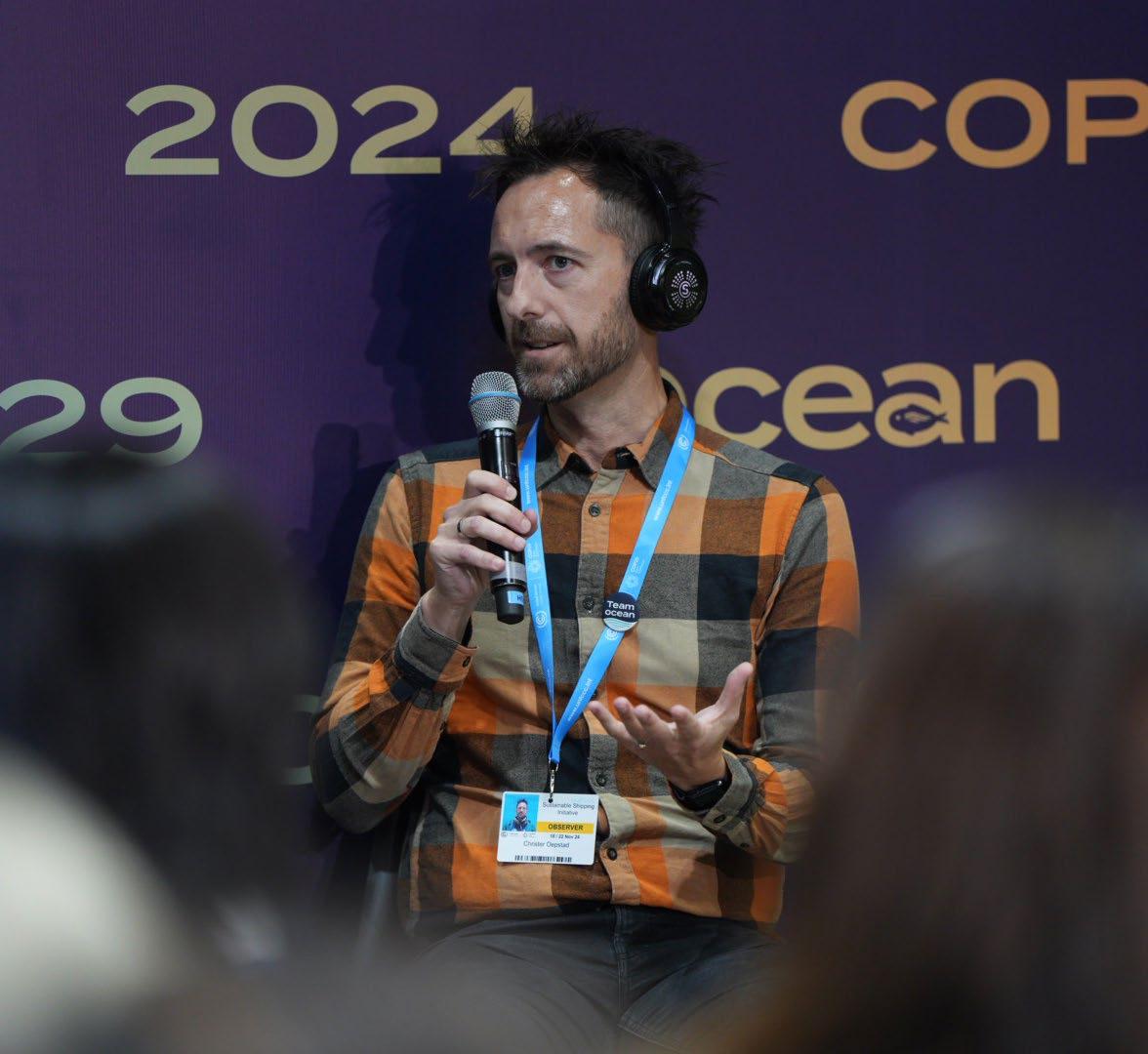
Guangzhao Zhang from South China University of Technology says: “The shipping industry is highly dependent on new and relevant research that can contribute to make it more sustainable and efficient.
“We find that conferences such as ICMCF are important for players who contribute in the field of marine corrosion and fouling, with research and concrete solutions. We endeavour to create an arena that can contribute to transparency, so that knowledge and research do not remain in individual silos.
“Both companies and academia play an important role in research and progress in this industry, and our opinion is that R&D is getting an increasingly greater focus in various companies. Jotun is one example of a company that puts R&D first, with the goal of cleaner operations at sea which, in turn, will benefit the whole industry in the long run,” he adds.
The focus on putting R&D as a priority and making sure the insight and knowledge is benefitting the industry is something Øpstad and his team strive to deliver – as Jotun has always done for almost 100 years.
“Adding knowledge and sharing experience on the main issues that we are trying to improve transcend what we as a company, and the whole industry, can and should achieve,” says Øpstad
“The work we do in our labs, in combination with conferences and meeting places will drive the industry forward and also pulls down the walls between stakeholders. This way we can together elevate our overall knowledge base, and faster solve the issues at hand.”
To read more about Jotun’s Clean shipping commitment, take a look at: tinyurl.com/JotunCommitment
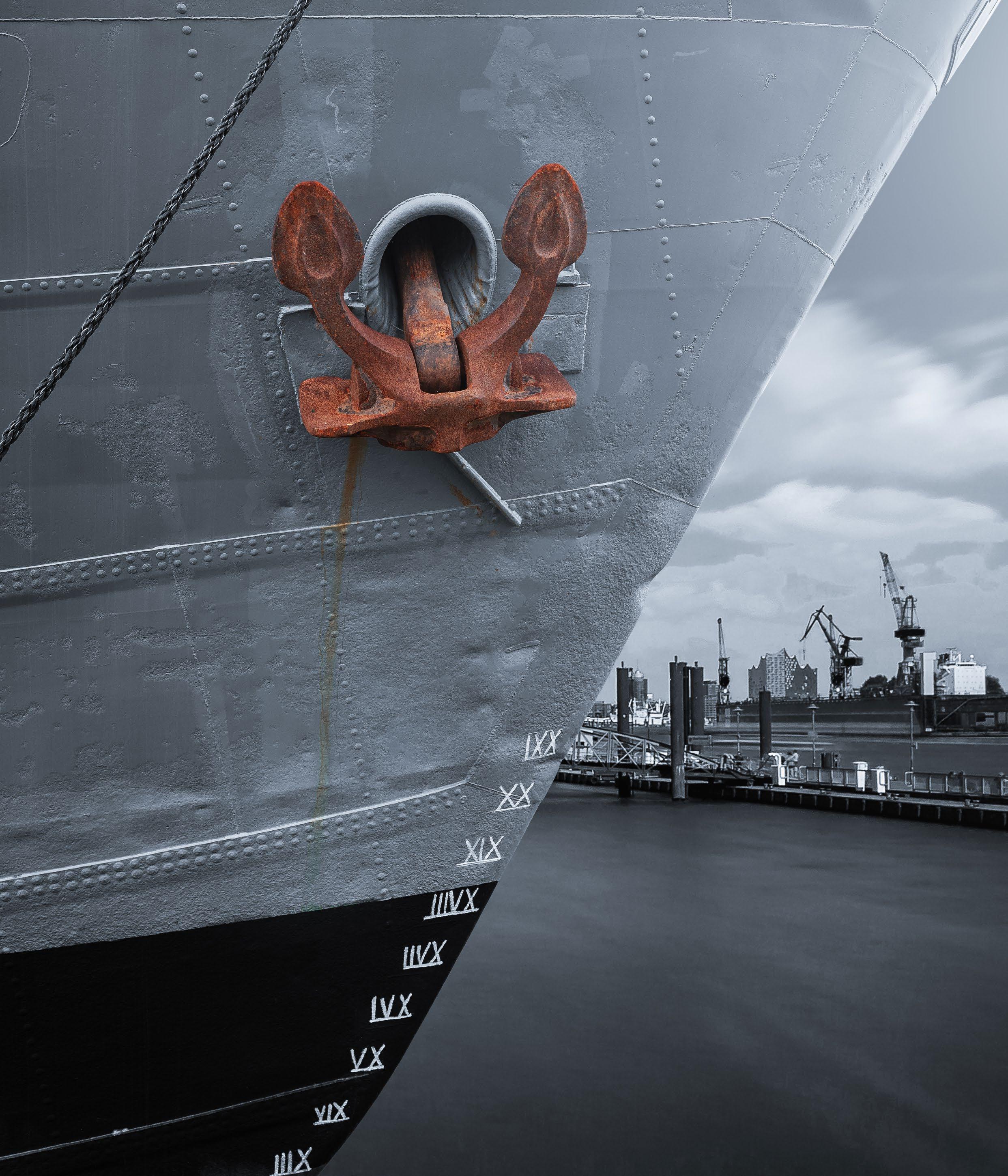
The US Navy is carrying out trials on BIO-UV Group’s state-of-the-art ballast water treatment system
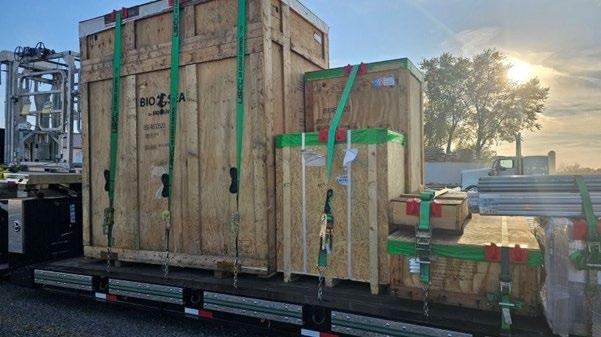
French water treatment specialist BIO-UV Group has shipped a second Bio-Sea ballast water treatment unit to the US for extensive trials to assess the technology’s capability for use onboard US Navy vessels.
An M series Bio-Sea system will undergo the same rigorous testing as the compact Bio-Sea B series unit supplied to BIO-UV Group’s US-based partner, The Columbia Group (TCG). TCG was awarded a contract in 2021 to develop a ruggedised version of the Bio-Sea US Coast Guard-approved UV-based ballast water treatment system (BWTS).
The Bio-Sea M Series, especially designed for the US Navy, completed Factory Acceptance Tests last April at BIO-UV Group’s production facility in Lunel, France.
Meanwhile, the Bio-Sea B unit, installed for evaluation in February 2024, was tested pier-side on a logistics vessel, completing more than 500 hours of ballasting/ deballasting operations.
The B unit is now undergoing landbased electromagnetic interference testing to verify compatibility with US military standards. The BWTS will then
be subject to extensive vibration and shock testing.
“Should all tests pass the US Navy’s compatibility criteria, this will be the first step toward our system achieving Navy certifiable status”
“We aim to have completed operational and environmental testing for both units by 2026,” says Simon
Marshall, BIO-UV Group’s Deputy Managing Director. “Should all tests pass the US Navy’s compatibility criteria, this will be the first step toward our system achieving Navy certifiable status and the objective of manufacturing units in North America.”
The overall programme has been developed to meet a US government requirement to provide US Navy vessels with a suitable ballast water treatment option. BIO-UV Group and TCG have partnered to meet this requirement.
This is a major development for the French water treatment specialist. It not only marks the first step toward verifying compliance with military standards, opening the door to a new ballast water treatment market for the group, it is also indicative of the success of the partnership with TCG in developing custommade, military-grade ballast water treatment systems.
The tailor-made compact BIO-SEA B unit is a robust, filtration and UV-based BWTS capable of dealing with flow rates up to 300m3/h. The larger M10 system has been designed to treat flow rates of up to 1,000m3/h.

The adoption of advanced motor technologies is playing a critical role in achieving energy and operational efficiency in the maritime industry, as Gary Rogers, CEO of Magnomatics, explains

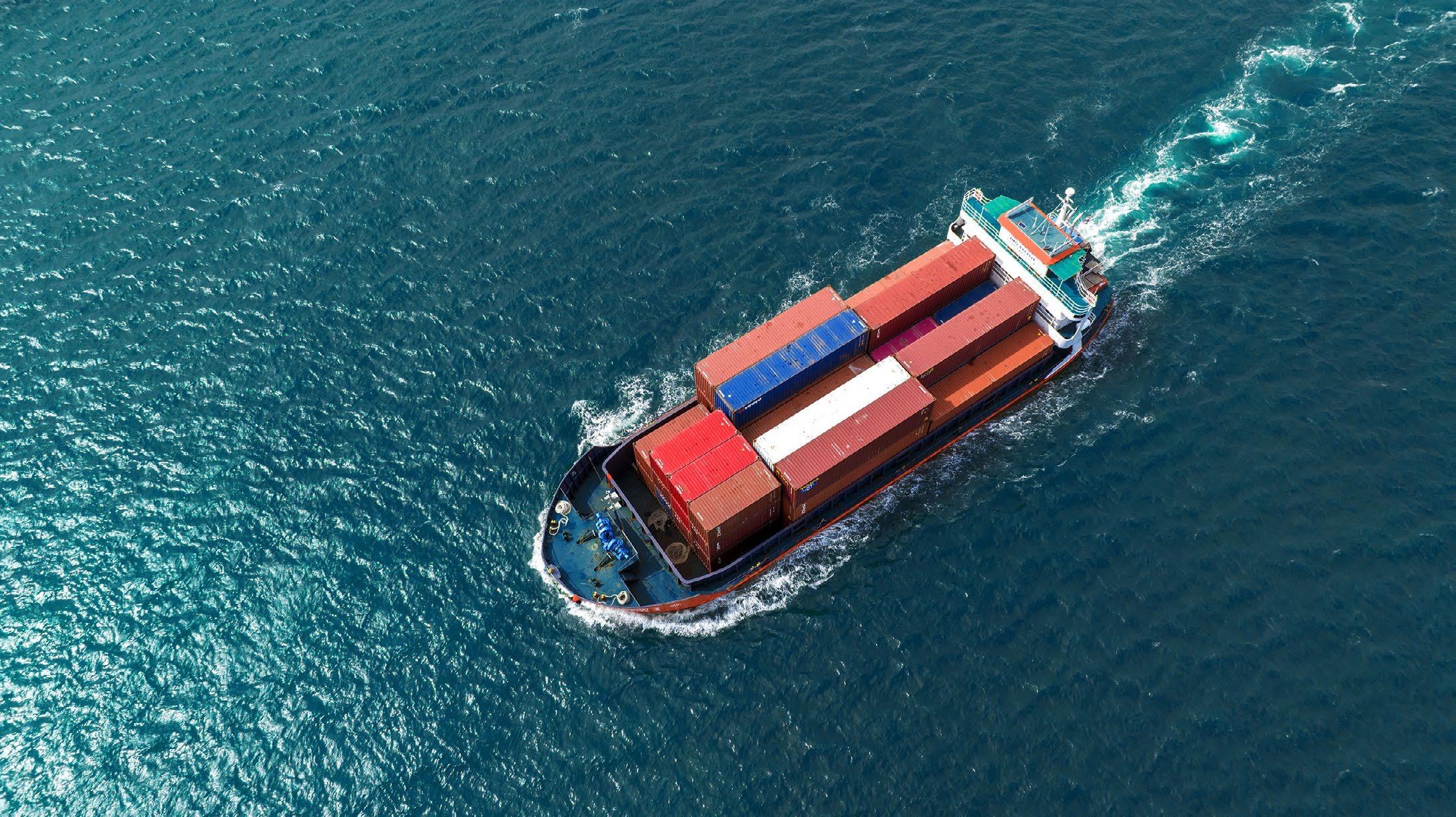
Marine propulsion systems of the future must meet a range of challenging requirements. Beyond delivering the power and control needed for vessel speed and manoeuvrability, these systems should be lightweight, robust, safe, and require minimal maintenance.
Additionally, as environmental concerns around marine transport increase – shipping accounts for 3% of global carbon emissions and if shipping were a country, it would be the world’s sixth biggest greenhouse gas emitter – propulsion technologies must become greener, cleaner and more energy efficient.
This is further solidified by the International Maritime Organisation’s (IMO) 2023 Strategy on the Reduction of Green House Gas (GHG) Emissions from Ships, which outlines aims to reduce carbon emissions by 40% by 2030 and achieve net-zero emissions by 2050. This applies both to existing and new vessels.
Innovative propulsion systems, like those using magnetic gear technology, not only enhance fuel efficiency and operational flexibility, but also contribute significantly to reducing
emissions. These systems have already proven their reliability and durability under extremely harsh operating conditions in many industrial applications.
This includes marine and naval applications, with magnetic gear technology proving to be a reliable, efficient, and cost-effective solution for a range of marine applications, from commercial shipping and naval vessels to sub-sea operations.
Throughout its history, the marine industry has wavered in its preference between electric and traditional propulsion systems. Although the former offered greater efficiency and several advantages, its adoption was limited by high costs, complexity, and size.
While the introduction of magnetic gears – first patented in 1968 –introduced promising possibilities, it was only in the early 21st century, with advancements in materials and analysis techniques, that a practical solution emerged in the form of magnetically geared motor systems. These systems offer several
benefits over conventional permanent magnet (PM) motor and generator technologies, one of which is the exceptionally high efficiency that these systems can deliver, enabling marine vessels to reduce energy consumption and operational costs.
Additionally, magnetic gear technology offers high torque capabilities and robustness, essential qualities for marine environments where durability and reliability are vital. Unlike traditional PM motors, magnetically geared systems can achieve high torque output at lower speeds without the need for complex mechanical gearboxes and the associated single point failures.
This not only enhances efficiency but also reduces maintenance requirements – a critical consideration for marine vessels that operate in remote or challenging environments where servicing is difficult and costly.
Magnetically geared motor systems have already been deployed in a variety of marine applications, showcasing their versatility and performance. In sub-sea vessels, where compact and efficient systems are particularly beneficial, these motors have
demonstrated their capacity to provide precise speed control and high transient capability. This is particularly advantageous for applications that require maintaining a stable position, such as remotely operated vehicles (ROVs) used in deep-sea exploration or underwater construction.
The technology offers a significant advantage in terms of system design flexibility – the modular and scalable nature of magnetic gear systems allows for solutions that can be adapted to different vessel sizes, environments and propulsion requirements.
The ability to adjust gear ratios – inner rotor torque can be geared between 5:1 and 10:1 – through a magnetic gear coupling not only enhances performance but also allows for the development of compact and lightweight systems ideal for sub-sea applications.
A typical propulsion system might consist of a high-speed electrical machine coupled to a magnetic gear within an oil-filled, pressurecompensated chamber. The design enables torque to be transmitted through a non-permeable barrier while reducing motor size and improving the hydrodynamic efficiency of the propulsor.
Of course, having no mechanical gears means wear is never a concern,
the motor is protected from seawater by a hermetic seal, and anti-jamming is provided via a passive reset torquefuse that protects the drivetrain from the loads associated with hitting solid objects or ropes.
Additionally, they can be configured with fault-tolerant winding designs, with electrical, mechanical, thermal and magnetic isolation between phases and banks, they enable the system to continue operating following a fault, while preventing fire risks.
One of the primary drivers behind the adoption of magnetically geared motor systems in the marine sector is their significant contribution to sustainability. The high efficiency and low maintenance needs of these systems help operators minimise fuel consumption and reduce the carbon footprint of their vessels.
Additionally, this reliability allows operators to benefit from reduced down time.
By eliminating the need for traditional shaft seals – often a weak point in submerged systems – the technology also mitigates the risk of oil leaks and environmental contamination.
In conventional systems, failure of a shaft seal can lead to the ingress of seawater and the escape of oil, potentially causing significant and lasting environmental harm. Magnetic
gear systems eliminate this risk by enabling through-wall torque transmission without the need for physical contact between components.
While the benefits are evident, the development and integration of advanced magnetically geared motor systems require specialised expertise. For this reason, it is important to select an electrification partner with extensive experience in the field.
A supplier that can offer a whole package of consultancy services, including technology selection, implementation, prototype manufacture, testing and serial production. Such a partner will have the expertise to-hand to help marine operators and vessel designers make informed decisions about technology selection and implementation, ensuring the best balance of performance, efficiency, and sustainability.
As the marine industry continues to prioritise efficiency and environmental stewardship, magnetically geared motor systems represent a compelling alternative to traditional propulsion technologies – they not only provide significant improvements in continuous torque density while delivering consistently superior energy efficiency, but are also a lowcost, low-maintenance solution with built-in safety, fault tolerance and sustainability features.
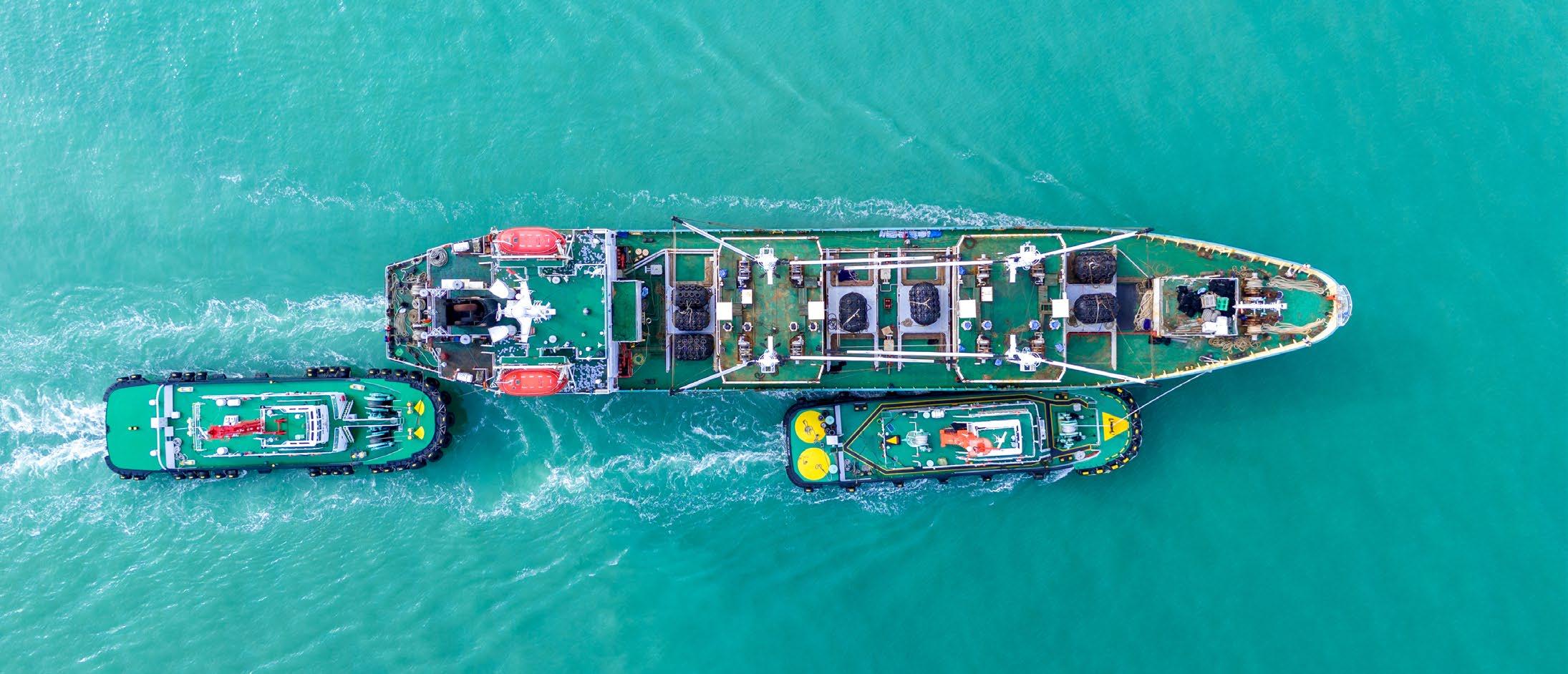
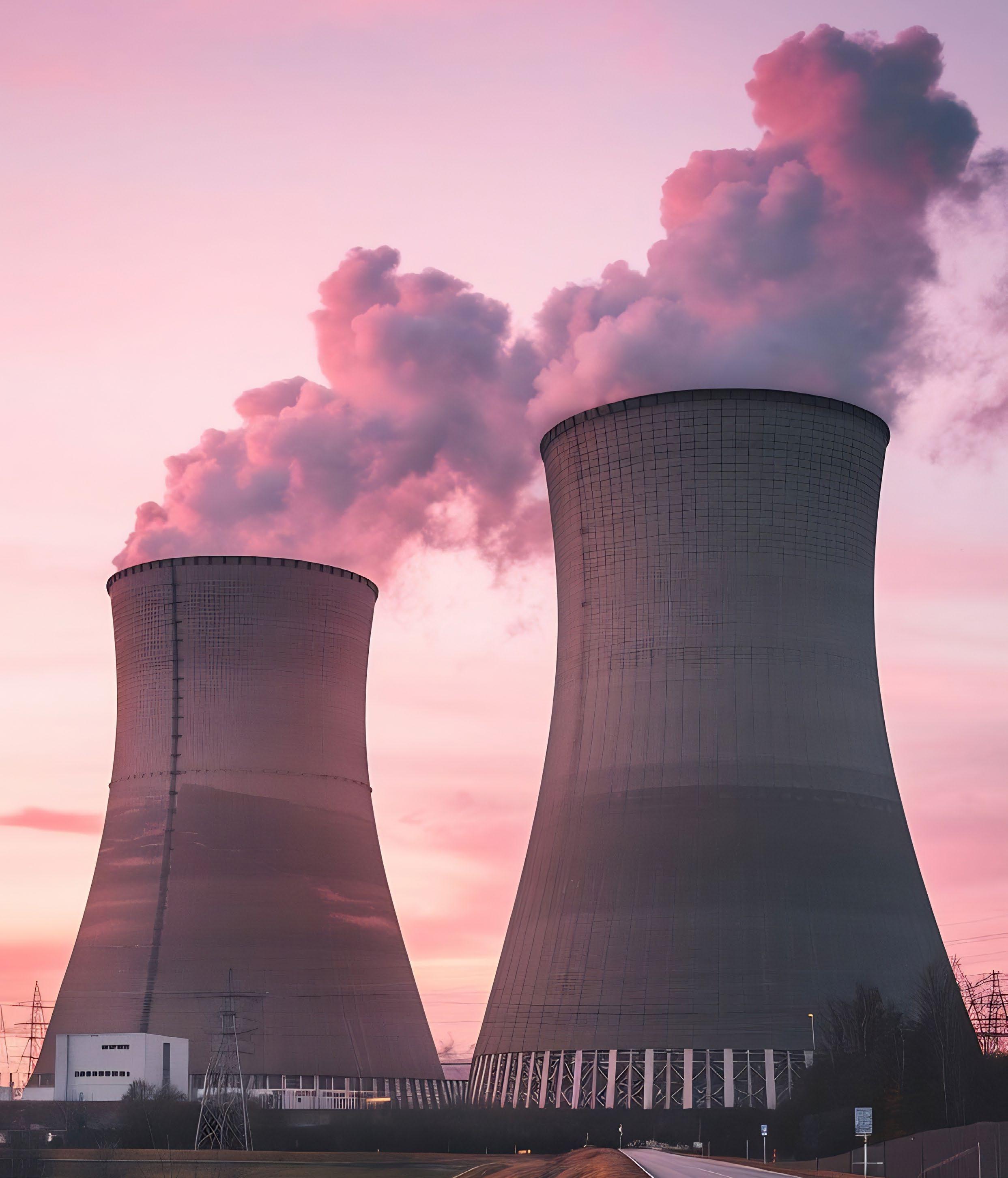
If nuclear power was a nonstarter politically at some points in the past, it is now well established as an alternative fuel in the shipping sector
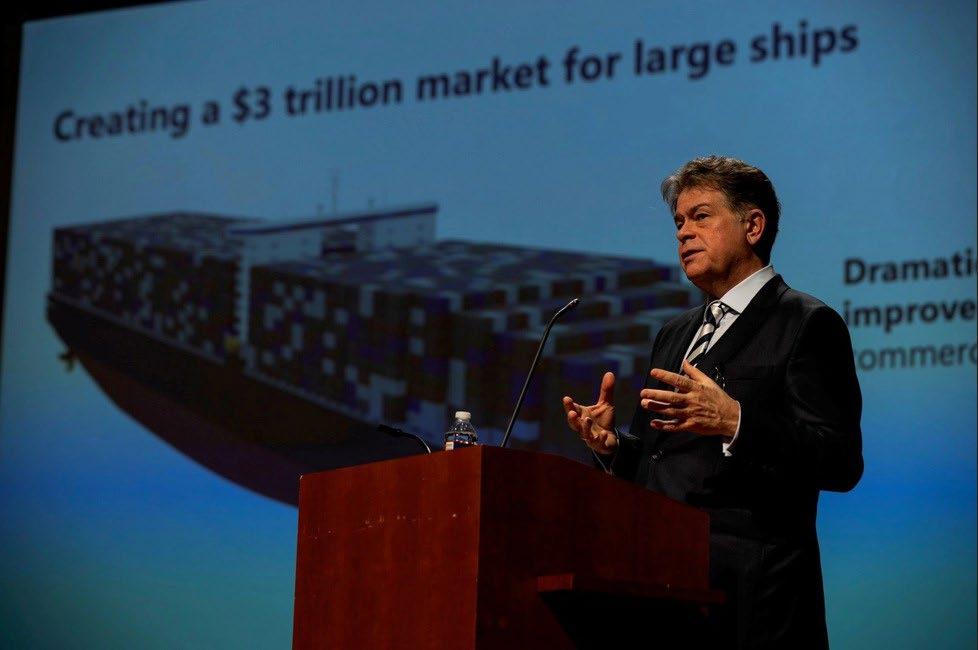
Core Power, a developer of maritime sector nuclear technologies, has announced that it will develop a US-anchored maritime civil nuclear programme that will bring floating nuclear power to market by the mid2030s.
The programme, called Liberty, will lay the foundation for the use of nuclear power in the civil maritime sector. It will encompass modular construction of advanced fission technology and create the regulatory and supply chain frameworks necessary to enable this technology to be rolled out worldwide.
Core Power CEO Mikal Bøe laid out the company’s transformative vision in his keynote presentation at Core Power’s New Nuclear for Maritime summit in Houston, Texas, in February. More than 230 delegates were in attendance to hear a wide variety of speakers explore the many possible uses of nuclear power in the maritime sector.
“The Liberty programme will unlock a floating power market worth $2.6tn, and shipyard construction of nuclear will deliver on time and on budget,” Bøe said. “Given that 65% of
economic activity takes place on the coast, this will allow nuclear to reach new markets.”
The first part of the Liberty program will see the mass production of floating nuclear power plants (FNPPs). The expertise gained in rolling out FNPPs on a large scale will pave the way for the second part of the programme, which involves developing nuclear propulsion for civil ships.
FNPPs will be produced in shipyards on a modular production line, making use of well-established shipbuilding processes and leveraging an already-skilled workforce. They will be manufactured as power barges that can be moored at ports and coastal locations, as well as largercapacity generation units anchored further offshore.
A fleet of FNPPs can be mass produced and towed to customer locations without complex site preparations, while a central yard carries out commissioning, maintenance, refueling, and waste management.
This mass production is possible because the Liberty programme will employ advanced nuclear technologies,
such as molten salt reactors. Unlike conventional nuclear technologies, these next-generation reactors are inherently and passively safe and operate at near atmospheric pressures –negating the need for a large emergency exclusion zone and vastly improving the insurability of FNPPs and nuclear-powered commercial ships.
Advanced nuclear technologies are also vastly more efficient than conventional nuclear propulsion –enabling a ship to run on a single fuel load for its entire design life while simultaneously minimising the amount of waste produced. Nuclear-propelled ships will therefore offer huge improvements in speed, efficiency and cargo-carrying capacity. Core Power is working in partnership with various developers of advanced nuclear technologies to develop the reactors and ensure they are optimised for maritime use.
The Liberty programme aims to open the orderbook for FNPPs in 2028 and reaching full commercialisation by the middle of the next decade. Core Power will choose a location in the US to build the initial manufacturing yard
for FNPPs. In laying out the first phase of Core Power’s roadmap to 2030, Bøe said that in addition to design the company would focus on creating the necessary framework for licensing, insurance and export control.
The second phase will focus on developing the supply chain and workforce. The third phase will see the development of business operations models and creating the manufacturing base. At the same time, Core Power will aid the development of international safety and security standards by working together with the International Maritime Organization and International Atomic Energy Authority to create a civil liability convention for nuclear-powered ships.
The programme will also encompass creating the robust regulatory framework necessary to operate FNPPs and (later) civil vessels with nuclear propulsion. It will also include the supply chains (such as fuel and trained personnel) that will enable advanced nuclear reactors to function.
The programme takes its name from the Liberty ships of the Second World War, which were mass produced in the US quickly and at scale and enabled the Allies to win the Battle of the Atlantic. It also emphasises the US-anchored nature of the programme, which will leverage the country’s nuclear regulatory frameworks to make worldwide operation of FNPPs and nuclear-powered ships a reality.
“Core Power’s Liberty programme will deliver resilient energy security for heavy industry and ocean transport,” Bøe said. “In doing so, it will revolutionise the maritime sector and transform global trade.”
Since going into service in 2015, the MF Ampere has now sailed an astonishing distance equivalent to 17 times around the equator on batteries alone, solidifying its place as a groundbreaking achievement in sustainable maritime transport.
A decade on and the Ampere continues to showcase the transformative potential of electric technology. The vessel
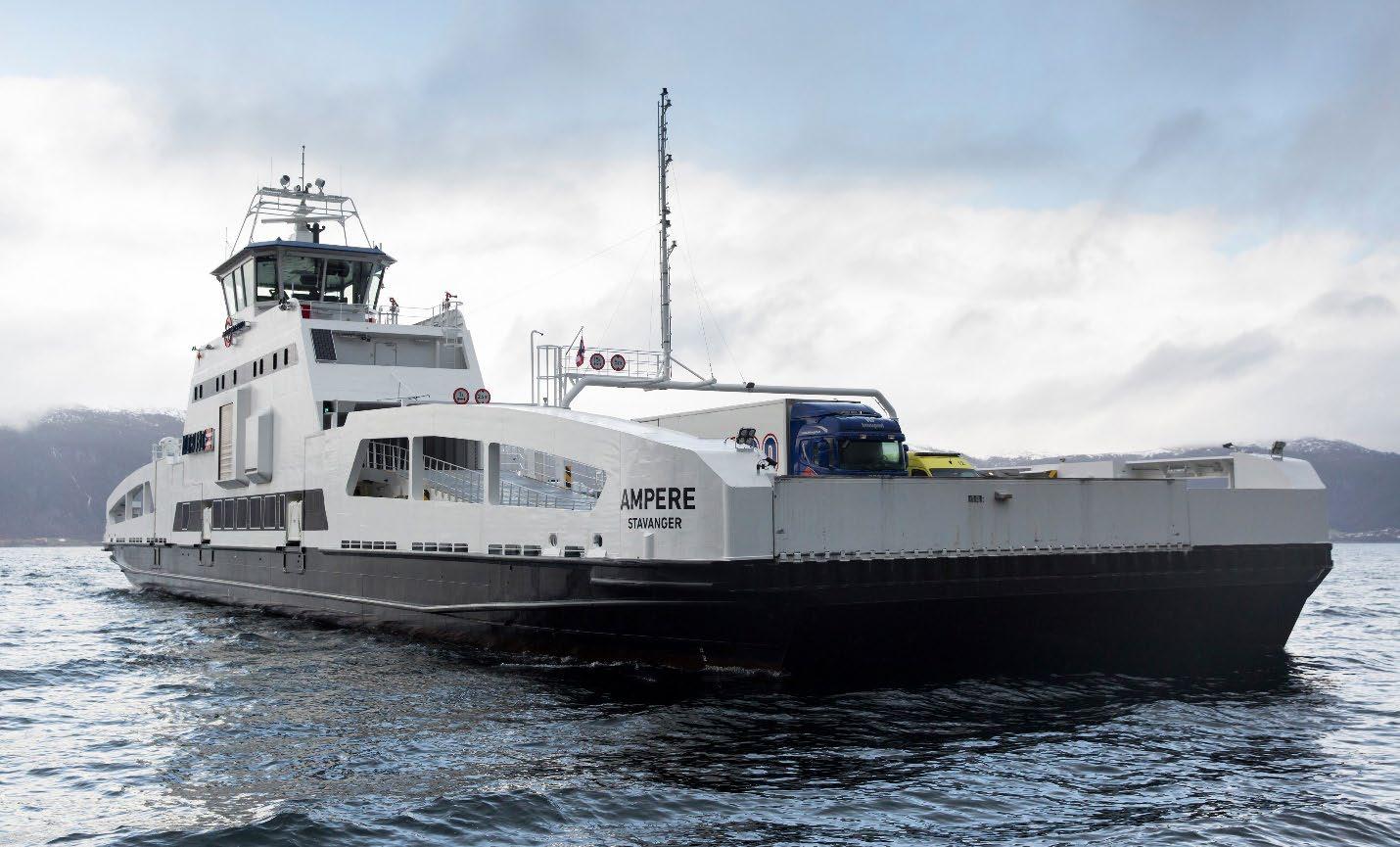
has successfully demonstrated a model that has now been adopted in hundreds of ferries across the globe.
Norway has earned an undisputed reputation as the innovative leader in green shipping due to electrification of its ferry fleet from north to south. It all started with the Ampere and a bold decision by the Norwegian Public Roads Administration to require sustainable technology onboard the newbuild destined to transport passengers and vehicles across the Sognefjord on Norway’s west coast. Ferry operator Norled began exploring electric alternatives and initiated a collaboration with Fjellstrand Shipyard to find the best solution.
Norled went on to win the ferry tender based on the cutting-edge design of the Ampere.
“When Fjellstrand Shipyard first started looking at electric ferries back in 2010, we knew that a fully electric ferry would be a challenge on this route due to the distance and power demands,” says Edmund Tolo, R&D and Sales Manager at Fjellstrand.
“However, when the tender came out, and Norled wanted to make this ferry all-electric, we revisited the idea and found solutions that we thought could work. By leveraging existing, proven vessel designs from previous projects and using our expertise in lightweight and optimised energy designs, we
managed to create a vessel that is not only efficient, but also fully aligned with the future of sustainable transport.”
He adds: “We faced a series of challenges, as nobody had done this previously. We had no idea about the actual lifetime of the batteries, and we did not have the needed rules and regulations. However, by collaborating closely with Siemens as integrator, battery supplier Corvus Energy, the shipowner Norled, as well as the Norwegian Maritime Authorities and DNV, we managed to make this a success.”
For Norled, the MF Ampere was the start of environmentally friendly operations. “Our experience with this vessel shows that it pays off to invest in electric ferry operations, both for the environment and for society by creating new jobs in the maritime industry and because electric operation is cheaper than diesel in the long term,” says Heidi Wolden, CEO of Norled.
“Ampere earlier accounted for 4% of our fleet with zero emissions, but we now have close to 50% of our fleet with low to zero emissions. Going forward, we will work on getting more vessels to low and zero emissions.”
Launched on the Lavik-Oppedal route, MF Ampere’s electric propulsion system has delivered results, drastically reducing the environmental impact of ferry travel.
CO2 emissions were reduced by 5,700 tons annually, marking a significant step towards decarbonising Norway’s transport sector.
Compared with a traditional fossilfuelled ferry, the operational cost per crossing has been reduced by an impressive 85% to 90%, generating total savings of nearly US$15m. Using electric power, in real terms the cost per crossing is comparable to the cost of a waffle and a cup of coffee.
“Since 2015, the Ampere has crossed the Sognefjord more than 124,000 times and proven that electrical vessels are both economical and sustainable,” says Fredrik Witte, CEO of Corvus Energy.
“The demonstrated cost and emissions savings paved the way for the electrification of another 80-90 ferries in Norway. It has also accelerated the technology development enabling lightweight and more energy-dense systems.
“To compare, the MF Ampere has 1 MWh of our first-generation batteries installed, but our largest system to date, which will power the Incat ferry in South America, will have almost 42 MWh of our lightweight Dolphin batteries onboard. But without the MF Ampere as our pilot project, we wouldn’t be where we are today in marine electrification.”
The MF Ampere serves as a beacon of what can be achieved when innovation, sustainability and cost-effectiveness come together. The ferry’s success has not only demonstrated the practicality of electric ferries in Norway, but has also accelerated the adoption of similar technology in coastal cities and island communities worldwide. The ripple effect of Ampere’s groundbreaking journey continues to inspire sustainability-focused initiatives in the maritime sector and beyond.
With the recent installation of additional batteries to prolong the vessel’s lifetime, the MF Ampere will continue to sail until the next groundbreaking innovation is in place: Four autonomous ferries are set to operate the route from 2026.
Straits Bio-LNG, a world-leading, privately owned supplier of bio-liqefied natural gas (LNG), led by SK Tan as CEO, has joined the SEA-LNG coalition.
LNG bunkering volumes have grown significantly in key bunkering hubs as more LNG-fuelled vessels have entered into operation. The Maritime and Port Authority of Singapore (MPA) saw a dramatic four-fold increase in 2024 to almost 340,000 tonnes. Straits Bio-LNG recognises the demand is growing and has made it clear that 250,000 tonnes of bio-LNG will be available yearly in response.
Yiyong He, Director at Straits BioLNG, says: “We’re firmly convinced in the viability of the LNG pathway to decarbonise the shipping industry. With its very low carbon intensity and improving commerciality, liquified biomethane will be a critical piece of the puzzle for decarbonising the sector. By joining SEA-LNG, we’re proud to be part of a collection of first movers making real strides to make the LNG pathway a tangible reality today.”
Straits Bio-LNG aims to reach its bio-LNG supply goal by using pioneering methods. It is currently in the advanced stage of testing breaking down ‘empty fruit bunch’ (EFB) through an established biological process with high enzyme concentration in its R&D facility in Malaysia.
Both palm oil mill effluent (POME) and EFB are sustainable biomass resources listed in the List of Materials Eligible for ISCC EU Certification and are therefore compliant with the European Union’s Renewable Energy Directive (RED).
Peter Keller, Chairman of SEA-LNG, says: “The Port of Singapore (MPA) is the largest global bunkering hub. As seen in our View from the Bridge report, 2024 saw record growth in LNG and liquified biomethane bunkering, but we need more fuel to meet upcoming demand.
“The use of liquefied biomethane as a marine fuel can reduce greenhouse gas emissions by up to 80% compared to marine diesel on a full well-towake basis. When produced from the anaerobic digestion of waste
materials, such as manure, POME or EFB, methane that would otherwise be released into the atmosphere is captured, resulting in negative emissions of up to -190% compared with diesel.”
Meanwhile, an independent study by the Maritime Energy and Sustainable Development Centre of Excellence at Nanyang Technical University in Singapore found that pure bio-LNG could cover up to 13% of the total energy demand for shipping fuels in 2050, rising to 63% for a 20% blending ratio.
The MPA has firmly established itself as a leader in the LNG pathway, with suppliers such as Straits Bio-LNG reinforcing this position. Recently, the port launched an Expression of Interest to explore scalable solutions for seabased LNG reloading to complement the existing onshore LNG bunkering storage and jetty capacities and the supply of e/bio-methane as marine fuel in the Port of Singapore.
Straits Bio-LNG will play a critical role in furthering the expansion of liquified biomethane at scale to meet the demand and continuing to showcase the LNG pathway as a practical and realistic solution for shipowners to decarbonise their operations.
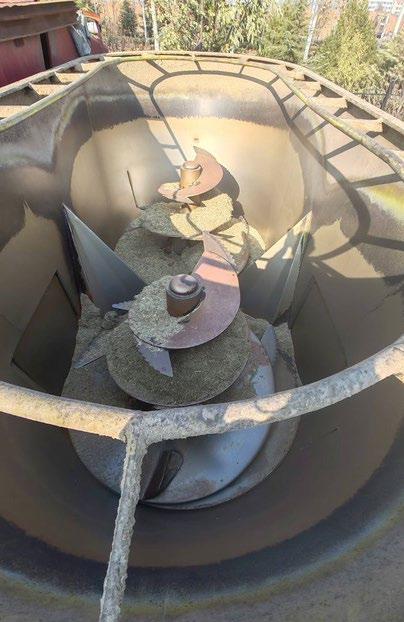
Asia Pacific’s first LNG bunkering for cruise passenger ships has successfully completed at Singapore Cruise Centre (SCC).
As part of this pioneering operation, TotalEnergies Marine Fuels delivered the LNG via the bunker vessel Brassavola to Silversea’s Silver Nova Brassavola is managed by V Ships and owned by Mitsui OSK Lines.
The LNG fuelling was the culmination of months of detailed planning and coordination amongst multiple stakeholders to ensure strict compliance with industry safety standards. This enabled passenger movements and ship operations to continue smoothly throughout the bunkering.
SCC CEO Jacqueline Tan says: “We are excited with this development given the growing number of dual-fuel LNGpowered vessels in the cruise industry. When we learnt of Silver Nova’s intention to bunker LNG, we took swift action to collaborate with TotalEnergies in bringing all parties together.
“As this is the first LNG bunkering for passenger cruise ships in Singapore, we needed to ensure that we were operationally ready for it. There were stringent protocols to be complied with by all stakeholders, guided by the Maritime and Port Authority of Singapore (MPA). This successful operation will pave the way for other LNG-powered cruise vessels to bunker at our HarbourFront Terminal.”
LNG can be used as a transition fuel that provides a practical and realistic solution to the global maritime sector as it moves to decarbonise in line with the International Maritime Organisation’s targets to achieve netzero carbon emissions by 2050.
Louise Tricoire, TotalEnergies Senior Vice President, Aviation and Marine Fuels, says: “TotalEnergies Marine Fuels is proud to contribute to this industry collaboration and to mark a key milestone in Singapore and the Asia-Pacific with respected partners.
“This achievement underscores the maritime industry’s collective drive towards lower-emission solutions
and the vital role of partnerships in accelerating the transition, and aligns with Singapore’s vision for a decarbonised maritime sector.
“As TotalEnergies pushes ahead in our ambition to achieve carbon neutrality by 2050 together with society, this feat strengthens our commitment to developing alternative fuels and solutions to help global shipping reduce emissions.”
Mario Moretti, Managing Director of V Ships Asia, whose Singapore office manages the Brassavola, comments: “Working closely with our partners at Mitsui OSK Lines and TotalEnergies Marine Fuels, V Ships provided the detailed planning over the past few months to enable Brassavola to successfully bunker LNG to Silver Nova
“V Ships’ wider experience in LNG bunkering is demonstrated by the professionalism of both our onboard team and the support network ashore. The achievement of this first LNG bunkering for a cruise vessel in Asia Pacific is testament to the whole team coming together and we look forward to continuing this partnership as we help our customers on their sustainability journeys.”
The debut of LNG bunkering at SCC’s HarbourFront Terminal is an extension of the LNG bunkering services that have already been available in Singapore for harbourcraft and commercial vessels since 2016, and positions Singapore Cruise Centre to support LNG-powered passenger ships calling in the region. This marks a major milestone in Singapore’s sustainability goals for the tourism sector.
Chua Yeng Hian, Director, Marine Services, MPA, says: “The successful completion of the first simultaneous LNG bunkering operation for a cruise vessel in Singapore reflects our collective effort and commitment to uphold the highest standards of bunkering safety and efficiency. As the world’s leading bunkering hub, Singapore will continue to ensure safe and responsible bunkering operations while supporting the industry’s transition towards a multi-fuel future.”
A car carrier with a capacity of 6,900 vehicles was delivered to Kawasaki Kisen Kaisha (K LINE) in February. The vessel is mainly fuelled by LNG and was constructed by Shin Kurushima Toyohashi Shipbuilding.
A naming ceremony was held on the day of the delivery, and the vessel was named Oceanus Highway by Kazuhiko Sumi, Managing Executive Officer of Mazda Motor Corporation (Mazda).
LNG fuel is expected to reduce emissions of CO2 by 25% to 30% and emissions of sulphur oxides (SOx), which cause air pollution, by almost 100%.
In K Line’s Environmental Vision 2050 -Blue Seas for the Future, the company has set the 2030 interim target of improving CO2 emissions efficiency by 50% compared with 2008, surpassing the International Maritime Organization’s target of a 40% improvement. Furthermore, it sets its new target for 2050 as ‘The Challenge of Achieving Net-Zero GHG Emissions’. As an action plan, it will continue to work on the introduction of new fuels that have a low environmental impact and take on the challenge of achieving the targets it has established.
Bound4blue has completed the installation of its breakthrough eSAIL suction sails on tanker vessel Pacific Sentinel with a streamlined single-stop process for Eastern Pacific Shipping (EPS) at Besiktas Shipyard in Turkey during a planned drydocking.
Three 22-metre, DNV type approved eSAILs were installed on the 50,000dwt Pacific Sentinel in under a day per unit, as planned. The installation took place during a scheduled vessel drydock, with preparatory work completed in advance.
The fully autonomous wind-assisted propulsion system (WAPS) will help the vessel reduce overall energy consumption with forecasted energy consumption savings of around 10% depending on vessel routing, slashing OPEX and emissions to air, while also enhancing regulatory compliance.
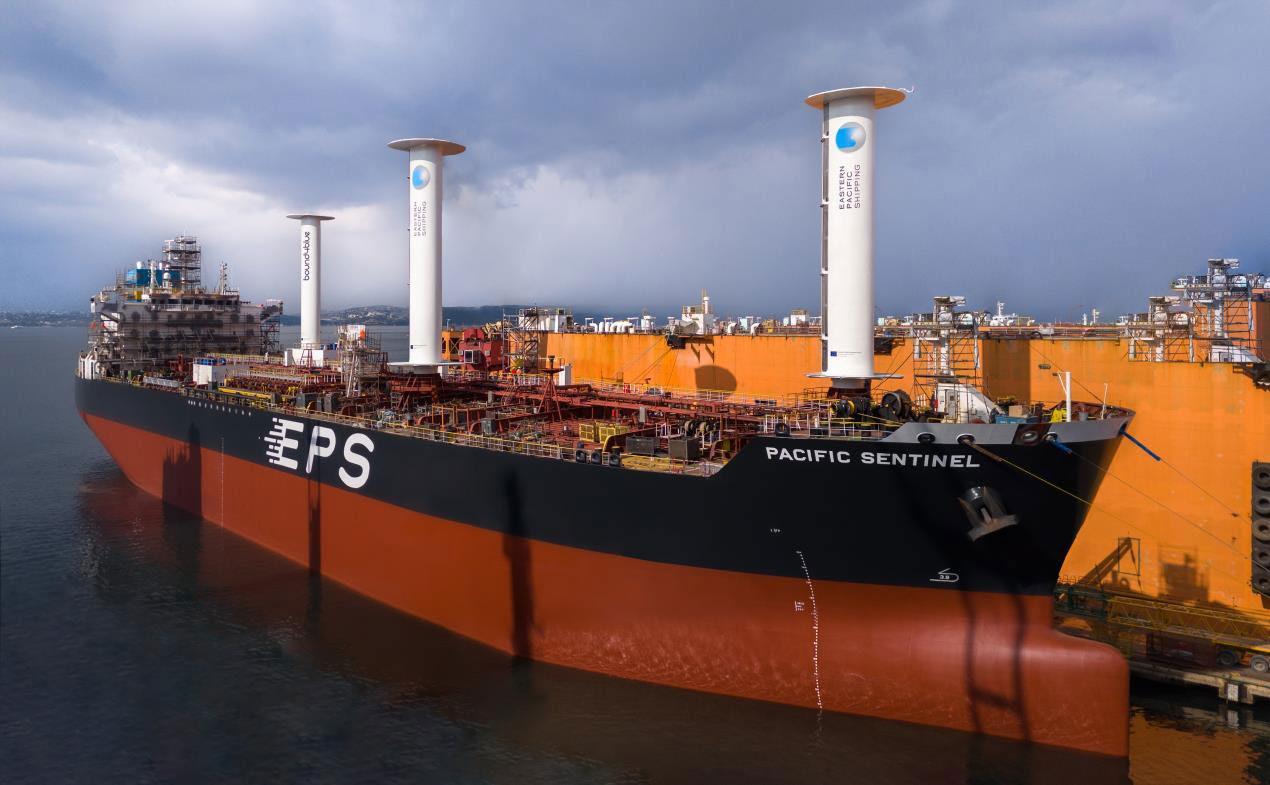
The installation heralds a landmark in numerous regards, signifying EPS’ first step into wind-assisted propulsion – as a continuation of its ambitious decarbonisation programme – while also marking bound4blue’s first tanker installation.
The Spanish-based wind pioneer has undertaken a fast-track ‘singlestop’ process, ensuring minimal vessel downtime with all work undertaken during planned vessel maintenance at the shipyard.
The fast-track, single-stop installation combined vessel groundwork, such as fitting pedestals for the eSAILs and welding, with the simultaneous preparation and programming of the sails. This efficient approach helped minimise installation time.
David Ferrer, Co-founder and CTO, bound4blue explains: “We’re committed to helping shipping companies, such as EPS, embrace clean, proven, wind power in the simplest, most cost efficient and effective manner.
“Thanks to our collaboration with shipowners, operators, shipyards, and other key partners in all installations carried out by bound4blue, we have achieved a quick, robust, and highquality deployment procedure. In this case, the vessel and sails were fully prepared in advance, ensuring they could be lifted and bolted into place without extending the planned time at the yard.”
Ferrer adds that the nature of the eSAIL unlocks further advantages for cost, weight savings and efficiency on what could otherwise have been a demanding task:
“The fact that this is an MR tanker creates unique challenges in terms of ATEX zones and air draft limitations, but the eSAILs simplicity is the ideal solution.
“It allows for non-EX-proof units, which streamlines the process, and reduces CAPEX, while their high performance achieves substantial savings without requiring excessively large sails, eliminating the need for tilting mechanisms and allowing for compatibility with the vessel’s existing air draft. It is, we believe, an ‘easy’ way for such vessels, and many other demanding shipping segments, to access the compelling commercial, regulatory and environmental advantages of wind power,” he says.
The installation was also completed in collaboration with the American Bureau of Shipping (ABS), ensuring compliance with the highest classification and safety standards.
Achieving a ‘wind-assisted’ notation played a key role in verifying the structural integration of the eSAILs with the vessel while aligning with regulatory frameworks such as the EU Emmissions Trading System (ETS), Carbon Intensity Indicator (CII) and FuelEU Maritime.
Bound4blue has installed its solution on five vessels, with many
more in its growing order book. EPS, which signed the agreement for the Pacific Sentinel in February 2024 and has now successfully completed this installation, further extended its collaboration with bound4blue in December 2024 through a new agreement for the installation of three eSAILs on an MR tanker under construction at New Times Shipbuilding in Jiangsu Province, China. This installation is scheduledfor late 2025.
Speaking of the collaboration with bound4blue, Mirtcho Spassov, Decarbonisation Manager at EPS, comments: “We are committed to reducing emissions across our fleet by embracing cutting-edge green technologies, including wind-assisted propulsion. We need the right partners to achieve meaningful impact, and we’ve found bound4blue, with their proven technology and solutions-driven approach, to be an excellent match.
“This successful installation is testament to our partnership, and we look forward to harnessing the benefits of wind propulsion in support of our drive to decarbonise. We look forward to completing our second installation later this year.”
The eSAIL units work by dragging air across an aerodynamic surface to generate exceptional propulsive efficiency. The technology is suitable for both newbuilds and retrofitting across the huge majority of vessel segments, including, but not limited to, tankers, bulkers, ro-ros, cruises, ferries, gas carriers and general cargo vessels.
eSAILs help shipping companies simplify compliance and achieve advantage, with regulations including EU ETS, CII and FuelEU Maritime, while offering a typical payback of less than five years.
Cummins Inc has received Approval in Principle (AIP) from DNV for its methanol-ready QSK60 IMO II and IMO III engines, available in power ratings from 2000 to 2700 hp (1491 - 2013 kW). The approval validates Cummins’ retrofittable methanol dual-fuel
solution for the global marine market, ensuring compliance with the highest standards of safety and performance.
Following extensive field testing, Cummins plans to launch the retrofit kits post-2028 to align with market demand and infrastructure readiness. Designed for diesel-electric systems, these kits can be integrated with battery technology to optimize efficiency and sustainability.
Dawn Wehr, Cummins Executive Director – Strategy, Product Planning and Digital, says: “Using a retrofittable solution dismisses the need for a major vessel overhaul and creates an immediate positive. With our continual work on developing solutions for other alcohol fuels, including ethanol, we are committed to providing solutions that work for different operations and fuel infrastructure availabilities to ensure ease of adoption.”
The approval builds on Cummins’ August 2023 announcement permitting the use of renewable diesel, such as hydrotreated vegetable oil (HVO), across its high-horsepower engine range. By leveraging renewable diesel in dual-fuel solutions, ship operators can make significant progress towards reducing carbon emissions.
“Cummins is committed to delivering innovative power solutions to the marine industry,” adds Gbile Adewunmi, Vice President of Industrial Markets –Power Systems Business.
“Through partnerships with our customers, we can drive solutions that meet application requirements, sustainability targets, as well as bridge the longer-term goal of zero emissions. This announcement is a strong example of the investment and technology advancements Cummins is making to further our Destination Zero strategy.”
Plans being drafted at the International Maritime Organization (IMO) risk creating a huge new market for deforestation-driving biofuels such as palm and soy, while also putting pressure on vegetable oil prices according to a new study
Nearly a third of global shipping could run on biofuels in 2030, new T&E analysis shows, up from less than 1% today. Under the current draft of the IMO green fuels law, this could actually exacerbate climate change and put pressure on global food supplies.
The study by Cerulogy on behalf of T&E shows that palm and soy oil would likely make up nearly two-thirds of the biodiesel used to power the shipping industry in 2030 as they represent the cheapest fuels to comply.
This poses a serious climate problem, warns T&E, as palm and soy are responsible for two to three times more carbon emissions than even the dirtiest shipping fuels today, once deforestation and land clearance are taken into account.
The fuel-intensive shipping industry would need vast amounts of farmland. 34m hectares in 2030 – the total area of Germany – will be needed to produce enough crops to meet the increased biofuels demand from the shipping industry.
This could have serious impacts on food supplies. Land that could be used for farming would need to be converted to growing biofuel crops, while burning vegetable oil in ships will deprive supermarkets of a staple food item.
300m bottles of vegetable oil could be diverted to powering ships every day in 2030, according to T&E’s analysis.
Constance Dijkstra, Shipping Manager at T&E, says: “Fuelling cargo ships with deforestation is a terrible idea. Burning crops for fuel is bad for the planet and bad for global food security. The IMO should consider the climate impact of bad biofuels to avoid doing more harm than good.”
Shipping companies such as MSC and CMA-CGM have invested in so-called waste biofuels like used cooking oil (UCO) and animal fats. But waste biofuels will likely be able to cover just a small proportion of shipping’s projected biofuels demand as their availability is limited.
“For example, a cargo ship travelling between China and Brazil would alone require the yearly waste oil from more than 2000 McDonald’s restaurants, while to run it on animal fats you would need more than one million pigs.”
Shipping companies, including the German shipping giant Hapag-Lloyd and a number of NGOs, have called on the IMO to exclude unsustainable biofuels from its list of green alternatives to traditional fossil fuels.
T&E calls on the IMO to agree on a clear definition of what constitutes a ‘zero’ and ‘near zero’ emission fuel, to exclude deforestation-linked biofuels, cap food-based biofuels and to incentivise green e-fuels made from green hydrogen.
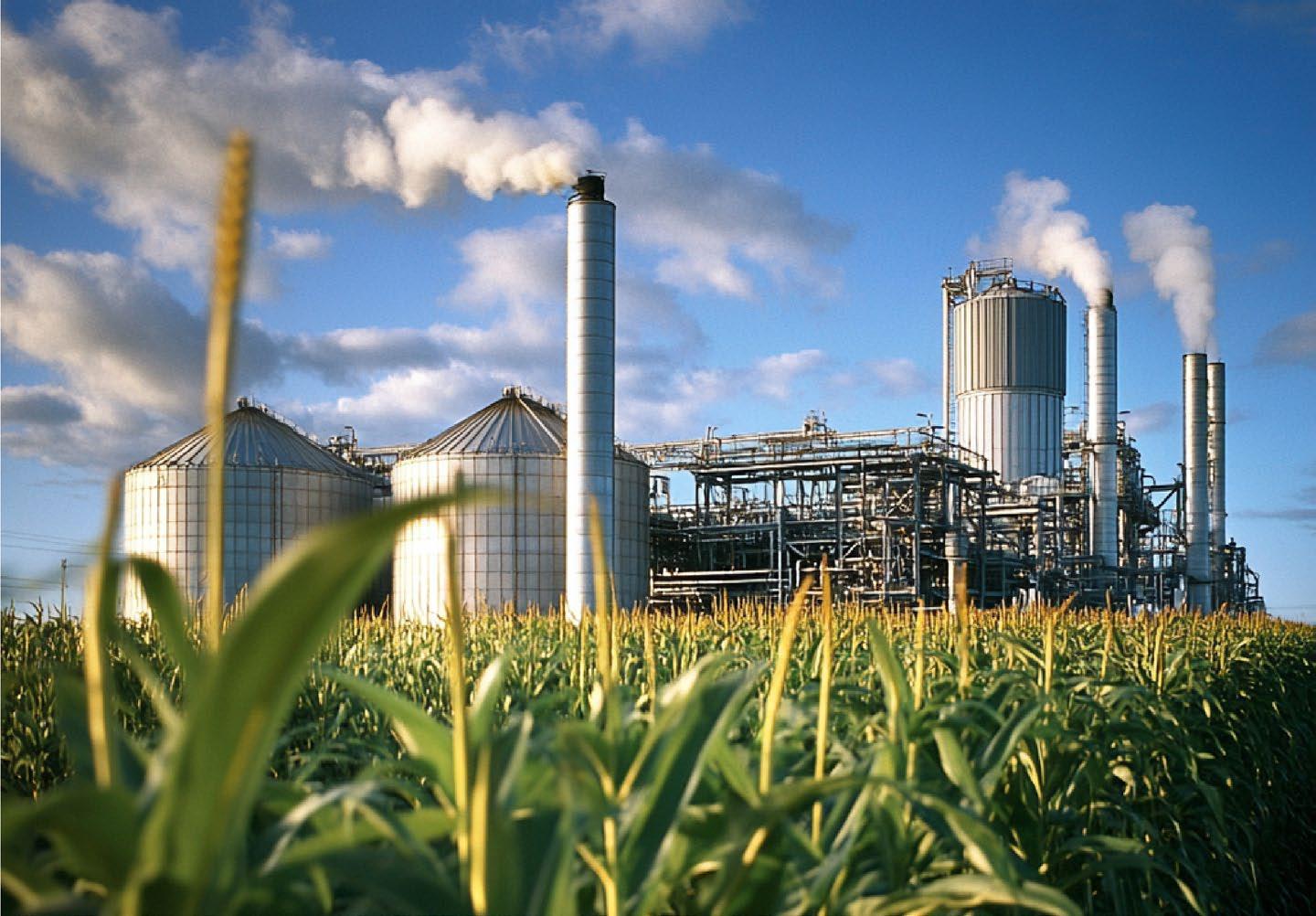

The latest high-tech solutions not only limit emissions, but save shipowners and operators time and money
The Switch, a key provider of innovative power electronics for the marine industry, has secured 50+ new contracts for its latest-generation The Switch DC-Hub, underscoring its growing popularity as a preferred power distribution solution for future-proof, flexible and lowemission vessels.
All but one of the orders involve battery solutions, ranging from plug-in hybrids to fully electric vessels, across a wide variety of ship types, including product carriers, ferries, Ro-Ro vessels, offshore vessels, cruise ships and containerships.
The contracts have been awarded via leading systems integrators. Importantly, more than 60% of end customers are European shipowners, with 50% located in Norway. This proves that The Switch DC-Hub fits seamlessly into the region’s strong push toward greener shipping and compliance with tightening emissions regulations.
“Our DC-Hub is all about efficiency, flexibility and future readiness,” says Teemu Heikkilä, Product Line Director, Power Electronics at The Switch.
“By designing optimal DC distribution for each vessel, we can improve efficiency. This leads to lower fuel consumption while increasing system redundancy. Batteries are the obvious driver for our DC-Hub because they perfectly complement each other.
“This combination ensures efficient utilisation of energy in every condition, reducing operational costs and the need for maintenance.”
The Switch DC-Hub is purposebuilt to do more with less – a design philosophy that helps shipowners simplify maintenance and improve overall system efficiency.
One standout feature is its plugand-play flexibility. Owners can easily connect batteries, fuel cells, shaft generators or even entirely new energy sources as they become viable. This makes it the ideal choice for vessels preparing to transition toward zero emissions.
“We’re giving shipowners a product platform that’s ready for anything the future holds. Whether it’s integrating advanced energy storage, switching
to green fuels or adding entirely new technologies, the DC-Hub is built to evolve along with the industry’s needs,” Heikkilä adds.
The Switch DC-Hub can provide:
» Fuel savings and lower emissions: by running gensets at optimal loads, the system cuts fuel use and emissions from day one.
» Space and weight savings: compact design frees up valuable space compared to bulky AC switchboards.
» Simpler integration: flexible, modular system works with batteries, fuel cells and generators –today and tomorrow.
» Redundancy and safety: independent connections to each power source increase system redundancy, enhancing operational safety.
» Future-proof design: evolving with future energy sources and regulatory demands.
“The key to sustainable shipping is smarter electrification products,” Heikkilä says.
“By combining our DC-Hub with our suite of ultrafast protection devices, we’re enabling vessels to achieve both immediate fuel savings and long-term future-proofing, positioning them for compliance in a rapidly evolving regulatory landscape.”
The maritime industry is bracing for the first large-scale verification of carbon credits to be surrendered to authorities under the EU Emissions Trading System (EU ETS). Transparency with real-time exposure tracking using accurate data is essential to manage compliance risk and avoid costly reporting errors, according to maritime data and technology firm OceanScore.
Shipping companies must submit by the end of March aggregated 2024 emissions data for more than 12,000 vessels that will determine the volume of EU Allowances (EUAs) to be surrendered later this year, bringing into sharp focus the complexities and risks of compliance management.
Potentially, this could lead to increased costs due to possible internal reporting discrepancies and disputes among stakeholders that could result
in an increased requirement for EUAs, compounded by higher EUA prices that have risen 50% over the past 12 months.
Furthermore, compliance costs are set to triple over the next two years as emissions liabilities to be covered under the EU ETS are scaled up from 40% last year to 100% in 2026. FuelEU Maritime adds another layer of complexity with an increased financial burden and risk of errors after being rolled out on 1 January this year.
“The way to manage this risk is transparency,” says Albrecht Grell, Managing Director of OceanScore. “Real-time exposure tracking, based on reliable data, is a necessity.
Continuously monitoring full-year outlooks, especially regarding a shipping company’s FuelEU exposure, will help avoid costly mistakes.”
Existing tracking portals provided by verifiers, automated applications and vessel performance management solutions may show total costs with the EU ETS and FuelEU, but fall short in several key areas.
They often fail to distinguish between commercial and MRV voyages, account for commercial and technical off-hires or integrate ensuing costs in the respective charter party clauses. Consequently, the actual financial impact of these regulations may not be properly reflected in a company’s profit-and-loss statement. This lack of clarity leaves shipowners, managers and charterers vulnerable to unexpected liabilities and disputes.
Determining costs accountability among the various stakeholders while incorporating such variables represents a further challenge, given the responsible parties differ under both regulations.
For the EU ETS, the shipowner is designated the responsible party but can delegate this role to the DOC holder – typically the ISM manager –while charter periods must be covered by the charterer in line with the ‘polluter pays’ principle.
FuelEU, on the other hand, makes the DOC holder solely responsible even though it affects the same vessels and charter relationships, with no regulatory enforcement of
cost-sharing agreements so the ‘polluter pays’ principle must be agreed at the contractual level. Spot market operations further complicate matters as compliance costs are often embedded in freight rates.
Standard accounting and reporting systems lack the capability to handle these complex inter-stakeholder relationships and compliance structures, which must be correctly mapped to properly determine a company’s exposure.
This can lead to a lack of visibility around off-hires that are typically not available from a verifier’s report, inconsistent invoicing due to inaccurate operational data and valuation issues as compliance ‘payments’ are not necessarily provided in Euros or Dollars tracked in a standard accounting system. For example, EU ETS obligations can be met with EUAs while, under FuelEU, cash can be replaced by pooling opportunities accounted for in tonnes of CO2e.
Grell says the burden of data generation from companies with large numbers of vessels, different operating models and multiple charterers with different clauses will quickly overwhelm Excel-based and other traditional tracking tools, especially with expanding regulation.
Therefore, he believes that a holistic approach to compliance management is needed through adoption of an Enterprise Resource Planning (ERP) solution that integrates operational and financial transparency to ensure companies can track compliance values – including USD/€, EUAs and CO2e balances – consistently and accurately.
“In the initial phase, running a parallel system to existing accounting software may seem excessive,” Grell notes. “However, as the number of vessels to be monitored increases and regulations evolve, the benefits in efficiency and transparency far outweigh the costs.”
OceanScore’s ERP-based Compliance Manager automates compliance tracking, ensuring complete and accurate vessel operational data, application of EU ETS and FuelEU clauses in charter parties, and correct invoicing. It also enables
companies to manage compliance balances effectively, even as EUA prices fluctuate.
The solution is rapidly gaining traction in the industry, having been adopted by leading global players like MSC, V-Ships, Tsakos, Döhle Group, Norbulk, Nordic Shipmanagement and others in the space of a year.
“Given growing regulatory pressures and accelerating digitalisation, we are seeing broader acceptance of ERP-based compliance solutions with an increasing speed of industry penetration,” Grell concludes.
Compliance assistance
Meanwhile, a collaboration agreement has been signed between classification society ClassNK and maritime data and technology firm OceanScore to link the latter’s integrated solution for ClassNK ZETA (Zero Emissions Transition Accelerator) that enables users and related stakeholders to access visualized MRV/DCS data.
Shipping companies using the ClassNK ZETA service will gain seamless access to OceanScore’s market-leading Compliance Manager under the agreement.
Compliance Manager helps to efficiently manage the commercial processes around the European emissions regulations and enhances risk management by providing comprehensive transparency.
Through this collaboration, data that has been submitted to ClassNK for verification will be transferred from ClassNK ZETA to OceanScore’s Compliance Manager. The data transfer will, once permitted by the customer, be automated and customised to secure real-time, appropriate and reliable processes.
“We are thrilled to further expand our network with a highly esteemed partner and global leader like ClassNK. This collaboration will provide further efficiency and transparency benefits to our growing customer base whenever they use verification services with ClassNK,” says Albrecht Grell, Managing Director of OceanScore.
The British International Freight Association (BIFA) has a new development in its programme of training: all-inclusive access to a range of bitesize eLearning courses.
This initiative is designed to provide full trading members with unlimited access to eLearning, giving opportunities for them to upskill their teams, and is all part of the membership fee.
BIFA Bitesize is a suite of eLearning that has been developed as part of BIFA’s ongoing commitment to provide a variety of training options, aimed at enhancing knowledge in areas critical to freight forwarding, customs compliance, and international trade.
The first rendition of BIFA Bitesize content features extracts from the existing BIFA Freight Forwarding and Customs Essentials courses.
Some of the key topics include: Preparing to Trade; Incoterms 2020; Inward and Outward Processing; Customs Warehousing; Classification; Returned Goods Relief; Paying HMRC, and Procedure Codes.
Additionally, a brand new Customs Declaration Service (CDS) Compliance course will be added to the platform very soon. The initial mandatory module, centred around an import home-use declaration, outlines potential consequences of compliance errors. Subsequent modules, which cover a range of regimes, will follow. These courses have been carefully curated to support both newcomers and experienced professionals in the industry, ensuring that all staff of all members have access to upto-date and relevant basic training to further support their professional development.
It also helps BIFA members to stay ahead in the fast-paced world of international trade and customs compliance, which is evolving constantly.
Carl Hobbis, Member Services Director at BIFA, who has management responsibility for the trade association’s training and development services, says: “We believe the inclusion of this eLearning platform
as part of the standard membership subscription of full members is a game changing move for a trade association in the sector.
“BIFA Bitesize is accessible via the BIFA member portal at www.bifa.org which provides full details on how to navigate the platform and access the courses.
“There are no limits on the number of learners per member that can be enrolled, enabling companies of all sizes to provide high-quality, flexible training to their entire teams.
Superior Industries., a US-based manufacturer and global supplier of bulk material processing and handling systems, has announced the launch of OptimizeU, an ondemand learning platform for the construction aggregates industry.
Designed to bridge the knowledge gap for a new generation of producers, OptimizeU delivers flexible, cost-effective training, empowering operators to study
real-world challenges and drive greater production.
With courses in crushing, screening, washing, conveying, and more, the platform offers 24/7 access to industry expertise, enabling producers to enhance their technical skills, expand product knowledge, and master best practices—all at their own pace.
Key features include:
» On-demand access: learn on your schedule, whether during a break, in the office, or from home. Short, focused courses fit seamlessly into busy workdays.
» Practical knowledge: courses address real-world challenges, from troubleshooting to understanding applications, with options for beginners and advanced users.
» Cost-effective training: optimizeU reduces the need for travel and classroom-based workshops, providing a convenient and affordable way to stay up to date.
“OptimizeU was created to meet the needs of today’s aggregate producers,” says Kristen Randall,
Training Coordinator at Superior Industries. “We understand the value of flexible learning in an industry where time and resources are precious, and our goal is to equip producers with the tools they need to succeed at any experience level.”
At launch, Superior has a catalogue of 60 courses with plans to expand by about 50 new sessions a year.
Courses include:
» Cyclone fundamentals: understand why cyclones are used, how the technology works, explore models, and gain tips for optimal performance.
» Conveying vs Trucking: compare pros, cons, and cost differences of these material handling methods to understand the best fit for your operation.
» Understanding Gradations: explore how gradations impact equipment performance, their role in equipment sizing and selection, and techniques for testing and analysis.
To explore the full course catalog and sign up, visit superior-ind.com/ou
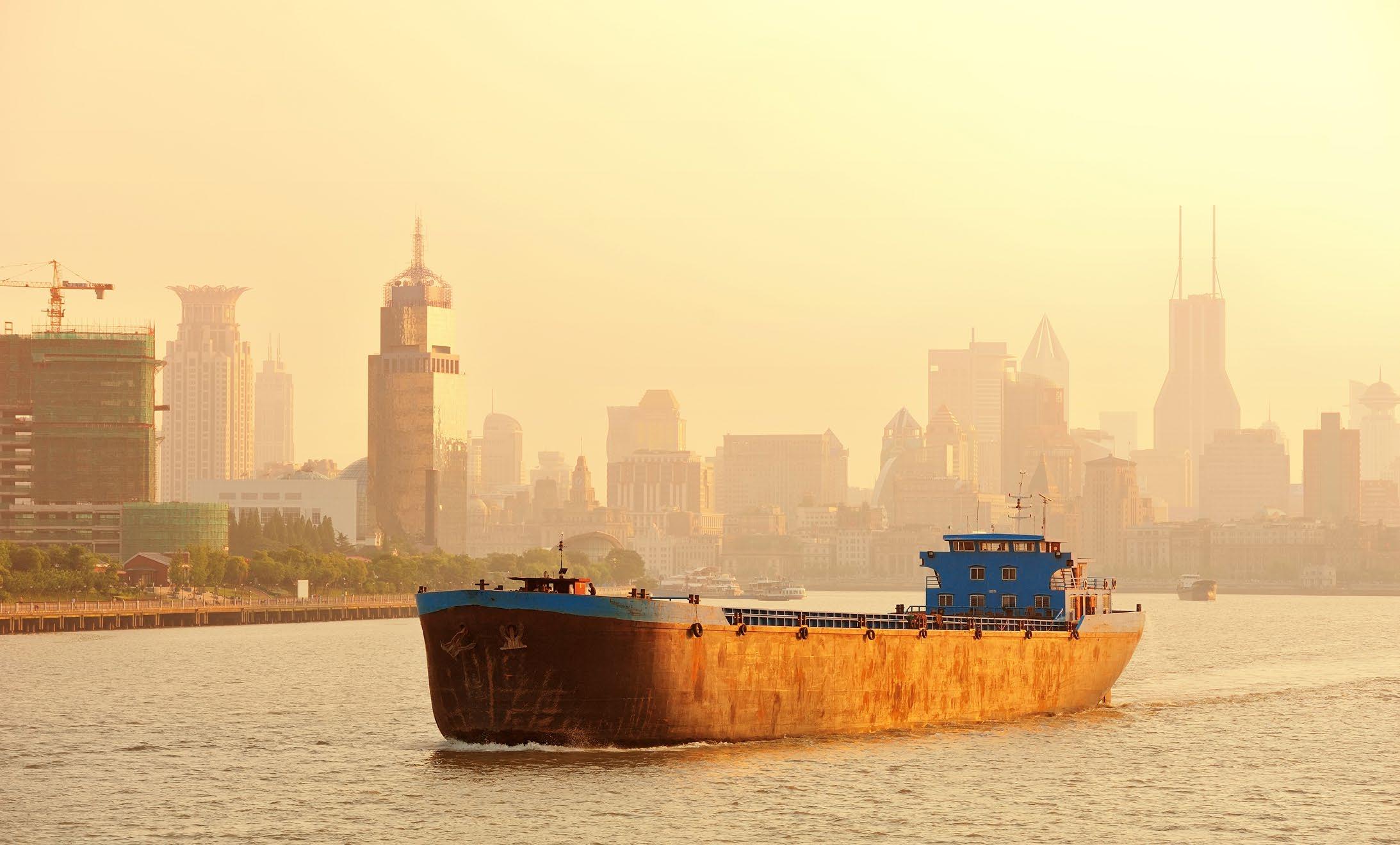
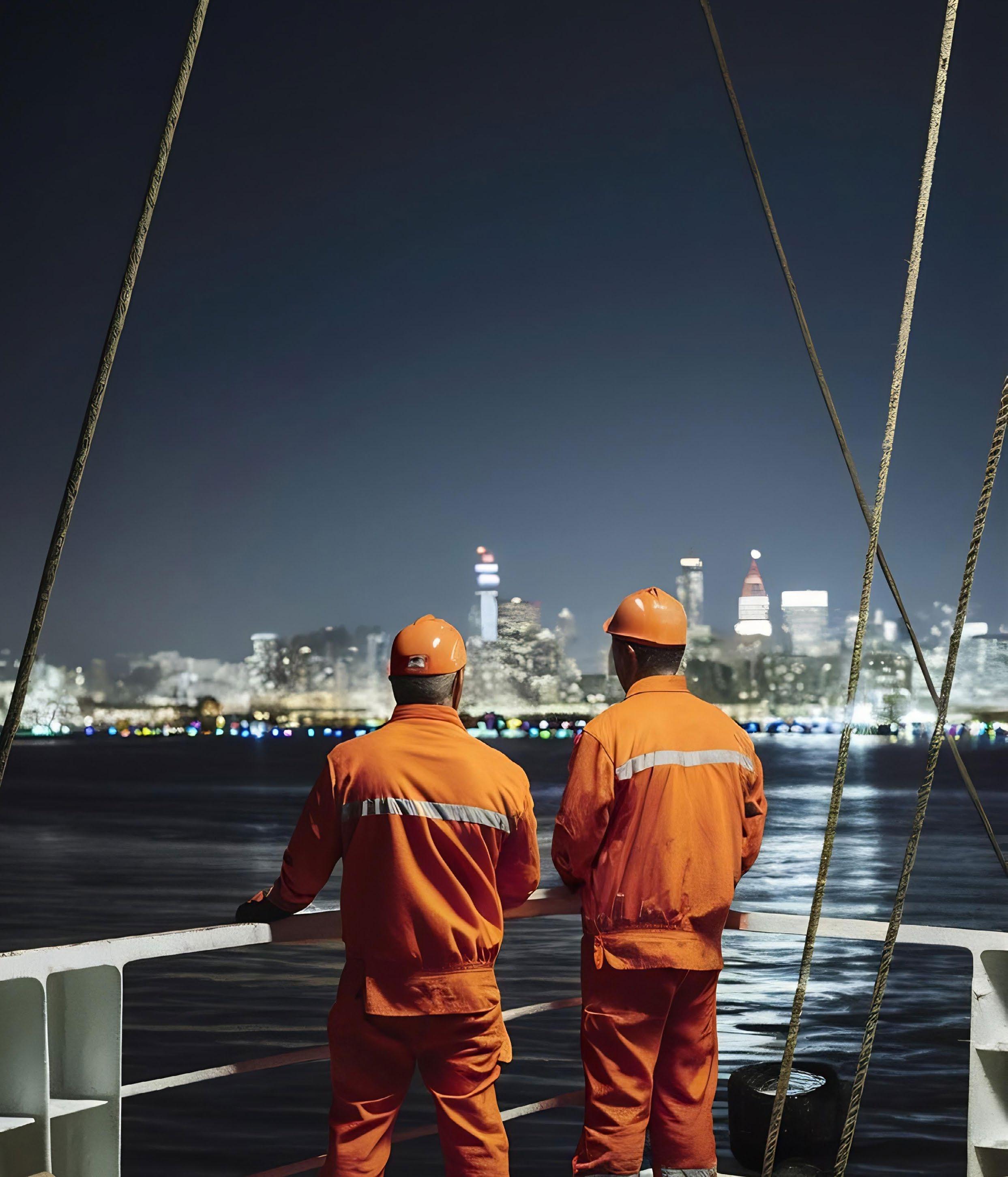
The latest Seafarers Happiness Index has revealed a drop in seafarers’ happiness in a number of areas – a reminder of the persistant challenges that industry workers face
The Mission to Seafarers has published the results of the latest Seafarers Happiness Index, which reveal a fall in happiness in several areas of seafaring life to 6.91 in Q4 2024, from 7.16 in Q3 of last year. This marks the first downturn for four quarters, with restrictive port policies highlighted as a significant impediment to seafarer welfare.
The Seafarers Happiness Index (SHI) is a quarterly survey conducted by the Mission to Seafarers, in partnership with Idwal and NorthStandard, and supported by Inmarsat. It provides vital insights into the experiences of the men and women who serve at sea, highlighting the areas most in need of attention and action. These findings underscore the critical importance of prioritising seafarer welfare to ensure a sustainable and thriving maritime workforce.
The results of the latest survey show that dissatisfaction is partly due to some ports not actively facilitating shore access. There is a growing perception that if a port is not proactive in supporting shore leave then it is acting as a barrier to it. Many seafarers report feeling isolated and frustrated due to limited shore access, poorly maintained facilities, and inconvenient transport options.
These challenges make it difficult for crew members to leave their vessels to rest and recharge, contributing to heightened mental strain.
These findings also highlight that while some improvements have been made in terms of interpersonal relationships and professional development, critical areas continue to undermine overall satisfaction and well-being.
Connectivity issues remain a major source of discontent. Although free wi-fi is often promised onboard, inadequate infrastructure means that connectivity is frequently unreliable or unusable. This paradox leaves seafarers struggling to stay connected with family and friends, further intensifying feelings of isolation and negatively affecting morale.
Seafarers shared their concerns over stagnant wages amid rising living costs. With many seafarers
feeling that their wages have not kept pace with inflation , or the increasing demands of the job, leading to growing dissatisfaction.
The results have also shown that training can present seafarers with both a positive and negative experience. On the positive side, many seafarers have reported access to quality mentorship opportunities, and professional development programmes, helping seafarers enhance their skills and stay up to date with industry standards.
However, the negative aspects of training are equally prominent, with many crew members expressing frustration with redundant training requirements, feeling that they are asked to complete the same courses repeatedly without gaining new insights.
Workload and fatigue remain significant issues, driven by long hours, inadequate staffing, and a rise in administrative burdens. Despite efforts to streamline processes through digitalisation, persistent paperwork continues to drain time and energy. This combination of factors is increasing fatigue levels, jeopardising both safety and well-being.
Social interaction on board is another area in need of attention, with high workloads often restricting opportunities for social interaction. This isolation is often compounded by departmental segregation, where crew members from different departments interact less frequently, further adding to the sense of disconnection. Addressing these issues could
“The decline this quarter highlights the critical need to sustain efforts to improve seafarer welfare”
significantly enhance morale, foster teamwork, and contribute to safer, more efficient operations.
Ben Bailey, Director of Programme, The Mission to Seafarers, says: “Shore leave is not a luxury, but as a vital opportunity for rest and mental recovery for seafarers. The decline this quarter highlights the critical need to sustain efforts to improve seafarer welfare and avoid complacency in addressing the challenges they face.
“We are committed to working closely with the shipping industry, including the ports sector, to overcome these challenges and enhance the well-being of seafarers. The SHI is a vital tool in this mission, and we extend our gratitude to all the seafarers who contributed to the survey.”
Thom Herbert, Idwal Crew Welfare Advocate, comments: “The Q4 2024 report is again a stark reminder of the persistent challenges facing seafarers today. Despite pockets of progress, the decline in overall happiness, especially related to shore leave and connectivity, underscores the urgent need for industry-wide reforms.
“We must listen to the voices of those at sea and address their concerns, from stagnant wages to isolation caused by inadequate port access. At Idwal, we believe improving these conditions should be the cornerstone for sustaining a thriving maritime industry.”
Yves Vandenborn, Head of Loss Prevention Asia-Pacific, NorthStandard, adds: “Once again, the SHI has offered powerful insights into the way shipping’s key workers think and feel about their lives at sea, and areas of potential improvement.
“With a change from 7.16/10 in Q3 to 6.91 in Q4 of 2024, this reflects the first decline in happiness levels since Q1 of 2024. The report reflects positively on onboard relationships, mentorship and professional growth opportunities. It is critical that we pay full attention to the views of those at the sharp end of shipping to recognise the positives and respond decisively to their areas of concern.”
To read the full Seafarers Happiness Index report for Q4 2024, visit: tinyurl.com/CSI-SeaHappiness
WiseStella, the Singapore-based maritime learning provider, has unveiled a pioneering crew wellbeing assessment tool that aims to change the way in which shipping companies address the increasing mental and physical health issues faced by seafarers.
Amid growing concern about workplace harassment, bullying, stress and fatigue, the Wise WellBeing module has been developed in collaboration with HR experts and psychologists to identify and address a number of important issues, ultimately enhancing seafarer safety, contentment and retention.
“Seafarers often operate in isolated environments with limited access to mental health support,” says WiseStella’s Chief Executive Officer Ferhat Abul.
“Many seafarers are reluctant to speak out about their struggles, particularly in cases of bullying and harassment. They need a voice under a cloak of anonymity that helps them, and their employers, take appropriate action. It’s about creating a proactive approach to seafarer wellbeing.”
The new Wise Well-Being module is unlike existing seafarer happiness or wellbeing indices in that it has been designed for direct use by shipping companies, rather than third parties, delivering more precise data that reflects their specific workplace conditions.
Through an interactive digital survey, with questions based on input from leading psychologists and health specialists, Wise WellBeing measures the physical, mental, social, and intellectual health of a company’s workforce.
“Responses enable HR teams to better identify problem areas and implement more targeted training and resources to foster a safer and more supportive, inclusive working environment. It provides shipping companies with an easy-to-use and anonymous platform to better understand the physical and mental wellbeing of their crews,” says Abul. WiseStella Board Advisor Dr Rafet
Emek Kurt, an expert in maritime safety and risk, specialising in the role of human factors in shipping, adds: “Bullying and harassment at sea are more common than many realise, but the hierarchical nature of the maritime sector makes it difficult for victims to report misconduct,” he said, referring to a case where a qualified and competent female crew member was refused permission to board her ship simply because of her gender.
A 2022 WISTA Survey found that 60% of female respondents experienced gender-based discrimination onboard ship, two thirds said that they had experienced harassment and intimidation from male co-workers, and one-in-four reported that physical and sexual harassment was common,
“Many seafarers are reluctant to speak out about their struggles, particularly in cases of bullying and harassment”
involving intrusions on their privacy.
“There are many cases where seafarers, male and female, experience verbal, psychological, sexual and physical abuse,” says Kurt. “This leads directly to poor mental health, potential lawsuits and reputational damage, and significantly increases the risk of accidents at sea.
“We need a safer, more inclusive industry, and have to address these
problems head-on by integrating anonymous well-being assessments and anonymous reporting procedures into the overall safety management system. Shipowners have a duty of care to improve the wellbeing of their seafarers.”
Yaren Cemre Gulcek, Clinical Psychologist at Parla Consultancy, emphasises the importance of addressing psychological distress at sea: “Through my work with seafarers, I have witnessed firsthand how prolonged stress, isolation, and workplace harassment take a toll on mental health and overall performance. Psychological distress at sea doesn’t just affect individuals, it weakens team dynamics, increases the likelihood of human error, and compromises safety.”
Gulcek says the Wise Well-Being module is a “crucial step towards addressing these challenges” empowering shipping companies with the tools they need to create a “culture of trust and psychological safety”.
Tineke Zoet, a certified transformational coach specialising in maritime workplaces, adds that effective leadership is paramount if the industry is to foster a safer, productive working environment.
“In my experience as a seafarer and now working closely with ships’ crews, I have seen how unmanaged conflict, cultural differences, and lack of psychological safety lead to frustration, stress, and even dangerous working conditions.
“It takes intentional human-centred leadership, clear communication, proactive listening, and support to create a more positive, inclusive environment where people can thrive. This will ultimately make shipping safer and more attractive to new entrants.”
Future developments will include direct access to mental health professionals, awareness training programmes, and personalised wellbeing recommendations based on survey responses. The company is also working with academic institutions to ensure that the platform is continuously updated and improved to meet seafarer and industry needs.
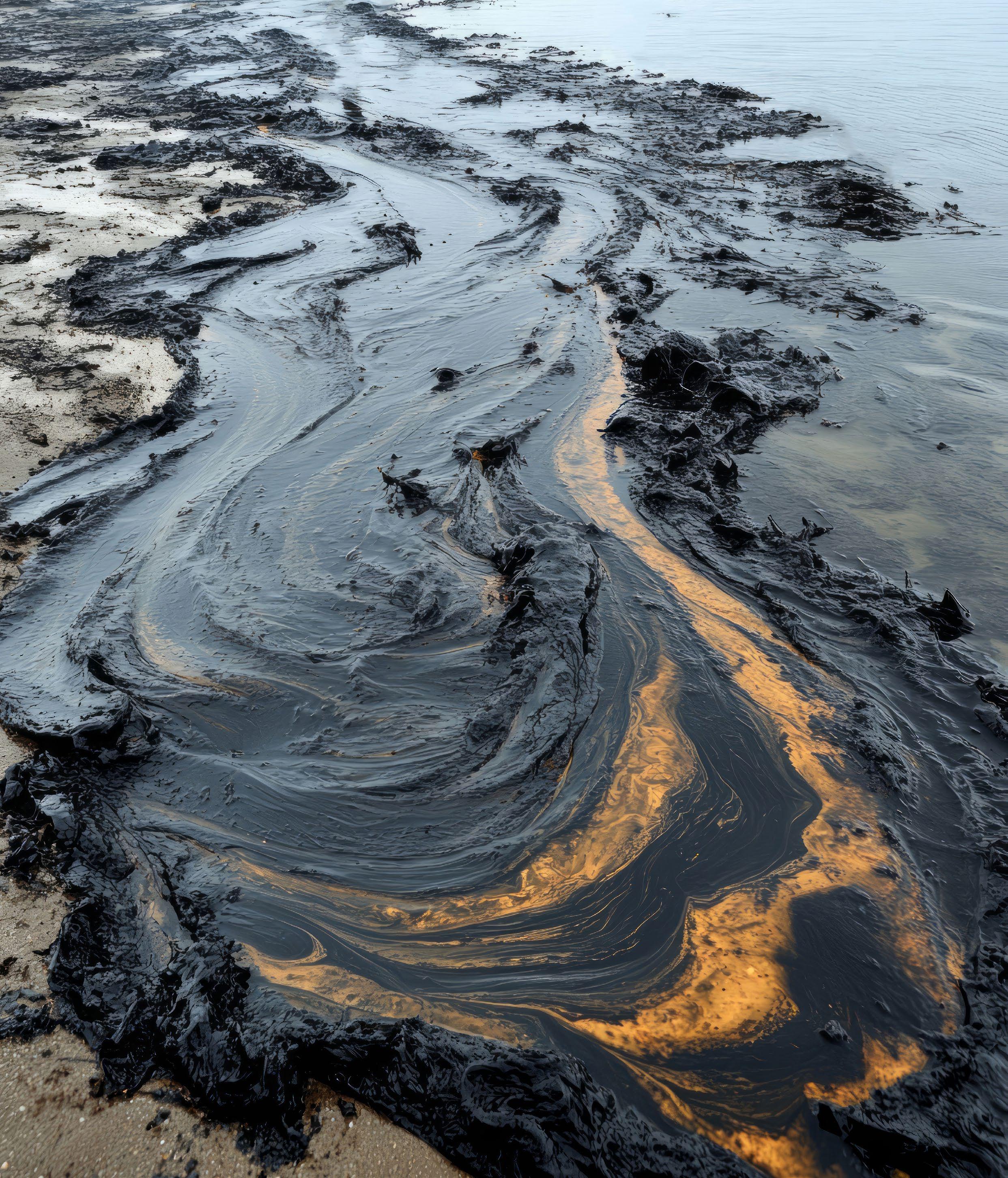
Managing and understanding regulation in the industry is of utmost importance when addressing the issues surrounding climate change
Countries have expressed their willingness to continue exploring common ground in negotiations for new binding measures to cut greenhouse gas emissions from international shipping.
International efforts to curb greenhouse gas (GHG) emissions from shipping took a step forward as the IMO’s Intersessional Working Group on Reduction of GHG Emissions from Ships (ISWG-GHG 18) recently concluded its latest round of discussions .
The IMO’s 2023 GHG Reduction Strategy commits Member States to adopting mid-term measures to reduce GHG emissions from ships in late 2025, including:
» a technical element, namely a goal-based marine fuel standard regulating the phased reduction of a marine fuel’s GHG intensity; and » an economic element, on the basis of a maritime GHG emissions pricing mechanism.
The Intersessional Working Group continued discussions on proposals for these measures, using the draft text for an “IMO net-zero framework” agreed at the last meeting of the Marine Environment Protection Committee MEPC 82, as the basis.
This draft text integrates inputs and proposals from Member States and international organisations on possible amendments to be made to the International Convention for the Prevention of Pollution from Ships (MARPOL, Annex VI).
These amendments, if adopted, would incorporate the proposedmidterm measures into the treaty, which has 107 Parties representing 97% of world merchant shipping tonnage.
The aim of thie discussions was to further develop and streamline the draft amendments to MARPOL Annex VI.
Key topics covered include global marine fuel intensity regulations, the economic mechanism’s structure, organizational and operational aspects of the proposed ‘IMO Net-Zero Fund’, revenue disbursement, and potential food security impacts.
The Working Group agreed to keep all proposals for an economic
element (GHG emissions pricing mechanism) under consideration and acknowledged potential “bridging options” suggested by some Member States.
Efforts will continue towarddefining amendments to MARPOL Annex VI that could achieve consensus approval at the next session of the Marine Environment Protection Committee (MEPC 83) on 7-11 April 2025.
Delegations reaffirmed their commitment to continue exploring possible ways to converge their positions and to find some common ground.
After reviewing the draft IMO netzero framework an updated version of the proposed MARPOL Annex VI amendments was prepared.
This version consolidates areas of agreement and introduces new possible bridging options for further discussion.
It will be annexed to the Group’s report to MEPC 83 as a “work-inprogress”, without preempting future changes, and will be further considered at the 19th meeting of the Intersessional Working Group (1-4 April 2025), ahead of MEPC 83.
Strengthened cyber-security legislation is coming into force in the EU, following the adoption of the Network and Information Security 2 (NIS2) Directive in January 2023. This builds on the EU’s existing NIS directive and requires member states to enact stricter cyber-security regulation backed by tougher enforcement.
For operators of critical industrial infrastructure, the legislation presents an opportunity to assess capabilities and operations against strengthened cyber-security requirements.
But for organisations that haven’t upgraded their cyber capabilities, it’s also a wake-up call on the need to act to better address cyber-security threats to their infrastructure, and to make sure that their operations comply with the NIS2 legislation.
DNV’s guide to NIS2 explores what the legislation means for industrial
companies in Europe and provides a three-step approach to compliance. For more information, visiti: dnv.com
The International Maritime Organization’s (IMO’s) Sub-Committee on Human Element, Training and Watchkeeping (HTW) has agreed on draft interim generic guidelines for training seafarers working on ships powered by alternative fuels andnew technologies.
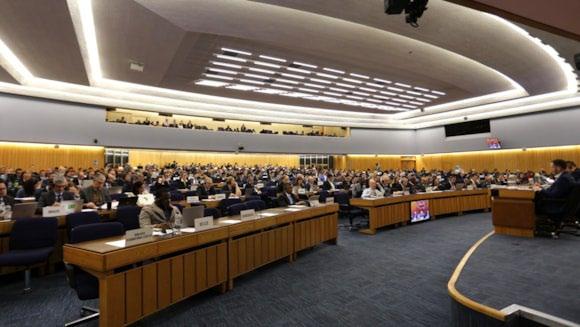
These draft guidelines will be submitted to the Maritime Safety Committee for approval in June 2025.
Meeting in London from 10 to 14 February, the Sub-Committee recognised the industry’s growing need for such guidance due to the increasing use of alternative fuels and the associated safety risks.
The Sub-Committee agreed that such guidance should be provided through:
» generic interim guidelines applicable across the whole industry and relevant to all alternative fuels and new technologies; and
» individual sets of fuel/technologyspecific interim guidelines, closely aligned with safety provisions developed by other IMO bodies. With the draft interim generic guidelines finalised, the Sub-Committee has now begun developing specific training guidelines for seafarers on methyl/ethyl alcohol-fuelled ships.
This effort will continue intersessionally under the Correspondence Group on the Development of Training Provisions for Seafarers on Ships using Alternative Fuels and New Technologies. The Correspondence Group has been tasked with developing interim guidelines for training
seafarers, including individual sets of guidelines for:
» the use of methyl/ethyl alcohol as fuel;
» the use of ammonia as fuel;
» hydrogen fuel cell powered ships;
» the use of liquefied petroleum gas (LPG) as fuel;
» the use of hydrogen as fuel; and
» battery powered ships. These will take into account existing interim safety guidelines for ships using methyl/ethyl alcohol, ammonia and LPG as fuel, as well as hydrogen fuel cell powered ships. The Correspondence Group will report on its progress to the Sub-Committee at the forthcoming 12th session of the Sub-Committee (HTW 12).
In addition the development of these interim guidelines for training of seafarers on ships using alternative fuels and new technologies, the SubCommittee addressed several other important matters:
» Completion of Phase 1 of the comprehensive review of the STCW Convention and Code, with a work plan agreed for Phase 2.
» Draft MSC resolution on the accessibility of information on seafarer medical certificates and recognised medical practitioners.
» Validation of revised model courses for seafarer training
» Reports on fraudulent certificates.
The UK Chamber has responded to the publication of the Government’s response to the Environmental Audit Committee (EAC) report on Net Zero and UK Shipping, echoing calls by the Chair of the EAC, Toby Perkins MP, for the government to release its decarbonisation strategy without delay.
The EAC recently published the government’s response to its predecessor Committee’s report on ‘Net zero and UK shipping’.
Alongside the response the Committee Chair, Toby Perkins MP, has written to the Transport Secretary. Calling for clarity from government on the publication of the successor to the 2019 Clean Maritime Plan, and warning that continued delays may
put at risk the UK’s leadership on maritime decarbonisation.
Commenting on the Government’s response, Peter Aylott, Director of Policy said: “We welcome the Government’s response and the EAC’s continued focus on the pathway to Net Zero for UK Shipping. We are proud to have led the way in calling on decarbonisation, and the UK Chamber was the first national shipping association to publicly call for the global shipping industry to reach netzero emissions by 2050, prior to the UK government and IMO Commitments.
We echo the Committee Chair’s calls for clarity from government on their strategic direction towards a net-zero future for the UK domestic and international shipping sectors, and will continue to work with Government to deliver our shared goal of a green, thriving UK Shipping sector. Key to this, we look forward to the publication of the government’s maritime decarbonisation strategy, as a muchneeded successor to the 2019 Clean Maritime Plan.
“Alongside a decarbonisation strategy, placing the net zero shipping at the heart of considerations in the upcoming Spending Review, will be essential in securing the green transition, and ensuring that the UK maritime sector does not fall
behind in reducing emissions. This should include a focus on investing in sustainable fuels, in parallel with other sectors such as aviation, and infrastructure investment in the grid, to ensure adequate capacity for shore power.
It is vital to provide the industry and investors with confidence to aid the sector in its drive to reach net zero. To achieve this, we need a multi-year plan, which creates a framework for public and private sector collaboration and a pathway for emissions reduction. With the right support, the UK could become a leading hub for green innovation and technology, creating increased opportunities for growth and employment within a green fuels supply chain.
On the recommendations regarding international efforts to reduce maritime emissions led by the IMO, he added;
“We welcome the focus from the Committee on the international nature of the shipping industry and support the government engagement in shaping the global agenda at the IMO.
As the IMO develops economic and technical measures for international shipping , the global primacy of these measures must be recognised, ensuring a clear and harmonised regulatory environment that supports both UK and global decarbonisation efforts.”

CarbonLeap uses external pooling carbon surpluses to support ‘compliance deficit shipowners’ to meet FuelEU Maritime rules
Fleet owners and operators with vessels that will be in surplus or deficit in 2025 “cannot afford to ignore” initiating pooling agreements prior to early 2026 deadline
CarbonLeap, a leading independent organisation for managing monetised carbon reductions in global transportation, has brokered first agreements to provide external FuelEU Maritime pooled surpluses to “compliance deficit shipowners“.
In one example, fleet owners opted to purchase surpluses from the external pool developed by CarbonLeap to meet with FuelEU Maritime compliance at the lowest possible cost and manage price fluctuation and FuelEU non-compliance risk. The agreement also offers volume flexibility to the deficit shipowners, providing additional peace of mind that they will not face penalties in light of uncertain ex-post volume calculations.
The Fuel EU Maritime Regulationis a complimentary regulation to the EU ETS, ensuring that the greenhouse gas intensity of fuels used by the shipping sector will graduallydecrease over time.
External pooling merges third-party vessels with over-compliance and those in compliance deficit, enabling unrelated ship owners to meet emission regulations cost-effectively.
CarbonLeap’s external pooling support solution means owners and operators can achieve compliance, circumventing potential difficulties with procuring low-carbon fuels.
The deals provide pooling price, volume and compliance certainty to the deficit vessel owners, meaning they can continue operating their fleets on a business-as-usual basis across all served routes, even those where alternative fuels are limited ortoo expensive.
With no concerns about swings in the price of alternative fuels and other abatement costs, the vessel owners
can confidently pass compliance costs on to customers at a sustainable fixed price and volume.
Commenting on the deal, Guido Levie, Co-founder of CarbonLeap, says: “Vessel owners cannot afford to ignore FuelEU Maritime. With the right deal on FuelEU Maritime external pooling, deficit vessel owners can buy time to develop their strategies in preparation for the significantly larger 6% reduction in carbon intensity planned in the FuelEU Maritime regulations in 2030.”
For all operators, FuelEU Maritime’s external pooling mechanism buys time to organise and run trials of new and alternative fuels and means they avoid paying a penalty for each tonne of very low sulphur oil equivalent energy their vessels use.
“While many larger operators have already rushed to create internal FuelEU Maritime pools to offset surpluses with deficits of their discretionary managed vessels, owners of external non-compliant vessels have been late or reluctant to sign up. This is a mistake.
“Vessel owners that move early will be able to secure more volume flexibility from surplus sellers, while the cost of external pooling is expected to increase as the deadline for FuelEU
“The shipping industry shows its traditional hesitancy in the face of the new and different”
Maritime compliance approaches in early 2026.
Levie continues: “Deficit vessel owners need to move fast to secure flexibility in their pooling agreements. Flexibility will be a vital commercial and operational advantage for vessel owners if they are uncertain about exactly how much surplus they will need.
“Frankly, free optionality in pooling agreements will not last forever. While the shipping industry shows its traditional hesitancy in the faceof the new and different, first movers on FuelEU Maritime pooling stand to gain the most.”
CarbonLeap’s experience and expertise in voluntary and mandatory carbon markets was essential to delivering agreements to meet their client’s needs, as the team brought insight into external pooling deals across the market that the clients could not get by talking to one or two pool providers alone.
As an independent market maker and broker working with partners to provide access to a external pools of highly quality over-compliant vessels, CarbonLeap is ideally placed to support deficit vessel operators seeking lowcost flexible compliance in 2025.
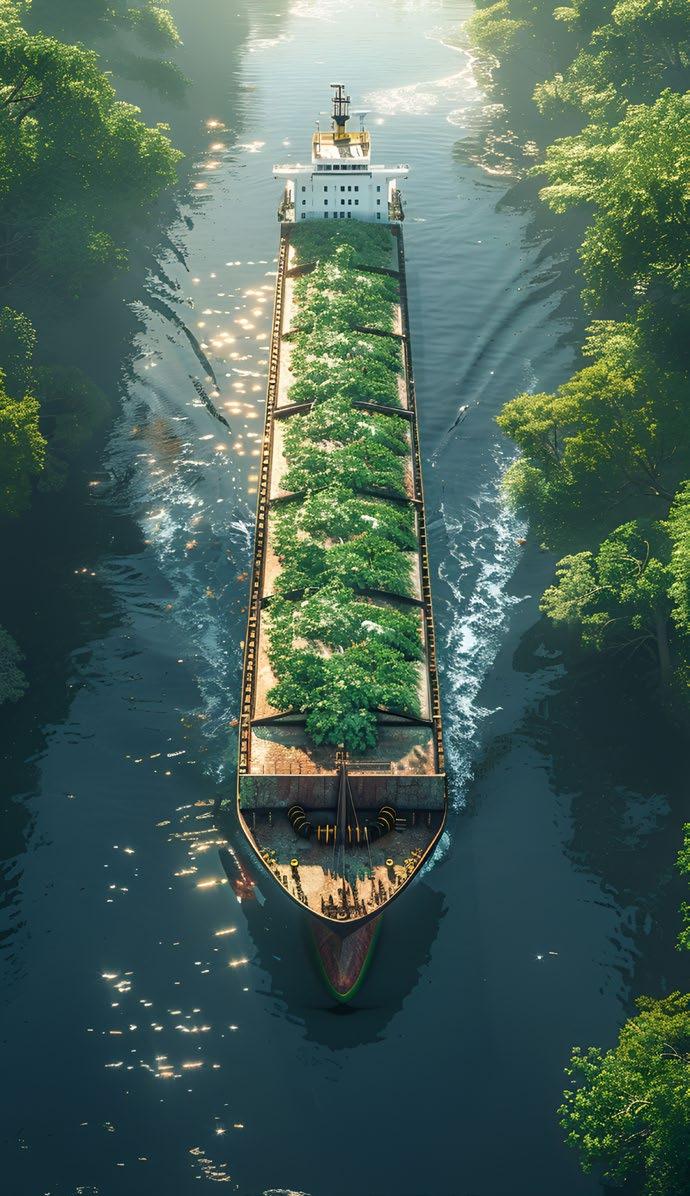

Following Cyclone Zelia’s impact on Australia, CJC Director Allen Marks and Associate David Fittis assess the early 2025 trend and what this might mean for the shipping industry, with particular focus on the potential for Force Majeure declarations
As widely reported, the category 5 Cyclone Zelia recently hit the Western Coast of Australia, causing Port Hedland to close for three days. While affected ports have now reopened, this was the latest in a wave of tropical cyclones to impact Australia to date in 2025.
In Australia, Dampier Port and Cape Lambert have also been forced to close already this year.
Force Majeure – the impact of severe weather
Parties are likely to be unable to fulfil their contractual obligations as a result of cyclones, or similar severe weather events, and most charterparties will incorporate a Force Majeure clause in anticipation.
These clauses will state that a party shall not be considered in default or breach of its obligations under the charterparty as a result of certain specified events. Consequently, when such severe conditions are experienced, Force Majeure declarations may naturally follow.
As a matter of English law, there is no general doctrine of Force Majeure and most such clauses are designed as exceptions clauses (to absolve a voyage charterer from paying demurrage). Most, if not all, Force Majeure clauses will account for weather phenomenon such as storms. Careful consideration must be given to
the exact wording of the Force Majeure clause, on a case-by-case basis, by the party seeking to invoke it.
The burden of proof lies with the party relying on the clause and they should always be alive to the fact that the clause might contain a “reasonable endeavours” provision which compels reasonable steps to be taken to minimise any impact of the event.
With reference to recent closures at Australian ports, a charterer under a voyage charter might seek to declare Force Majeure in respect of an inability to discharge cargo within the laytime, or an owner might be unable to deliver a vessel into service. Likewise, sales contracts may be unable to be fulfilled if cargo was to be loaded or discharged at an affected Australian port. Undoubtedly, in the year to date, a raft of such declarations will have occurred.
Consideration must also be given to the timeframe within which the relying party must issue its declaration of Force Majeure. A specified number of days, or “as soon as possible”, may be stipulated contractual requirement to be permitted to rely on force majeure.
Careful consideration of factual evidence is imperative to build a picture of the causative factor at the material time. With the passage of time, the causative nature of a Force Majeure event may diminish, i.e. congestion will occur and an owner
might reasonably point to that being causative of delay rather than the initial Force Majeure event. CJC is experienced in these contentious matters and offers a round-the-clock service to advise.
Should the early 2025 trend continue, the industry can reasonably expect Force Majeure declarations at affected ports. Some prudent first-instance steps are:
» Collate and preserve all factual evidence for consideration.
» If issuing a declaration of Force Majeure, firstly consider whether the event upon which reliance is placed is defined as a Force Majeure event in the clause and issue the declaration as soon as possible, always bearing in mind the timeframe stipulated within the contract.
» If seeking to object to a Force Majeure declaration, consider the evidence and the causative event. Often, multiple events will occur at a port or on a voyage – when considering a Force Majeure declaration, always consider the facts. Although a Force Majeure event may have previously occurred, it may not always be the causative factor for a failure to perform contractual obligations.
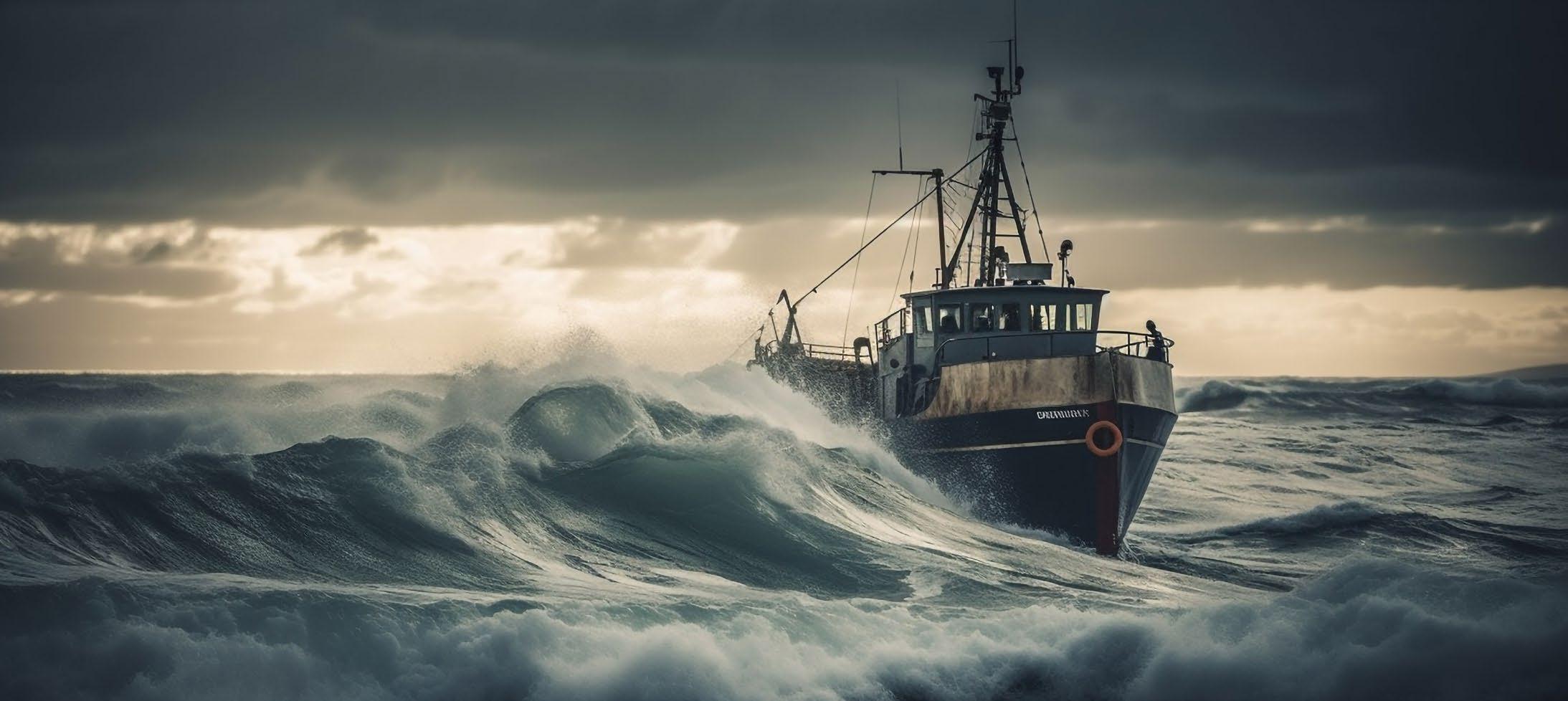
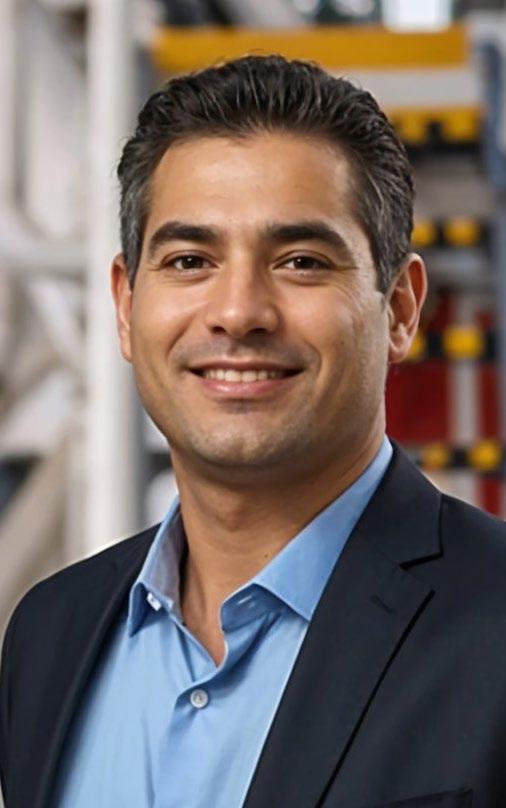
One of the key elements about the use of artificial intelligence (AI) in the shipping industry is to what extent it can improve the onboard safety experience. We talk to Osher Perry, Chief Executive of ShipIn about his experience.
After 10 years at sea and seven or eight years in tech in industrial environments, Osher Perry realised that the tools that had been used successfully in almost any industry had not been used in the maritime industry for ships and crews.
This realisation came after many years of experience in the industry. After years at sea as chief officer, he then came ashore with a brief to develop tech solutions based on AI in industrial environments, manufacturing and agriculture.
Today, his Boston, Massachusetts-based company, ShipIn, aims to create information and higher levels of safety and collaboration between ship and shore. When compared to other industries, for example, a plant manager in a $100m plant versus the master of a $100m ship finds the gap between performance and management safety tools is pretty wide.
Over the past few years, ships have become significantly bigger and with additional regulation now in place as far as fuel efficiency and carbon emissions are concerned and new machinery and new fuels, vessels by virtue of their size are carrying more risk and more cargo than ever before.
Looking at seafaring trends, additional people are not being added to crews to cover these new risks. On the contrary, crew members are being reduced in numbers. In view of the new tasks being undertaken, the question is how the risks can be managed effectively.
“How do we make the systems more efficient and how do we automate some of these tasks and manage risk properly and, from that perspective, with the tools that we have brought into the industry,” Perry asks.
He says that the company launched a platform just over two years ago and it already has about 50 managers and owners on board so growth has been very rapid.
Within their portfolios there are more than 2,400 vessels. The company is bringing AI to its vessels first and foremost by creating an analysis. AI is introduced on board by video, with more than 10,000 hours of video every month. This is a source of data that has not been addressed before, says Perry, and with AI it is possible to overlay the analysis and artificial intelligence on that field. The system then knows what needs to happen and in any hazardous conditions that the vessel undergoes, the AI system can provide modifications on board to handle safety and security.
In heavy weather conditions, at different hours of the day or in different regions, the system can help those on board. The company policies, the weather and AI systems all feed back to the master, who can consequently improve performance based on real information and data driven action. Data analysis is also possible to benchmark performance. A dry bulk captain can therefore assess how his performance compares with the rest of the fleet, for example.
All this happens in a dynamic, and nonbiased way. With these interactions, which are automated, it is therefore possible to seamlessly connect a ship to the shore and provide not only safety information, but also guidance about operation of machinery, for example.
India has mandated the use of cameras and recommended the use of AI on video aboard its vessels. The country not only sees a large number of vessels visiting its ports on a yearly basis, but is also one of the largest seafaring countries globally.
The Director General of shipping in India has mandated the use of cameras, both on vessels that are flagged in India, but also others that are spending a significant
amount of time in Indian waters. They advocate the use of AI to give notification of what is happening on board, as well as to notify shoreside facilities.
Perry says that a year ago, the US Congress passed a bill to mandate cameras on board vessels as part of the Safer Seas Act (SASH). In Australia, cameras have been mandated on board vessels at Port Hedland for mooring purposes. Singapore is looking at similar measures, so this is clearly a trend in the industry.
There are issues that need to be addressed, notably the efficacy of such measures and privacy. It is very important that any system put on board a ship is fully GDPR compliant, Perry explains. There are regulations that must be adhered to.
There are also many issues and incidents at sea where seafarers find themselves in situations that they are not comfortable with, in cases where they may be overloaded with work.
One of the most important factors is ensuring that the system is serving the crew and not obstructing them when they are trying to do their job. Perry explains that these measures take in those parts of the ship where the industrial working environment predominates and in machinery spaces where there may be smoke to contend with, for example, or in spaces on deck where cranes and other machinery are being operated.
“Without proper knowledge and without the proper source of truth, you are unable to improve ships’ design,” says Perry. “This goes for the procedures and processes and how people are doing what they are doing.”
There is a culture, he says, of hiding from the issues to avoid blame, rather than learning from opportunities. There continue to be cases where people do not follow safe practices on board ships and suffer injury or death as a result, despite all the correct procedures being in place to prevent this from happening.
By bringing different vessels on to the company’s platform, it is possible to assess whether the same procedures are being used in all cases – and very often this is shown not be the case.
The system will provide a risk score and, Perry says, the key thing is then to provide the right tools to the people who are operating on the vessels.
Every vessel is ranked on the company’s system and there will be a “rainbow of levels of operation” he says. With that level of knowledge, captains of vessels can improve operations in a short space of time and it is possible to see how the fleet is unifying its levels of performance.
Existing levels of ability vary from one vessel to another, Perry says. Senior crew members are being trained to use the company’s new procedures before other crew come on board.
“How do we make the systems more efficient and how do we automate some of these tasks and manage risk properly and, from that perspective, with the tools that we have brought into the industry”
The company is working with more than 50 different operations spread across container, tanker and dry bulk operations. Charterers and insurers are also assessing the system, he says. Shareholders in ShipIn include underwriters to the industry. “We are moving forward on loss prevention and risk profiling across the fleet in a very measurable way,” says Perry.
The system is successfully up and running and the company is continuously developing and releasing new modules and capabilities and new integrations of different sources of data into the platform. There are large numbers of owners and managers who have come on board, including from Greece and Germany, Norway, the UK, Singapore and Hong Kong, to name a few.
“We operate in every hub of the industry and on all kinds of ships,” Perry says.
Currently, ships are evenly distributed between tankers, dry cargo and container ships. Recently, more offshore vessels, ferries and car carriers have come on board.
The ability to notify of changes in thermal conditions to ensure the crew are aware of them is one thing the company can assist with. Security issues can also be covered to notify of danger points, as well as decriminalise crew members who can often be blamed if something goes wrong or dangerous or illegal substances are detected.
“We all recognise that risks exist, but the question is how quickly action can be taken to mitigate those risks” says Perry.
Having mature solutions that can yield results within a short space of time is critical, he explains. The company is pushing forward with data-driven action. It is not a question of a campaigning on safety, but the operation of the vessel and what the gaps are. Now AI can be applied to analyse all the information, as well as provide pathways for improvement.
The company recently released analysis of the correlation between the incidents and the fleet vision of the system. It demonstrates that the system identifies the least wellperforming vessels as carrying 5.7 more potential accidents than the top performing vessels.
It is not possible to put everything on the shoulders of the shore teams, but it is more a question of empowering the team on board the vessel with automated tools to do what they need to do.

CMA Shipping
1-3 April 2025
Stamford cmashippingevent.com
Maritime Decarbonisation Conference Asia
2-3 April 2025
Singapore rivieramm.com
Sea Trade Miami
7-10 April 2025
Miami seatradecruiseevents.com
Net Zero Maritime 2025 Conference 23-24 April 2025
Gothenburg shipuniverse.com
6th International Conference on Smart and Green Technology for shipping and maritime industries (SMATECH 2025)
24-25 April 2025
Sutton, UK asranet.co.uk
Oman Maritime Ports and Energy Forum
28-30 April 2025
Muscat, Oman petrospot.com
Argus Europe Carbon 12-14 May 2025
Nice argusmedia.com
Maritime Week Americas 20-22 May 2025
Tampa petrospot.com
Breakbulk Europe
13-15 May 2025
Rotterdam Ahoy europe.breakbulk.com
Nor Shipping 2025 2-6 June 2025
Oslo maritimeindustries.org
GreenTech 2025
9-11 June 2025
New Orleans green-marine.org
Gas, LNG & The Future of Energy 2025 10-11 June 2025
London shipuniverse.com
Ship Energy Summit 11-12 June 2025
Barcelona petrospot.com
TOC Europe
17-19 June 2025
Rotterdam Ahoy tocevents-europe.com
Global Maritime Industry Expo
25-26 June 2025
Hamburg decarbonizingforum.com
INMEX SMM India 2025 10-12 September 2025
Mumbai shipuniverse.com
Breakbulk Americas 15-17 October 2025
Houston americas.breakbulk.com

The Maritime Association Management Company (Maritime AMC) provides comprehensive secretariat services for trade associations operating across all sectors of the global maritime and offshore industries. When it comes to entrusting the management of your association to a specialist services provider, we are your ideal partner.
Whether your association is a fledgling or established entity, Maritime AMC has the expertise to ensure growth, develop your association and influence regulatory and media agendas on behalf of your membership.
Our directors have extensive maritime industry and trade association expertise, with demonstrable successes in association governance, publishing, conference production and communications. We speak your language and understand the maritime world. Maritime AMC currently provides full secretariat services to the Association of Bulk Terminal Operators (ABTO) and previously to the Clean Shipping Alliance 2020 (CSA 2020).


Maritime AMC Ltd 35 Beacon Drive, Newton Abbot
TQ12 1GG
T. +44 (0) 1626 681103 E. info@maritimeamc.com

Stay ahead. Stay compliant. Stay efficient.
Compliance should not disrupt your business. Partner with us to navigate regulatory challenges and optimize the performance of your fleet. Whether you are investing in new builds or retrofits, with Ecospray’s EGCS and Carbon Capture solutions, you can reduce pollutants and lower your carbon footprint.
Turn compliance into a long-term advantage with our Service and Training programs that ensure your team operates with confidence and efficiency.

Decarbonization
Carbon Capture with Amine | Carbon Capture with Calcium Hydroxide | MCFC Pollution Containment
EGCS | DeNOx SCR | Methane slip reduction | WESP Discover our Technologies for the Planet